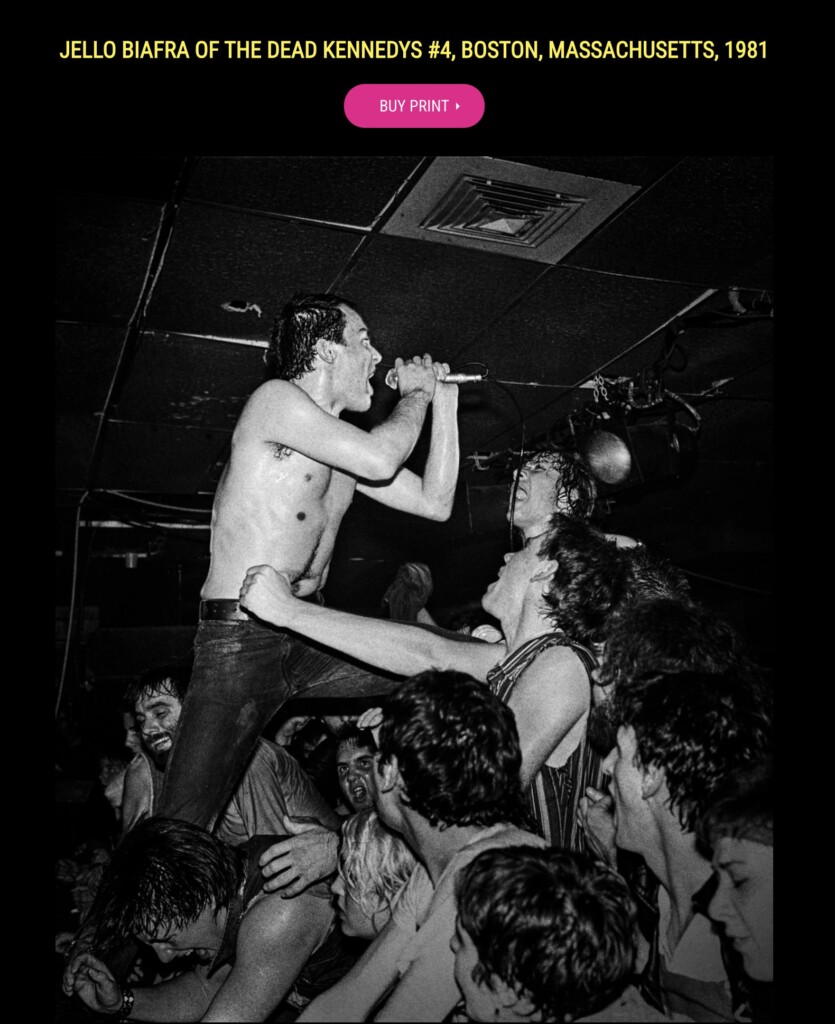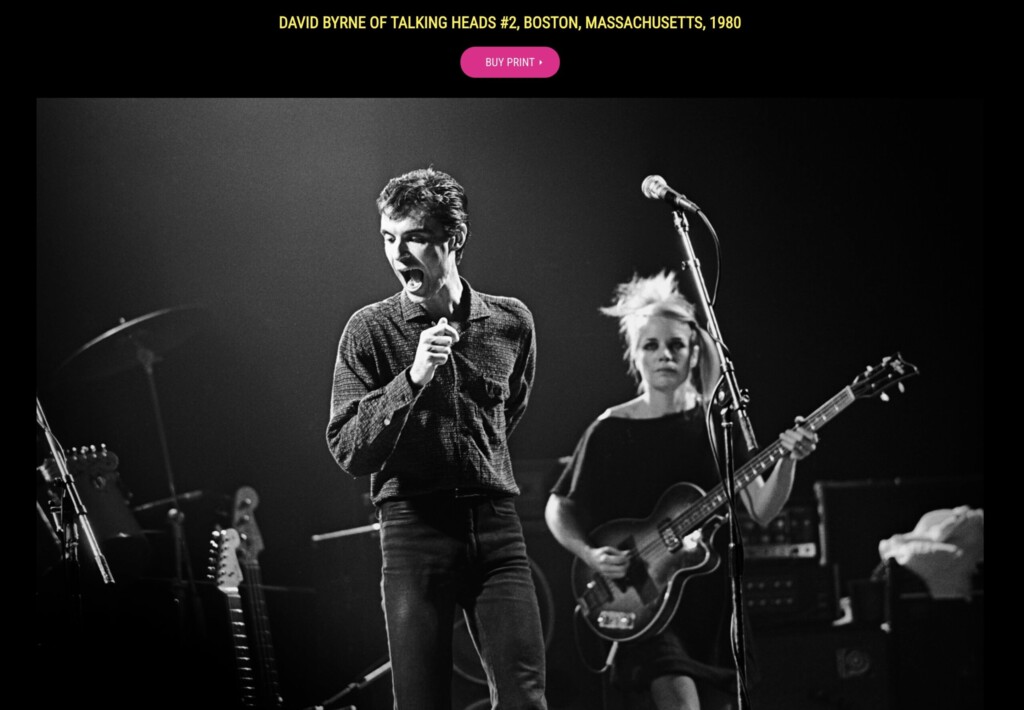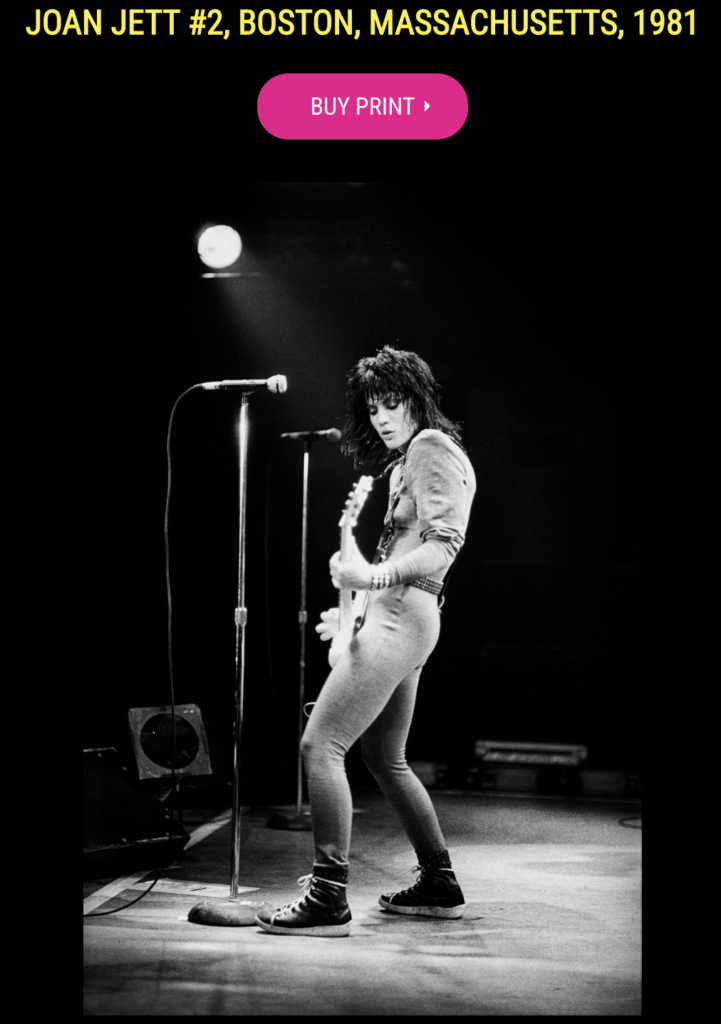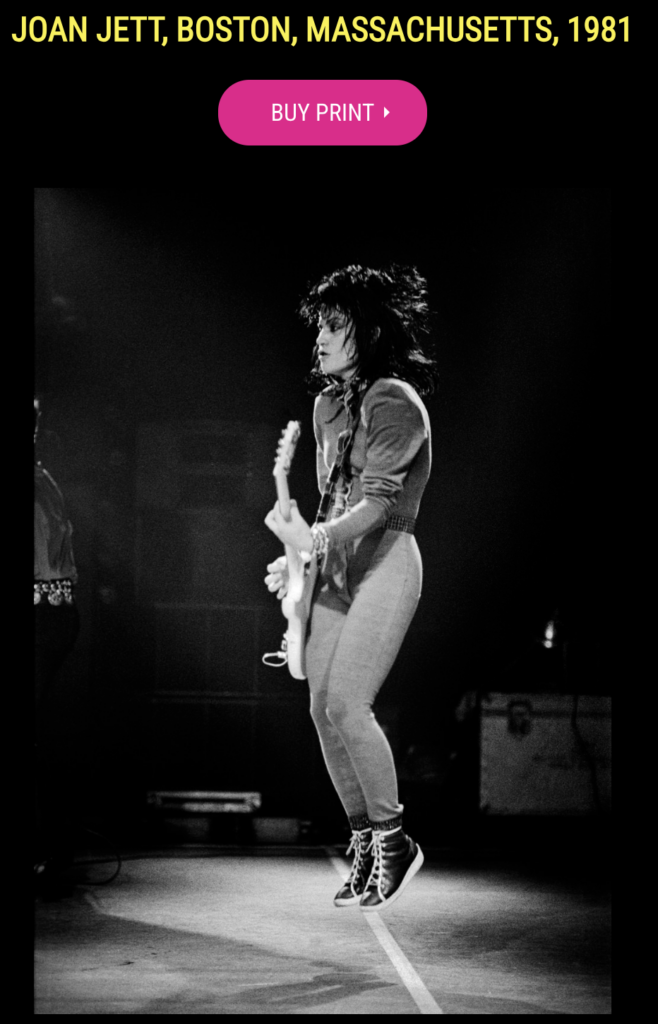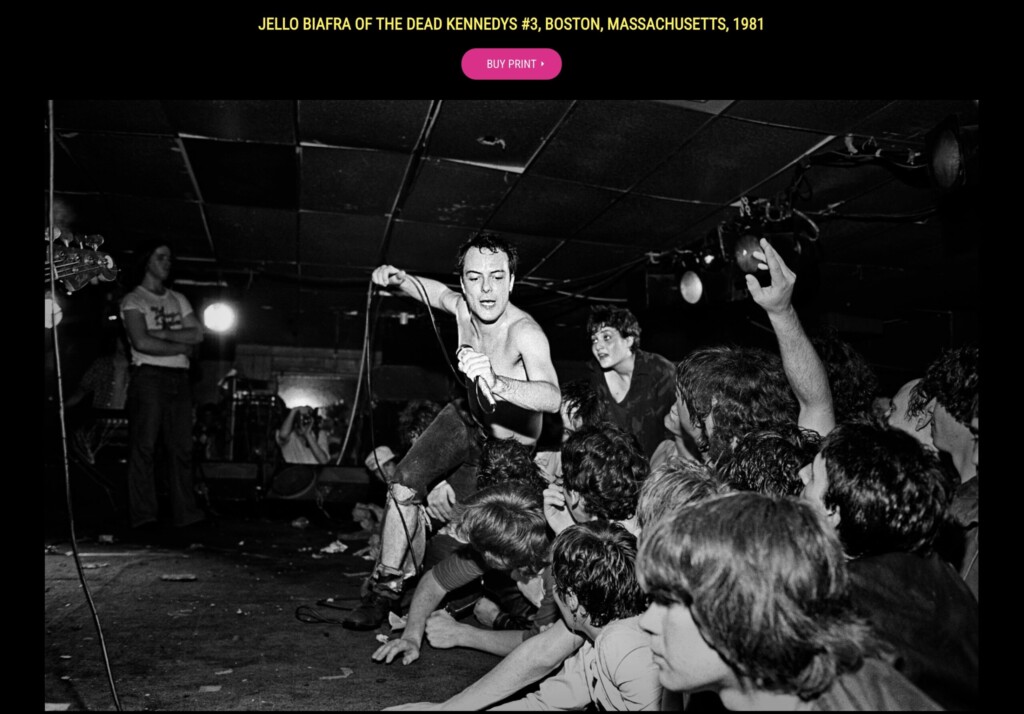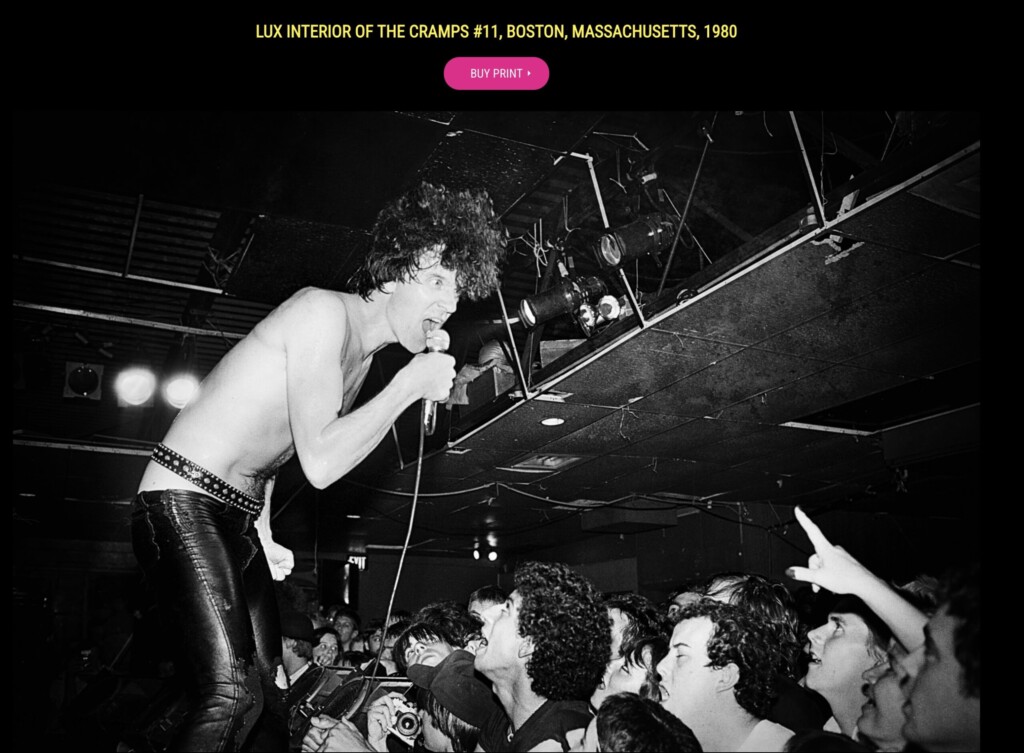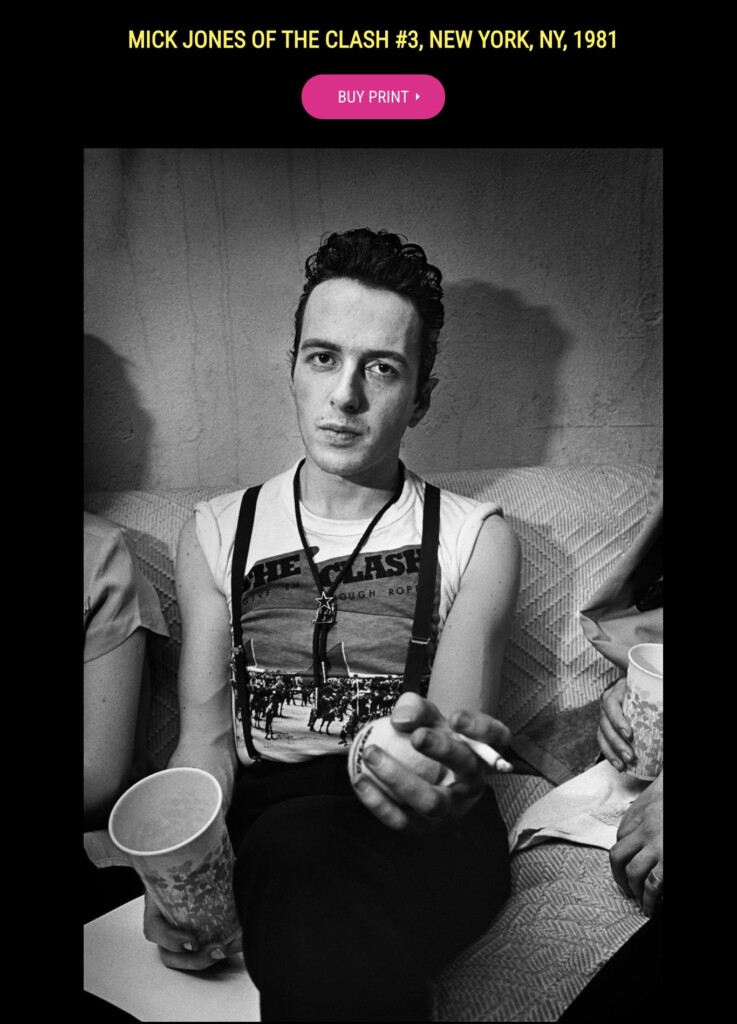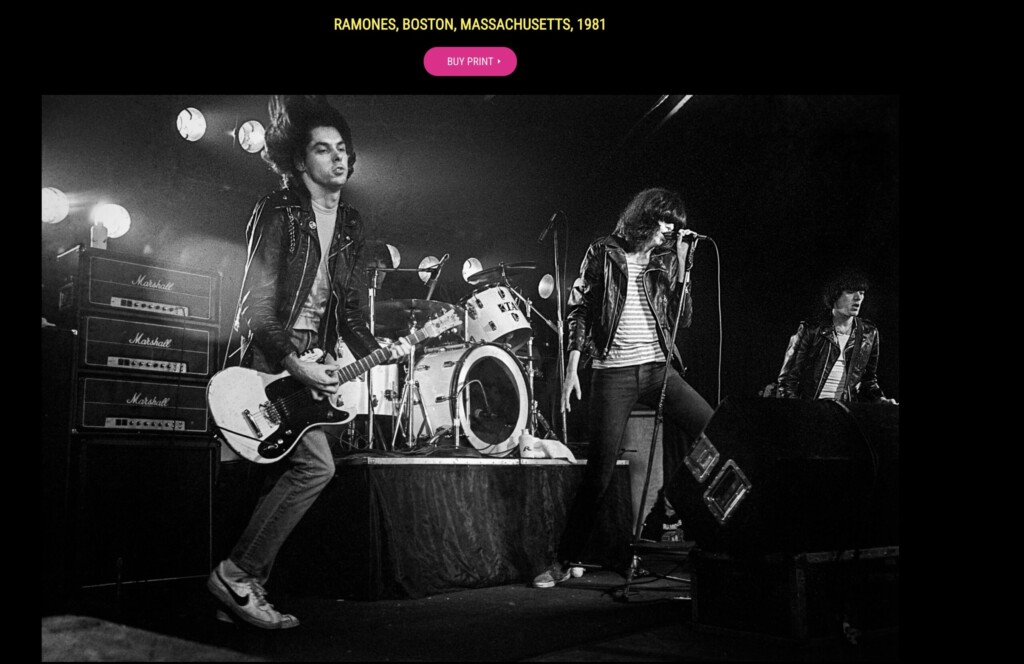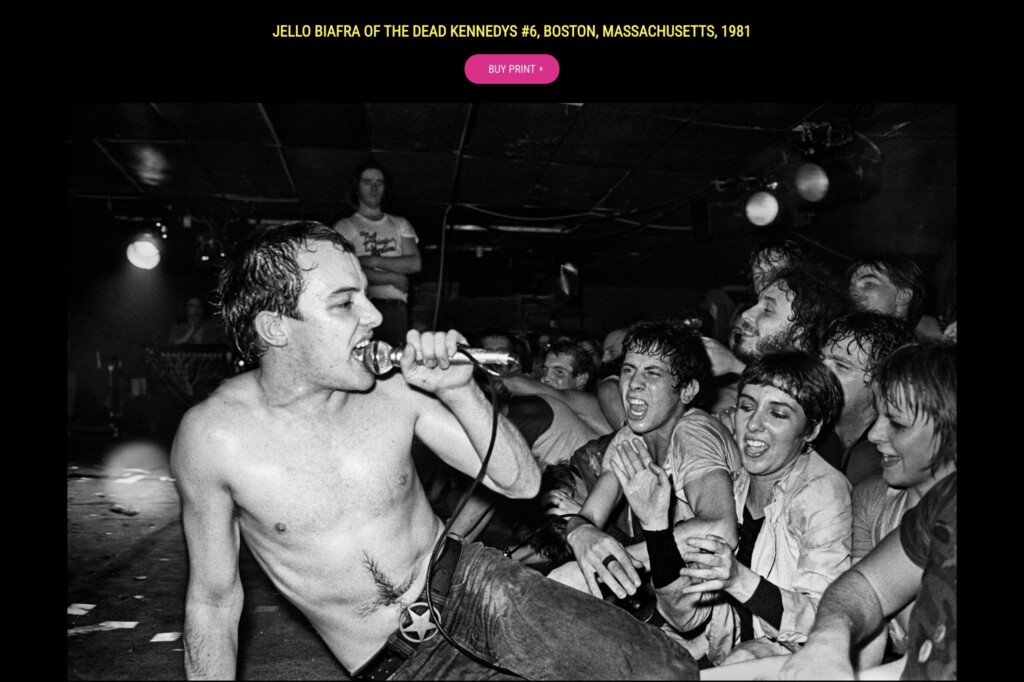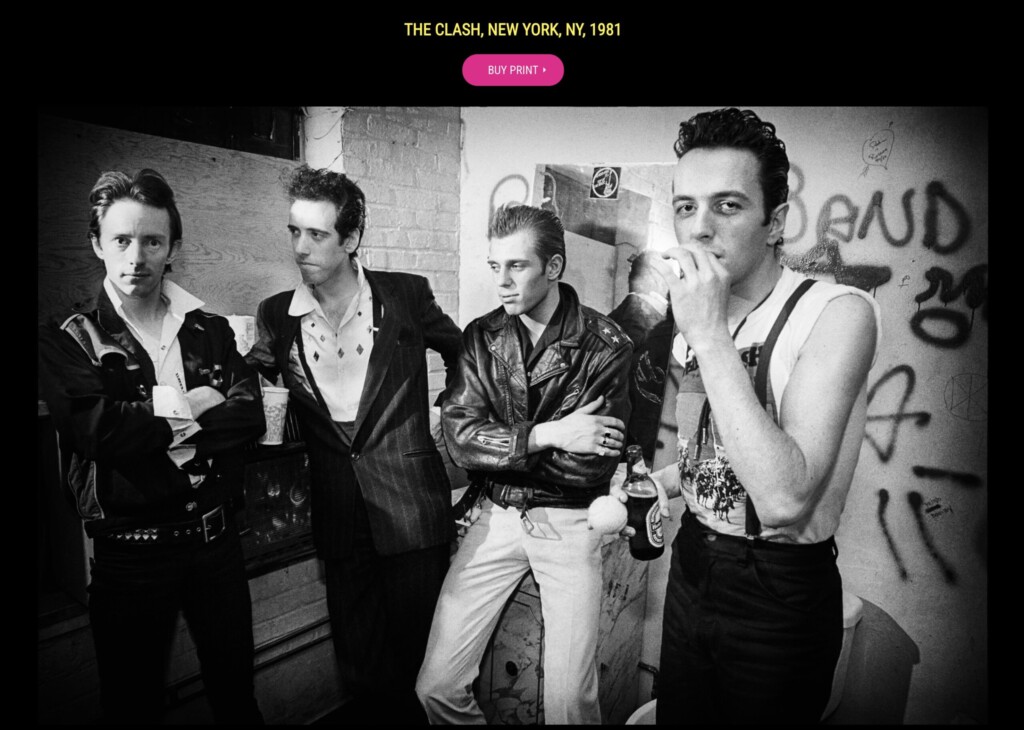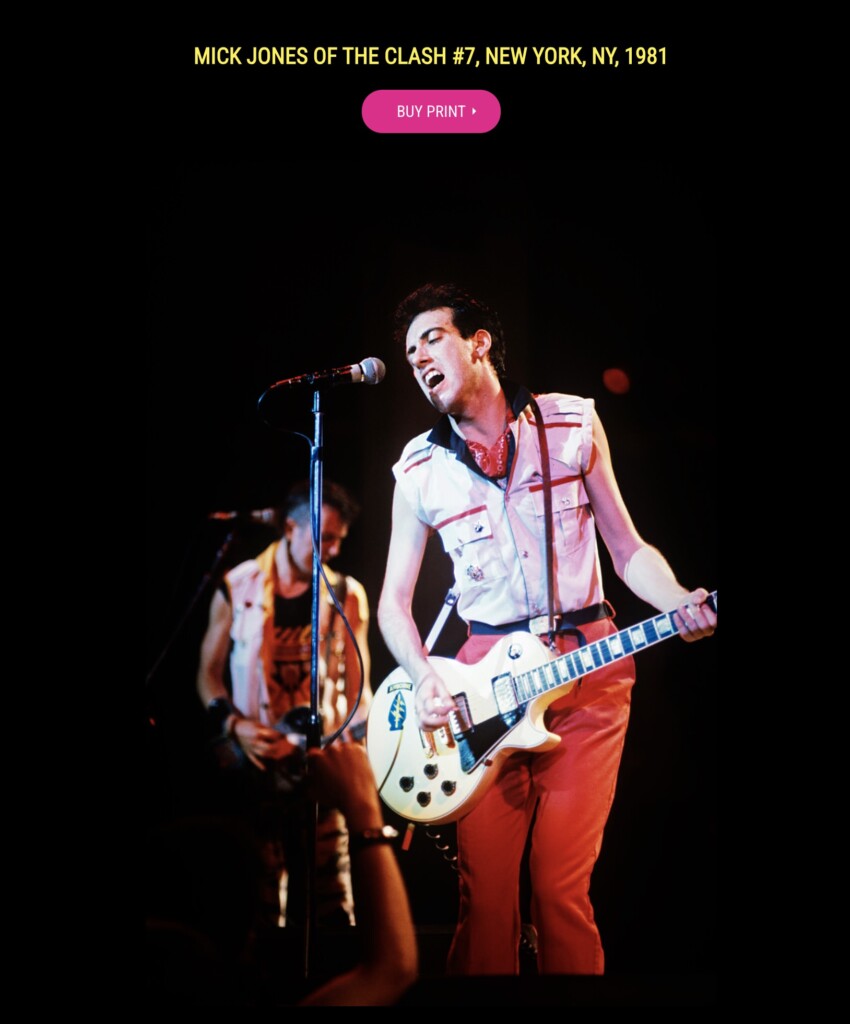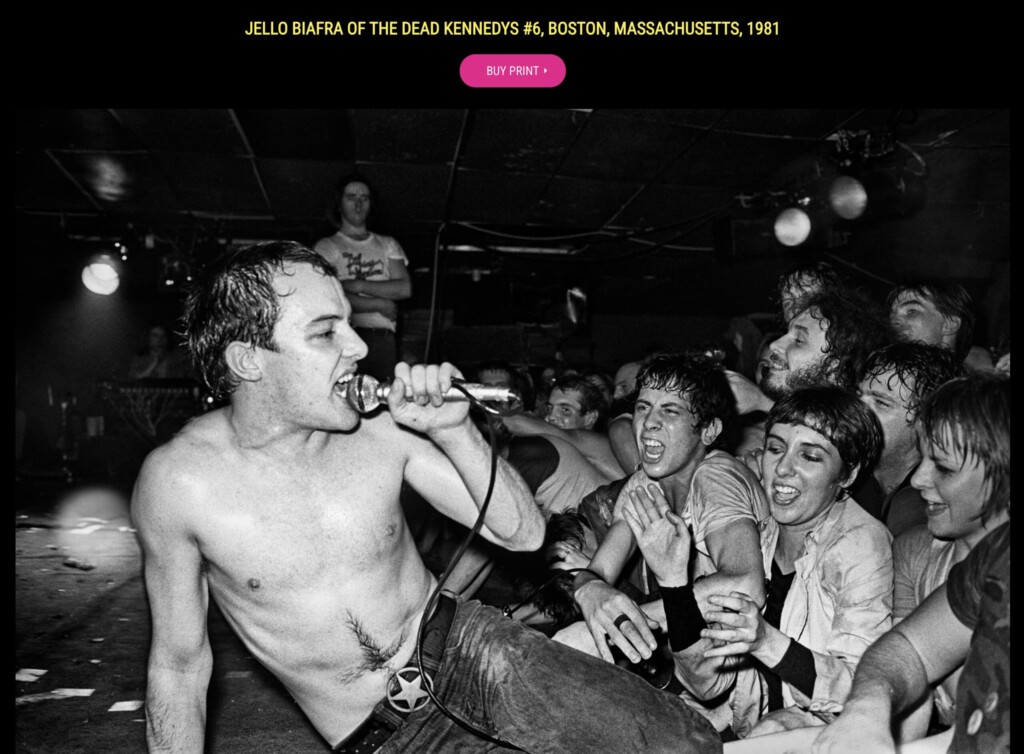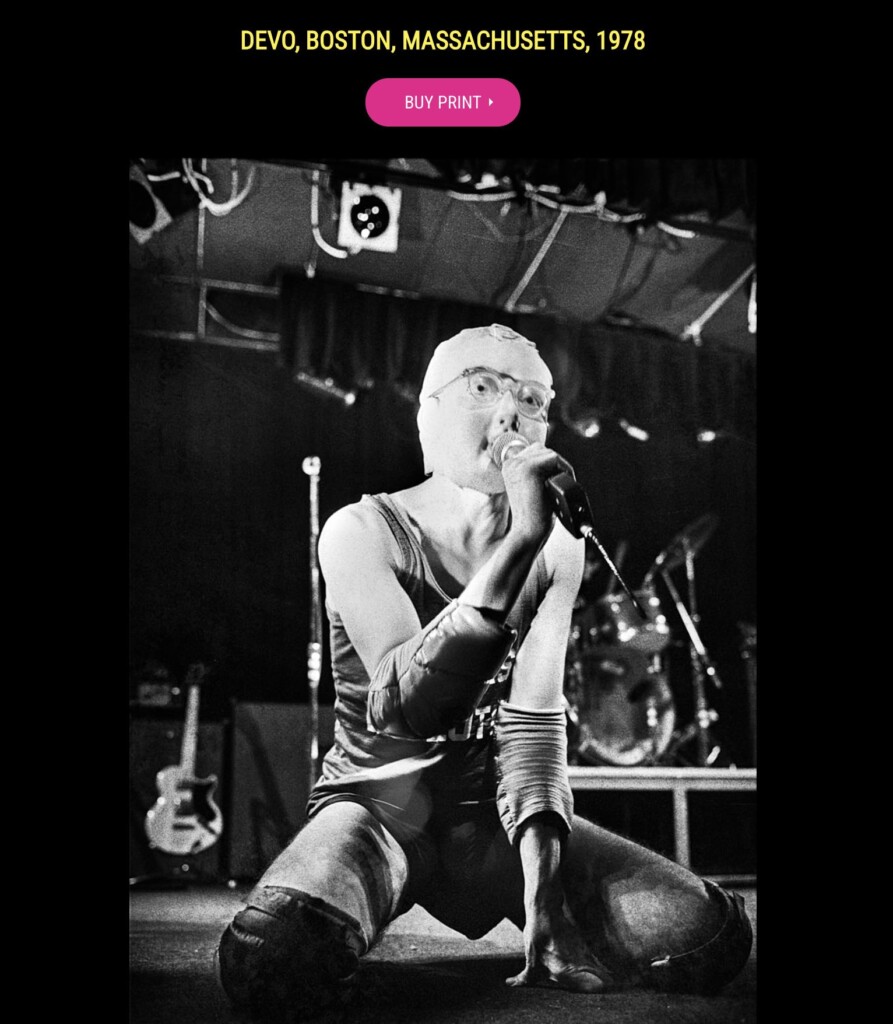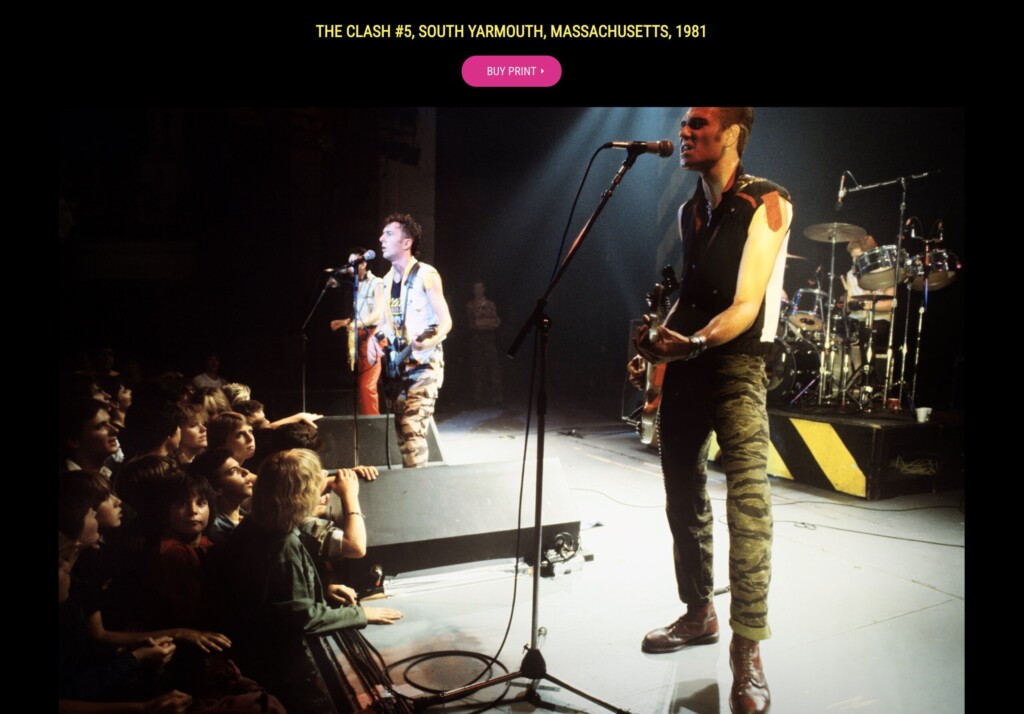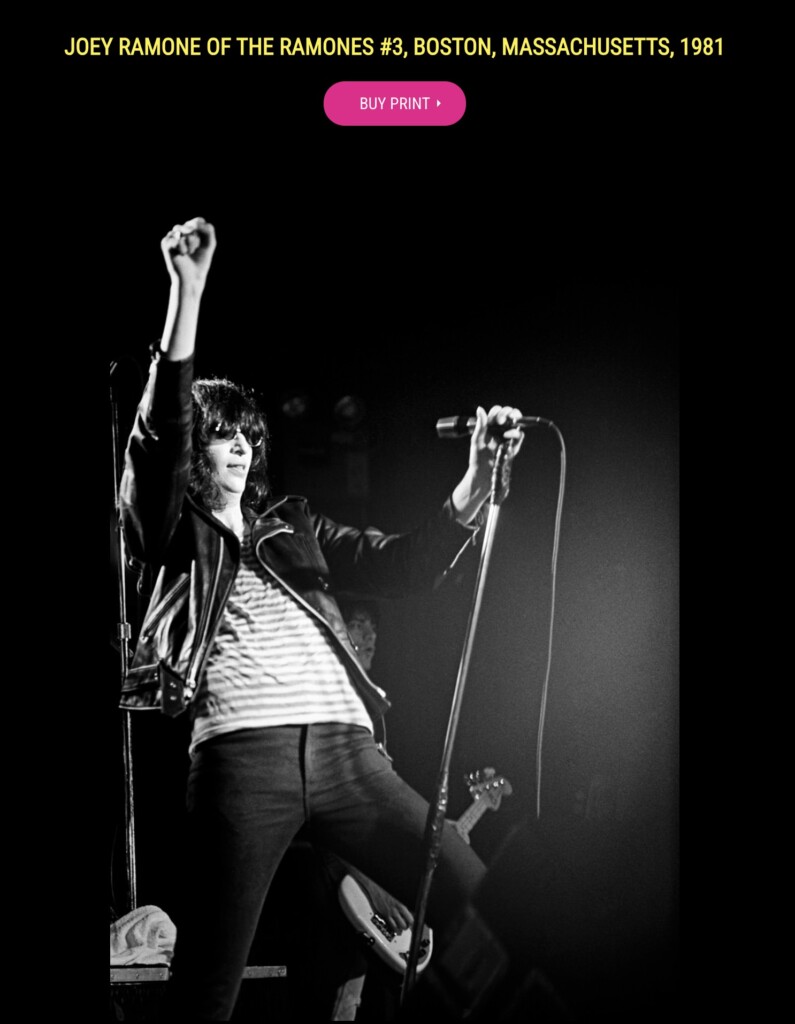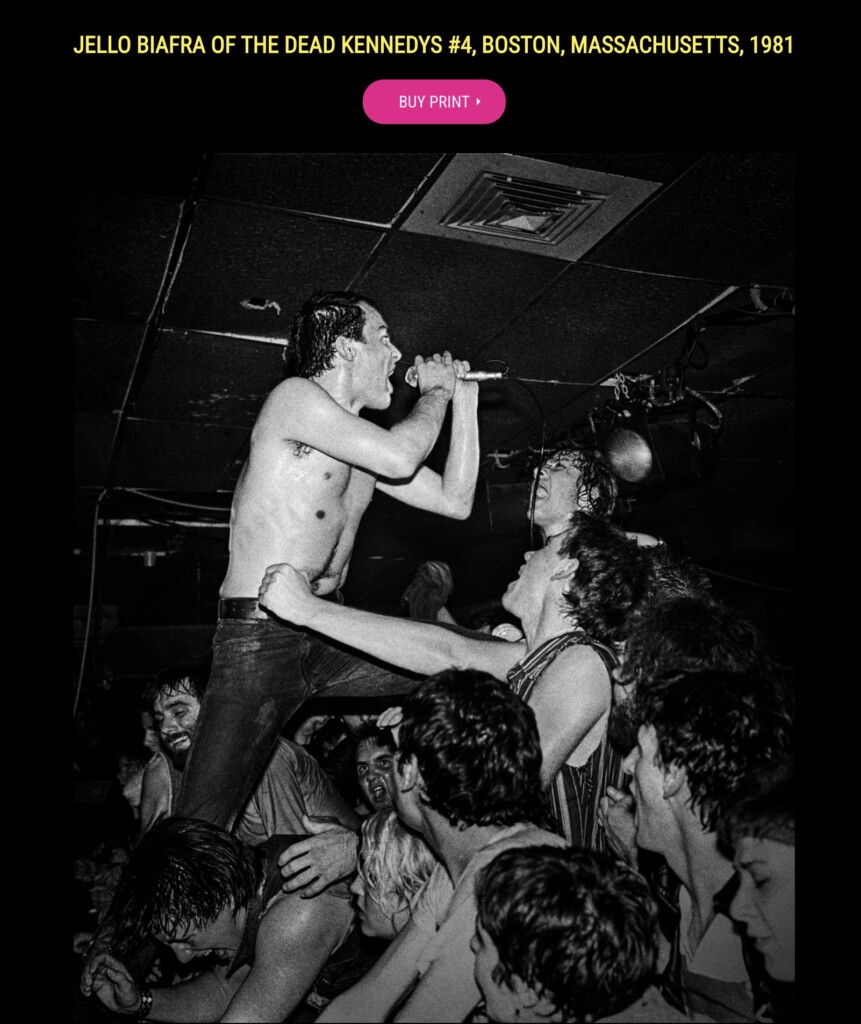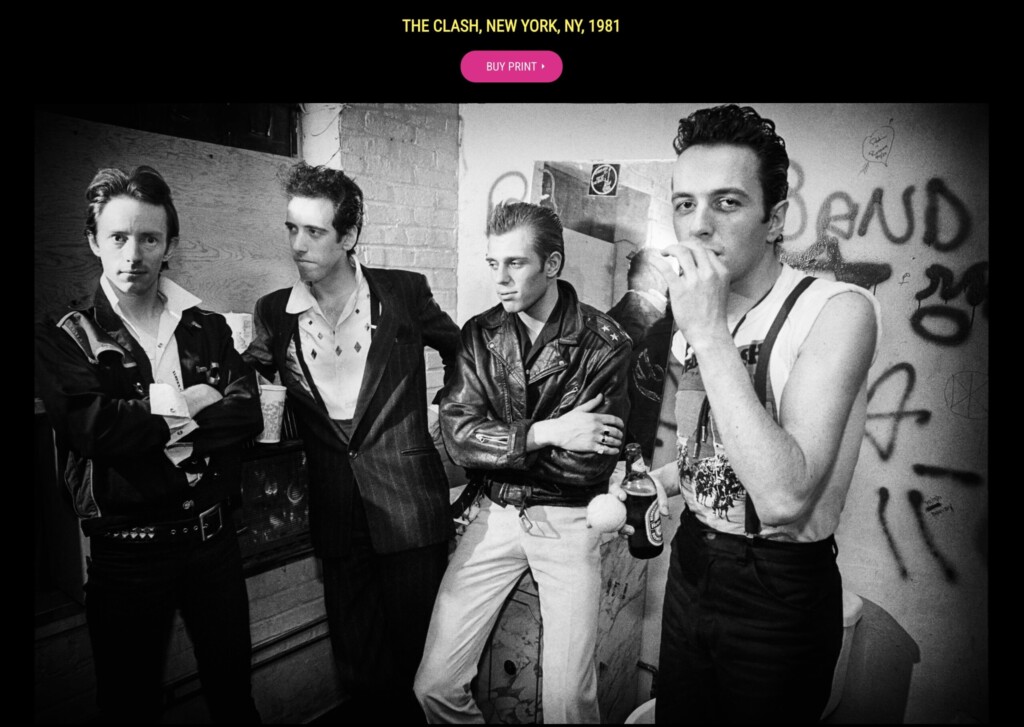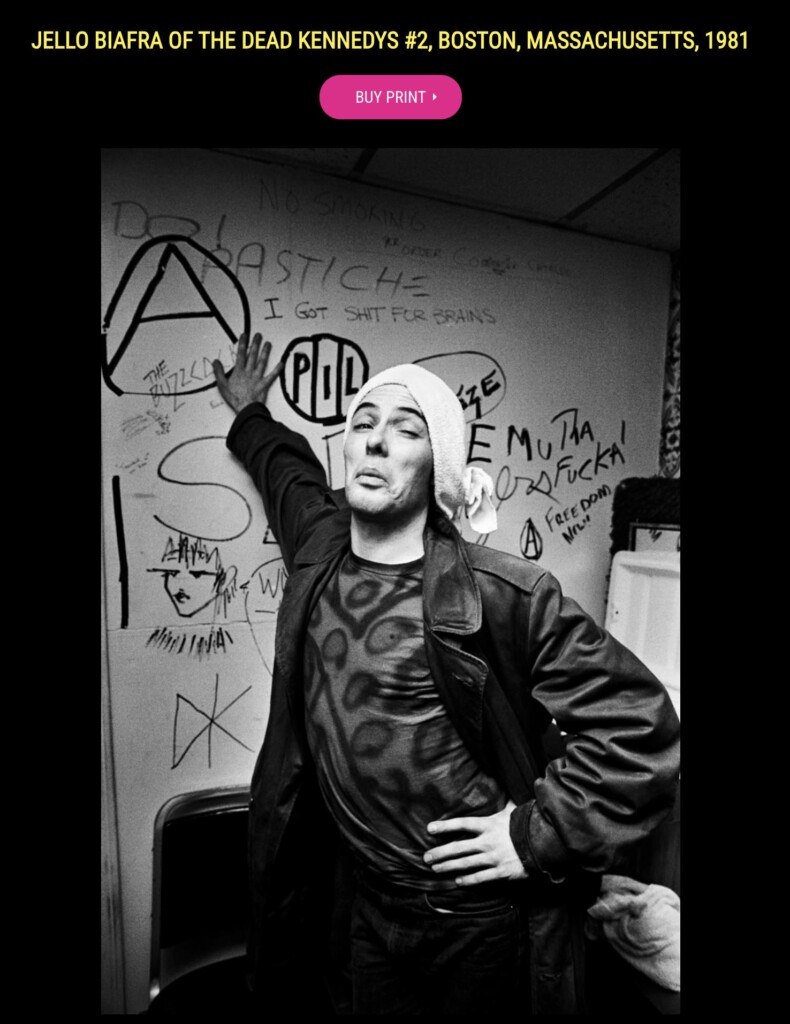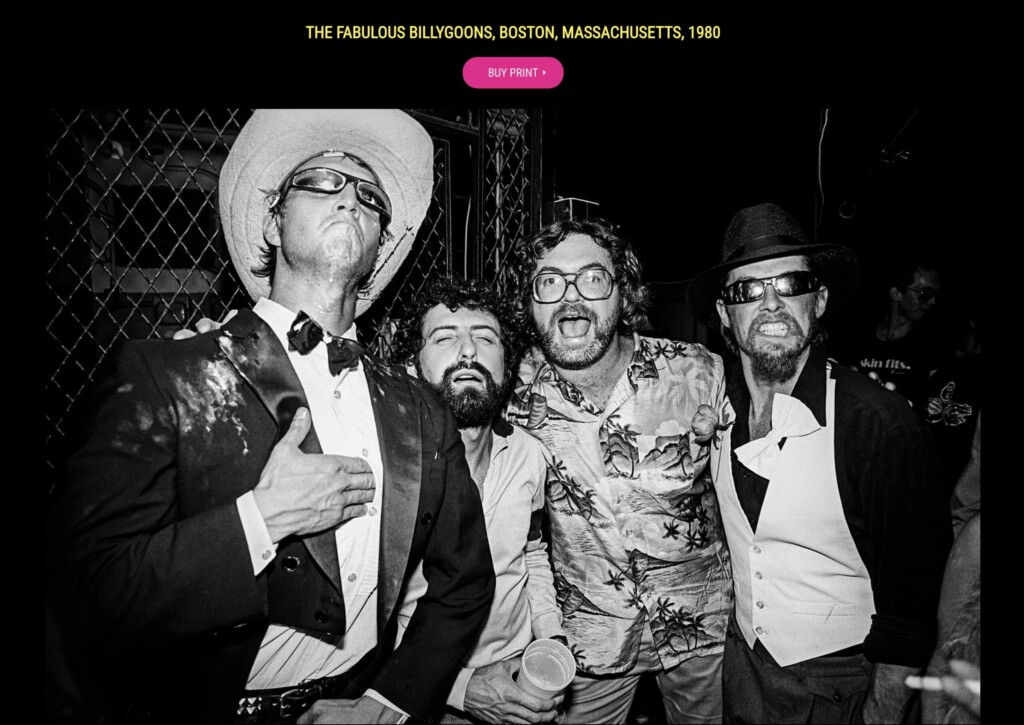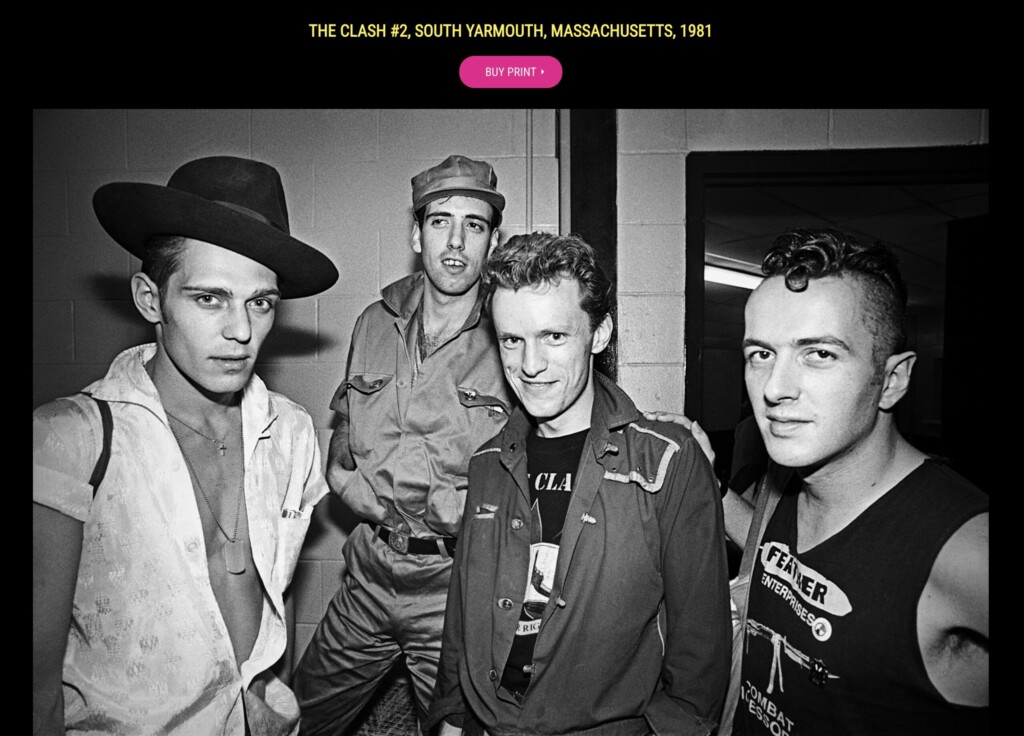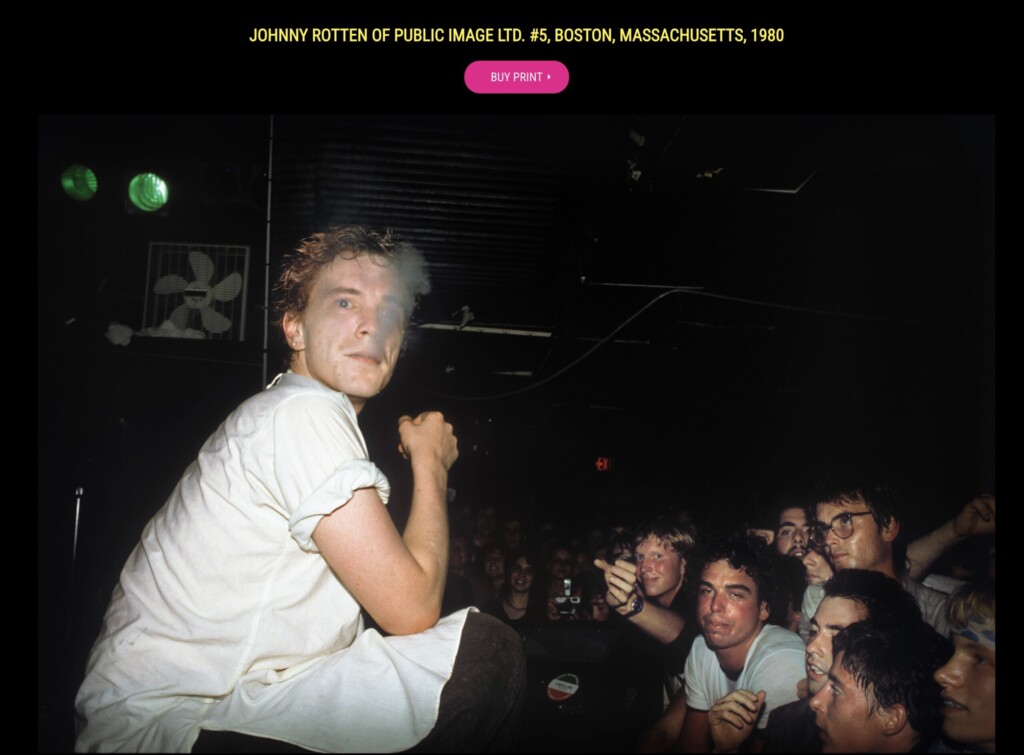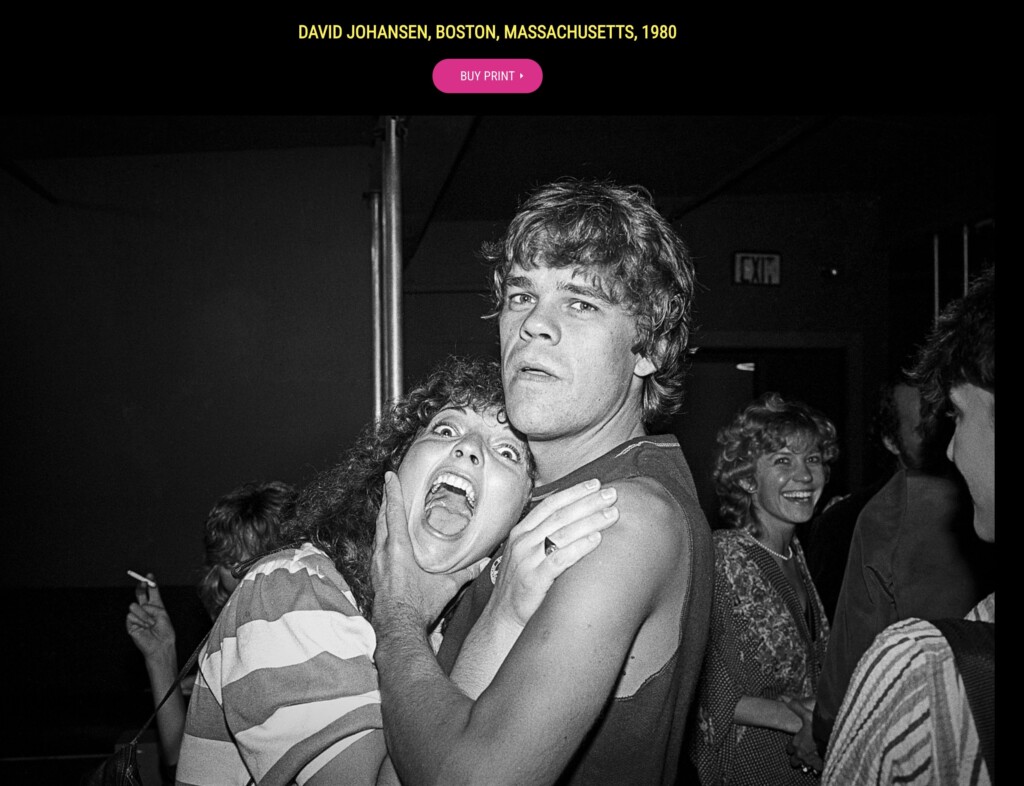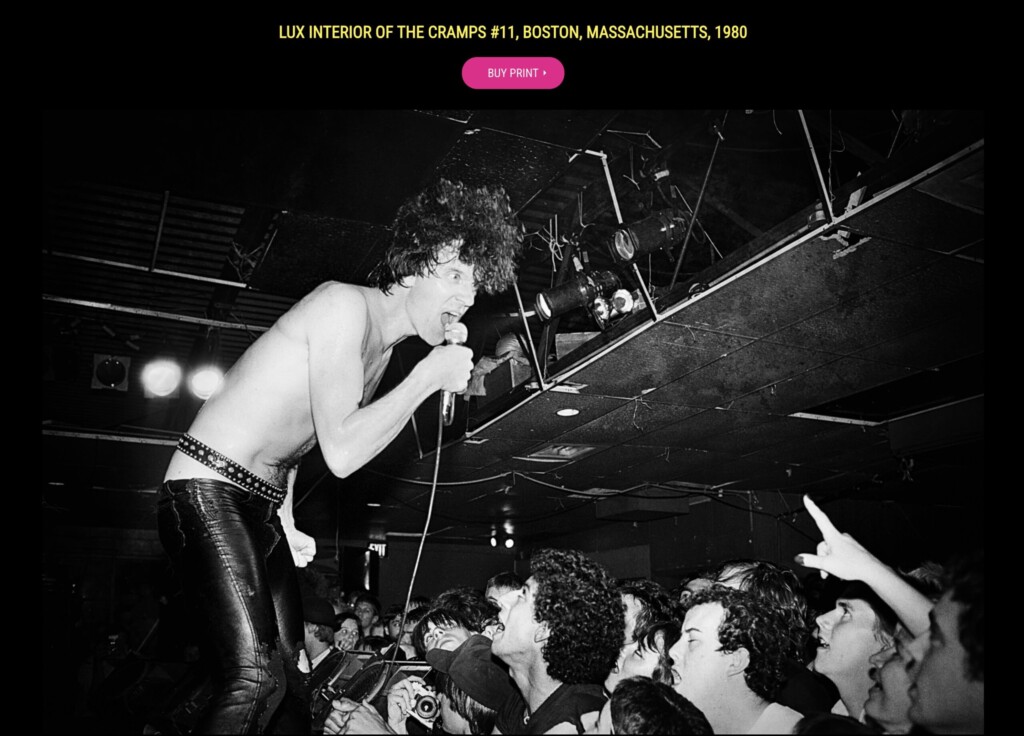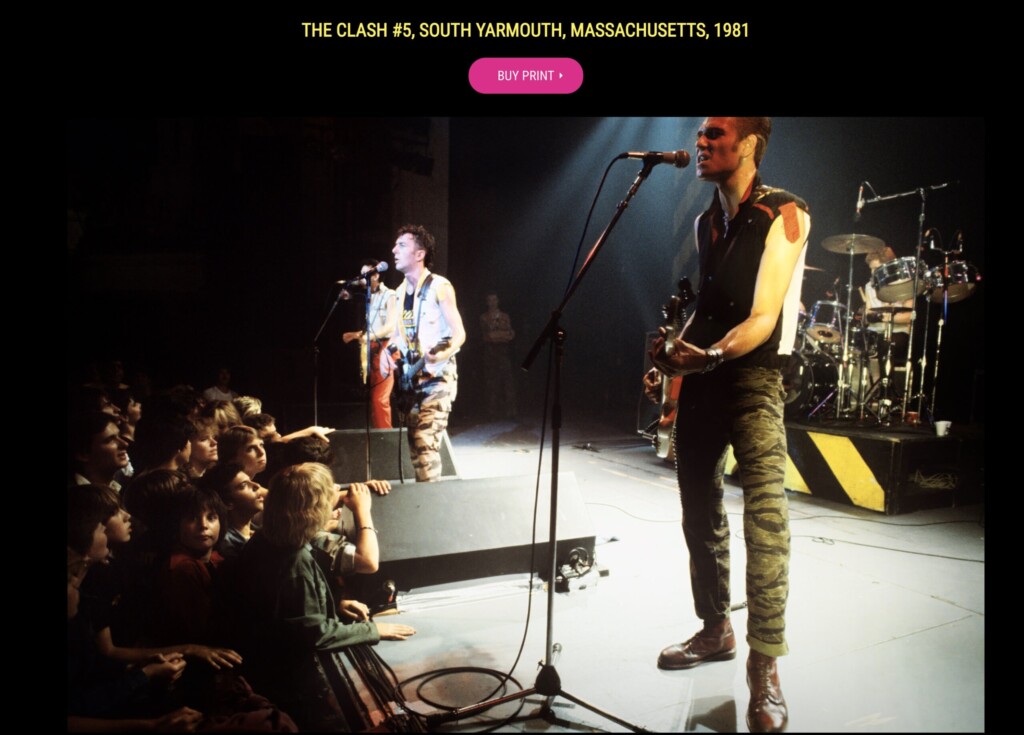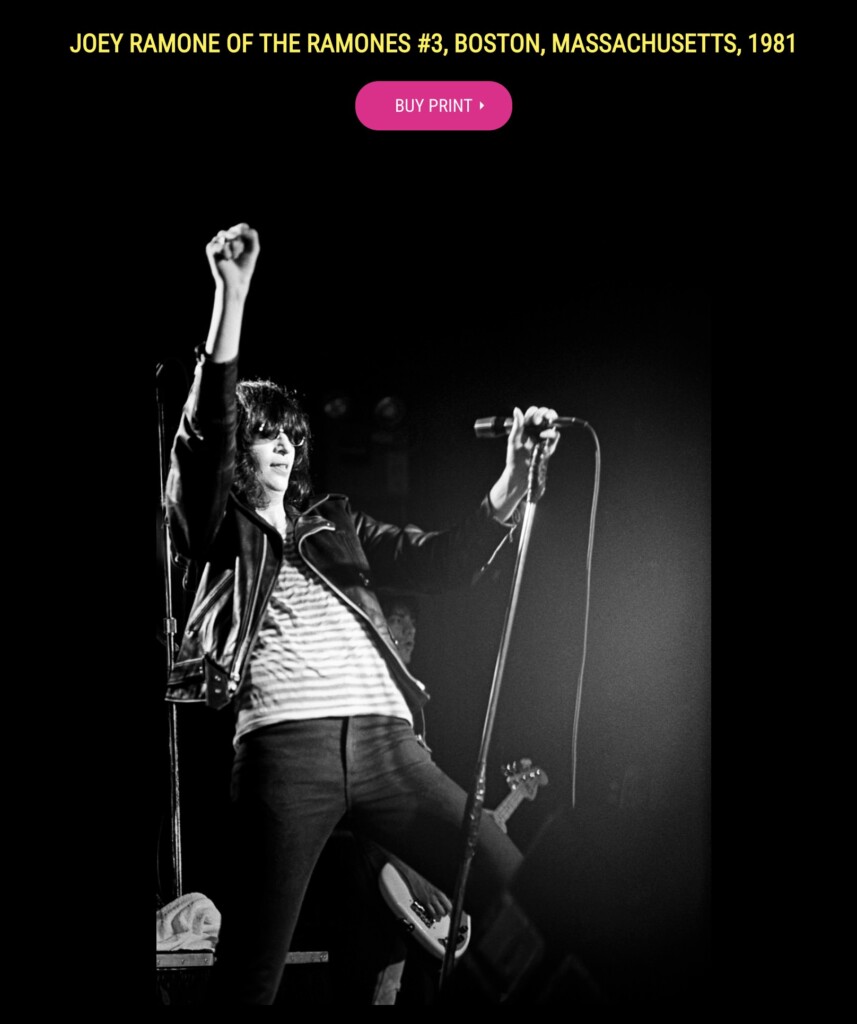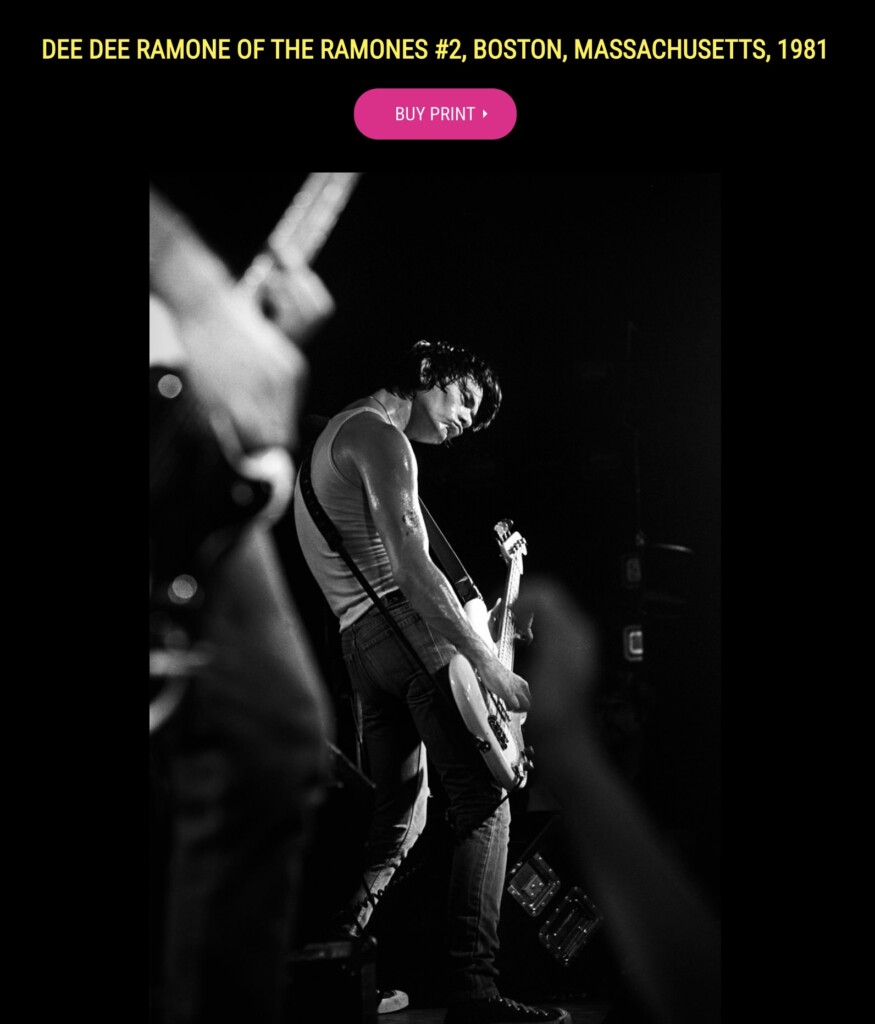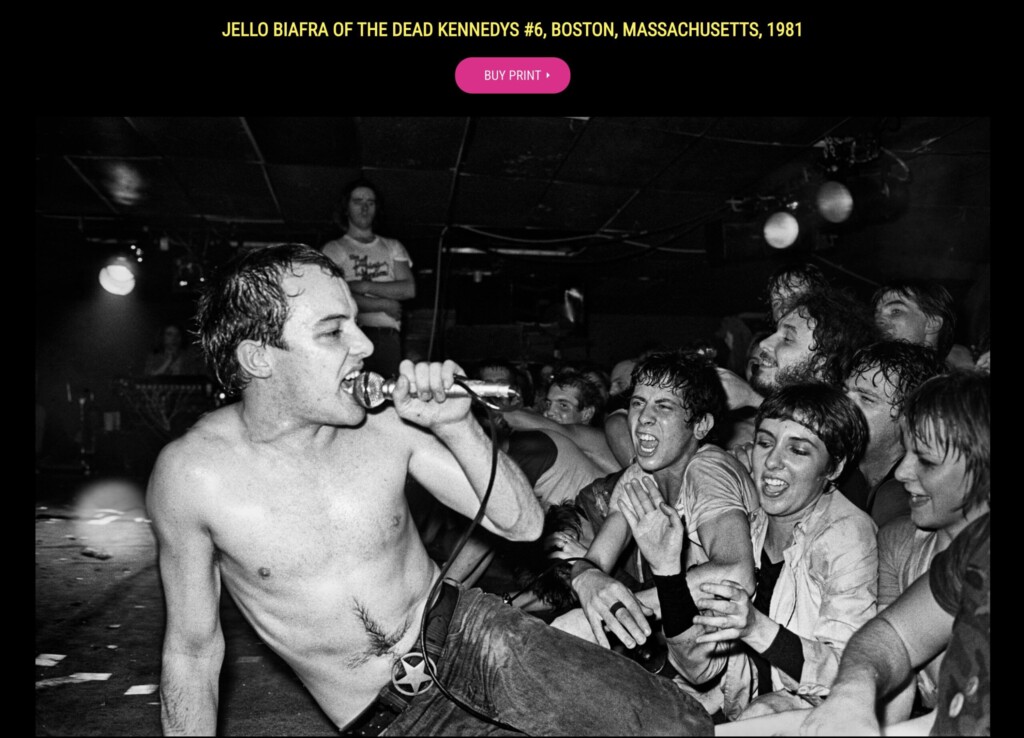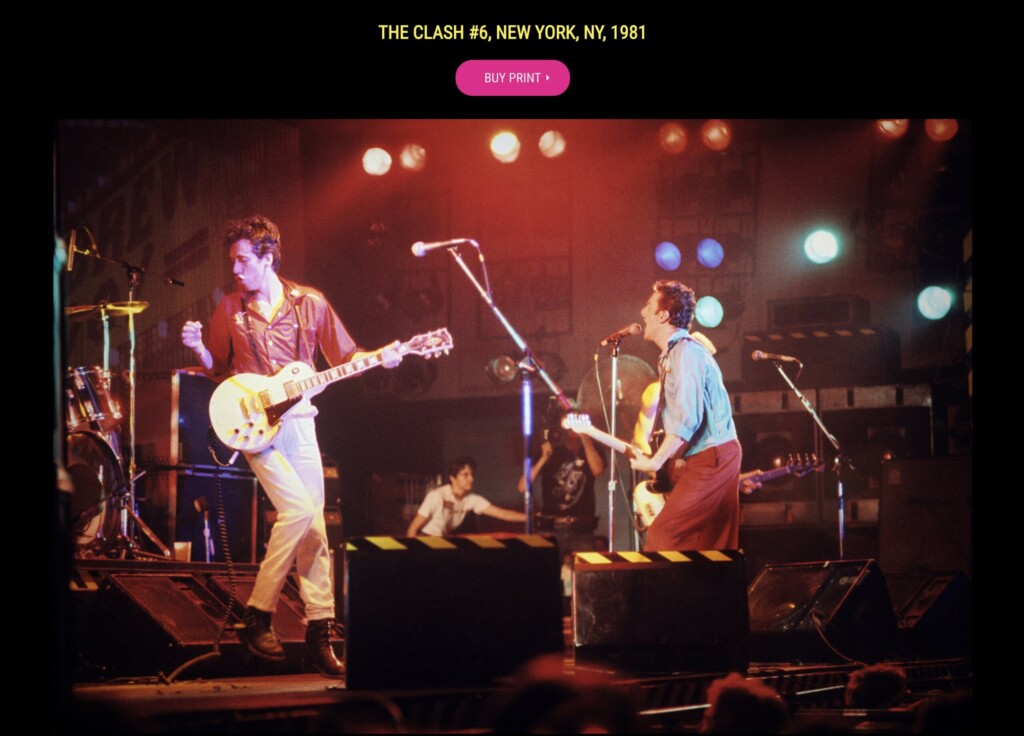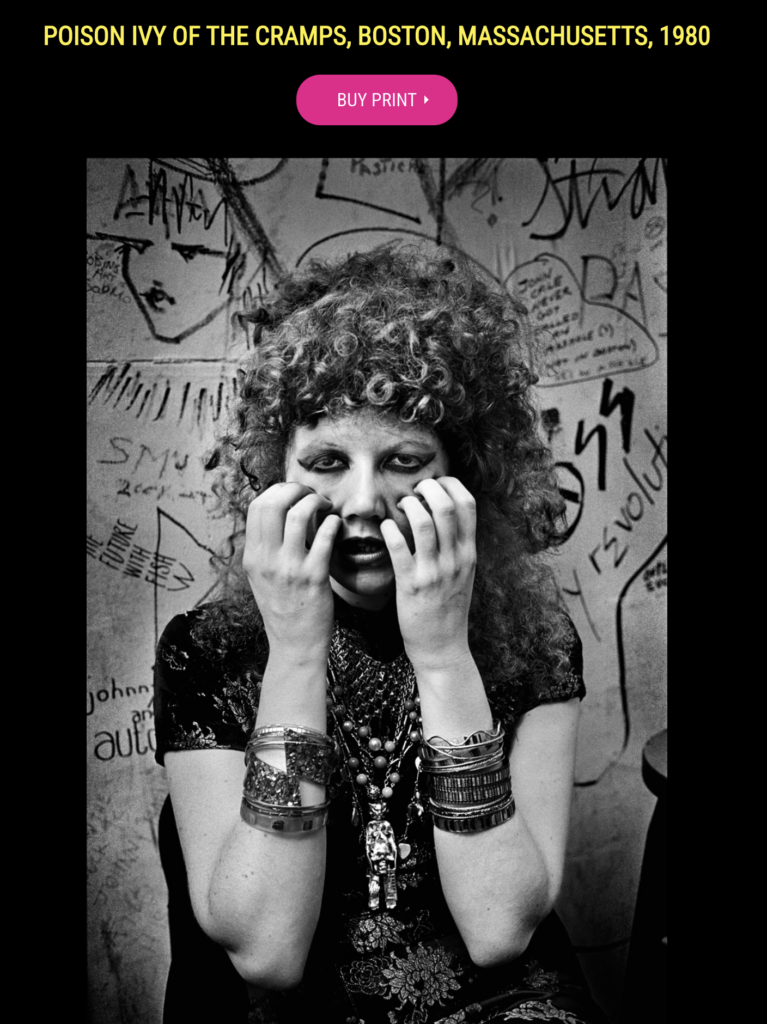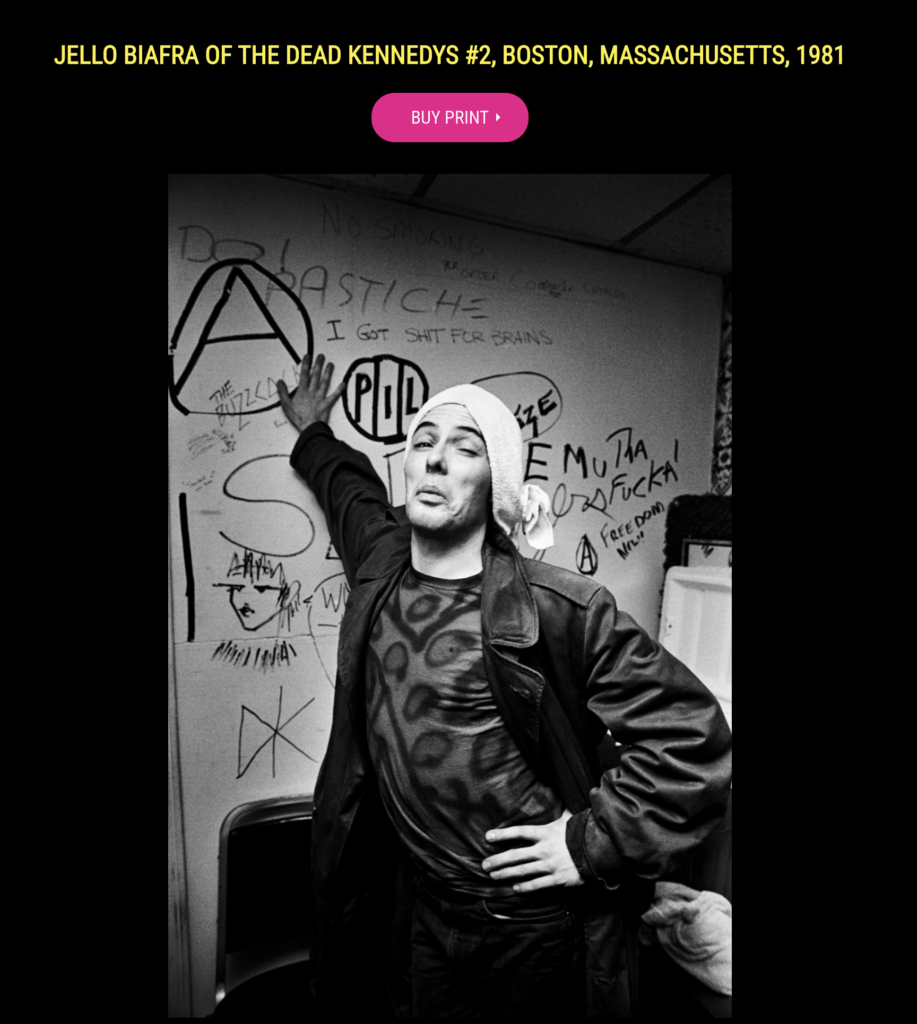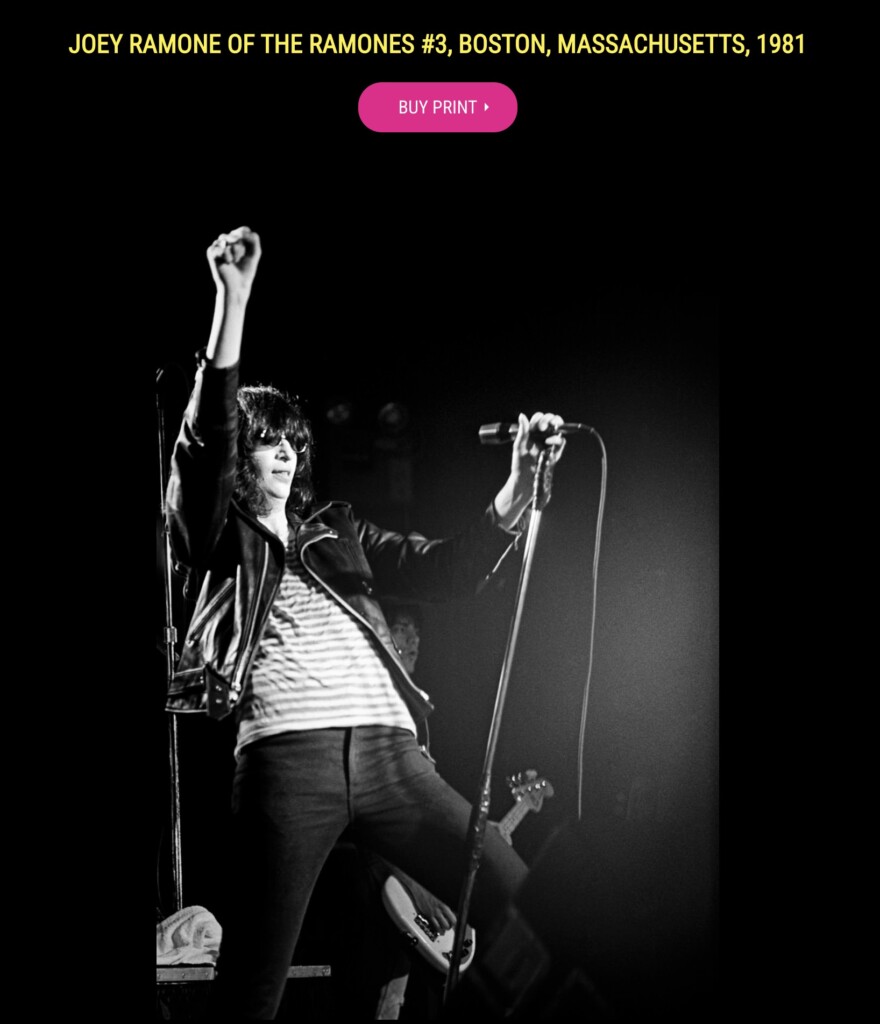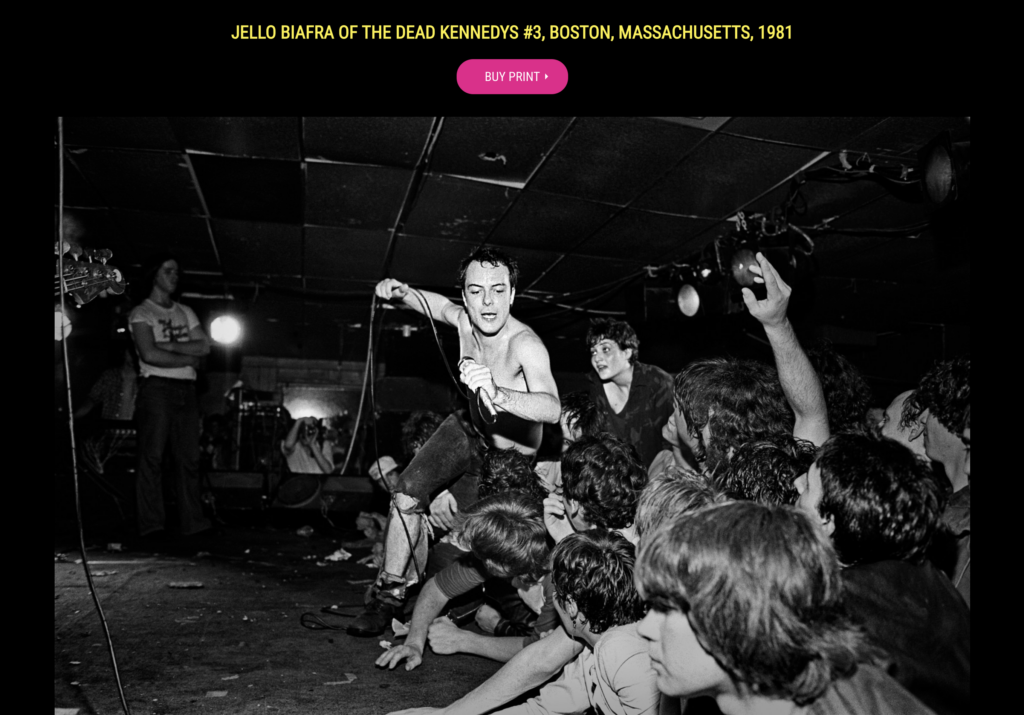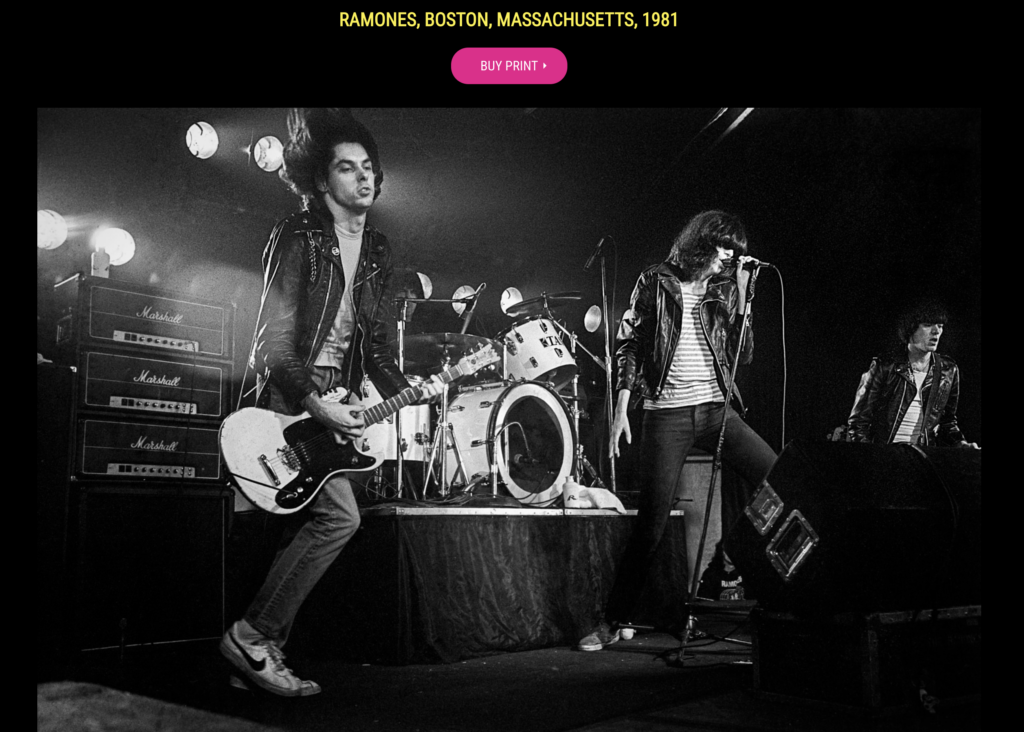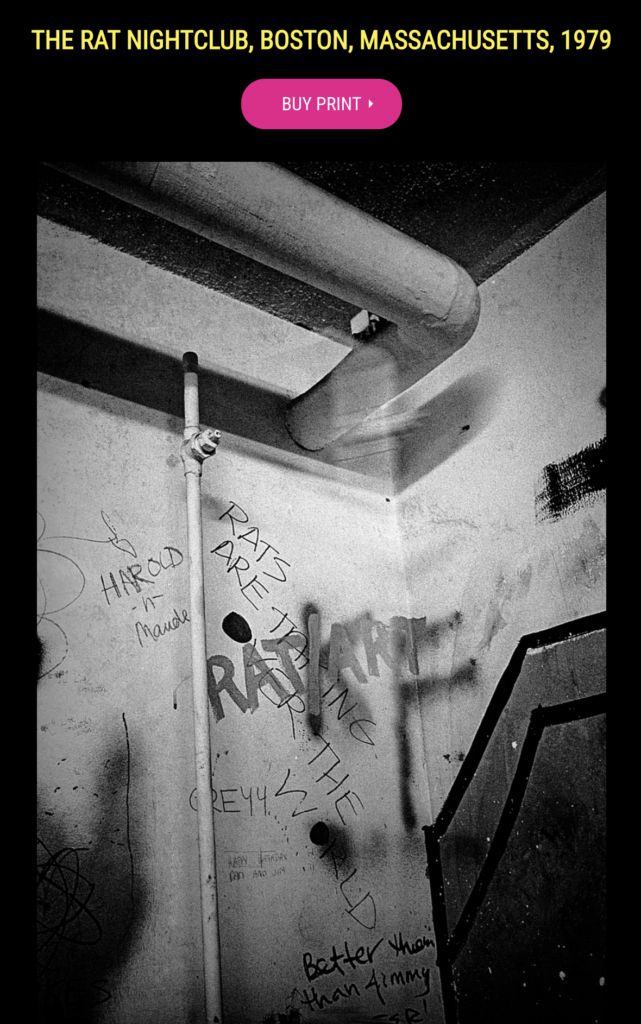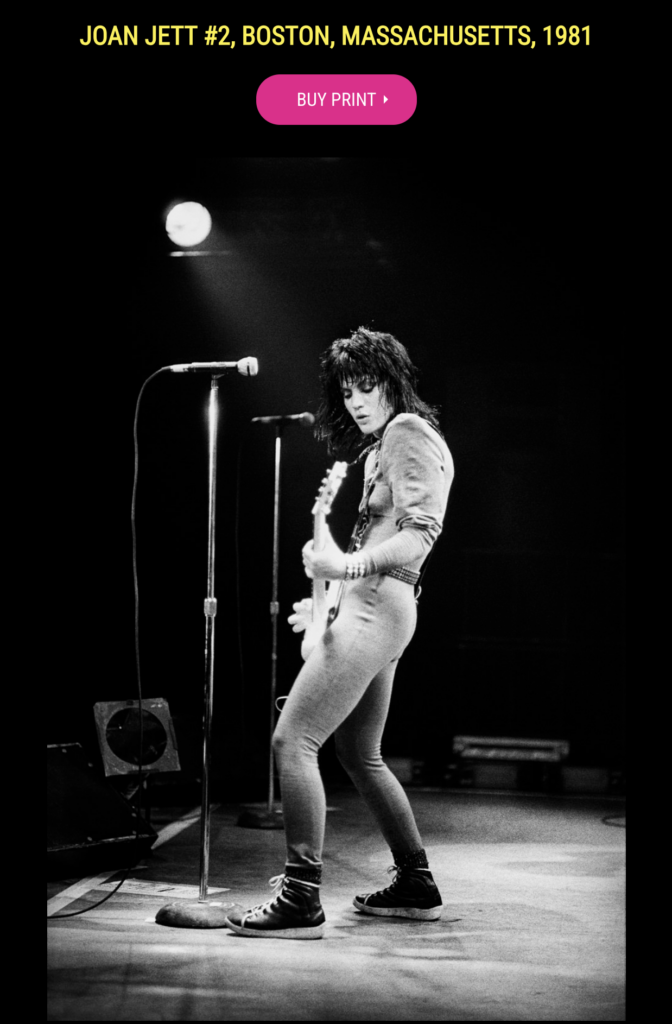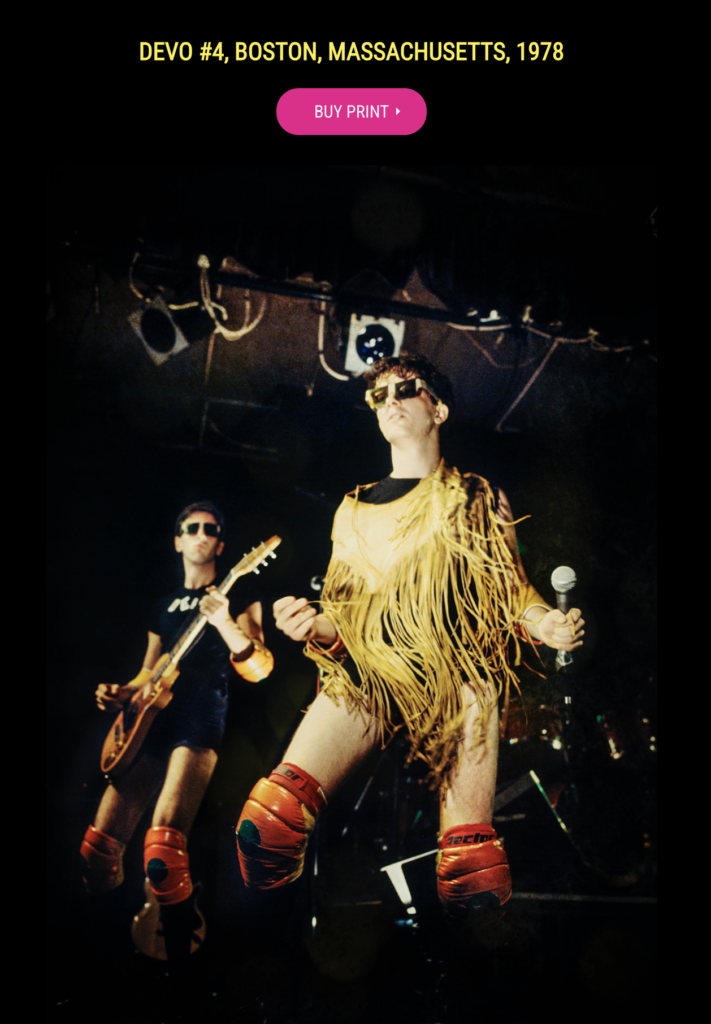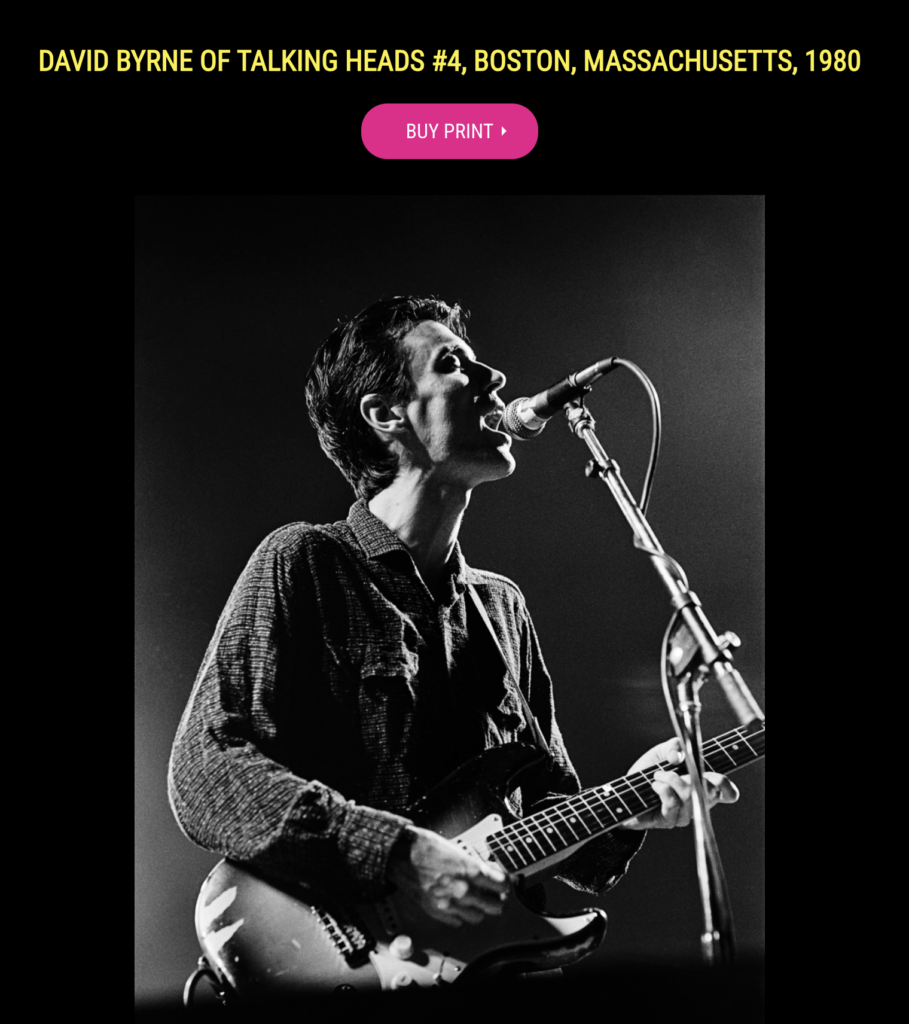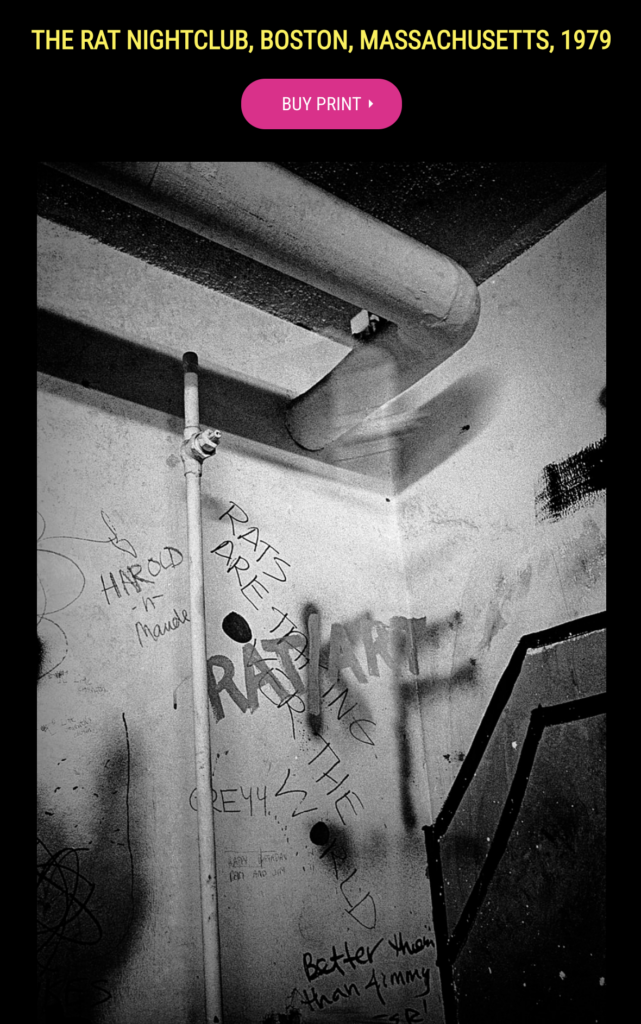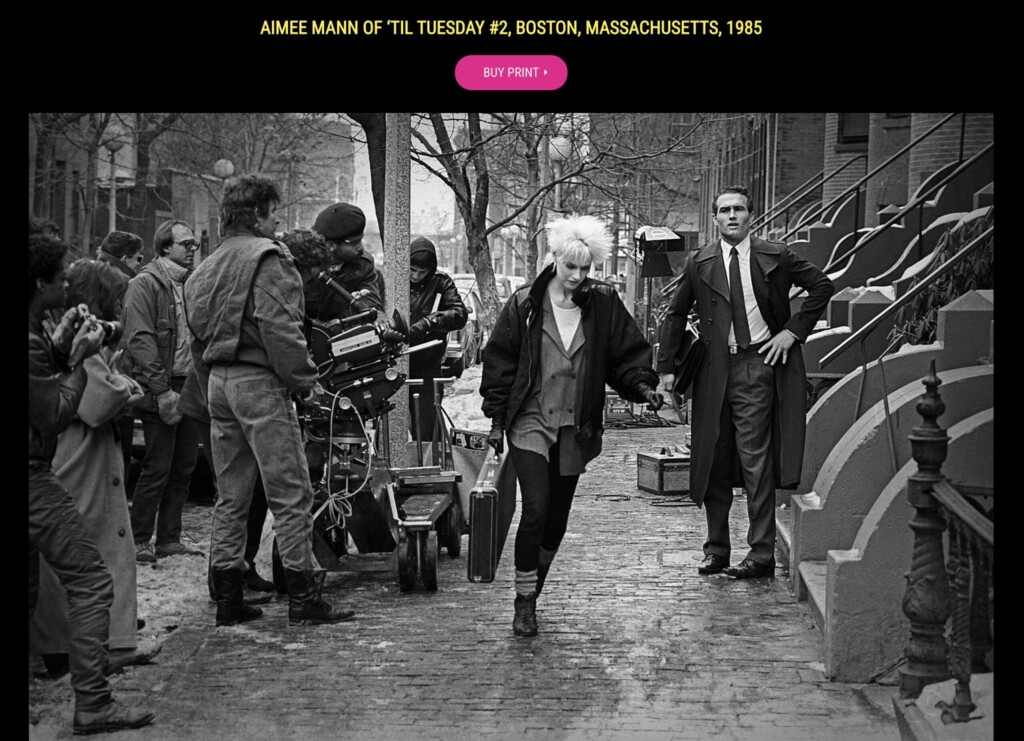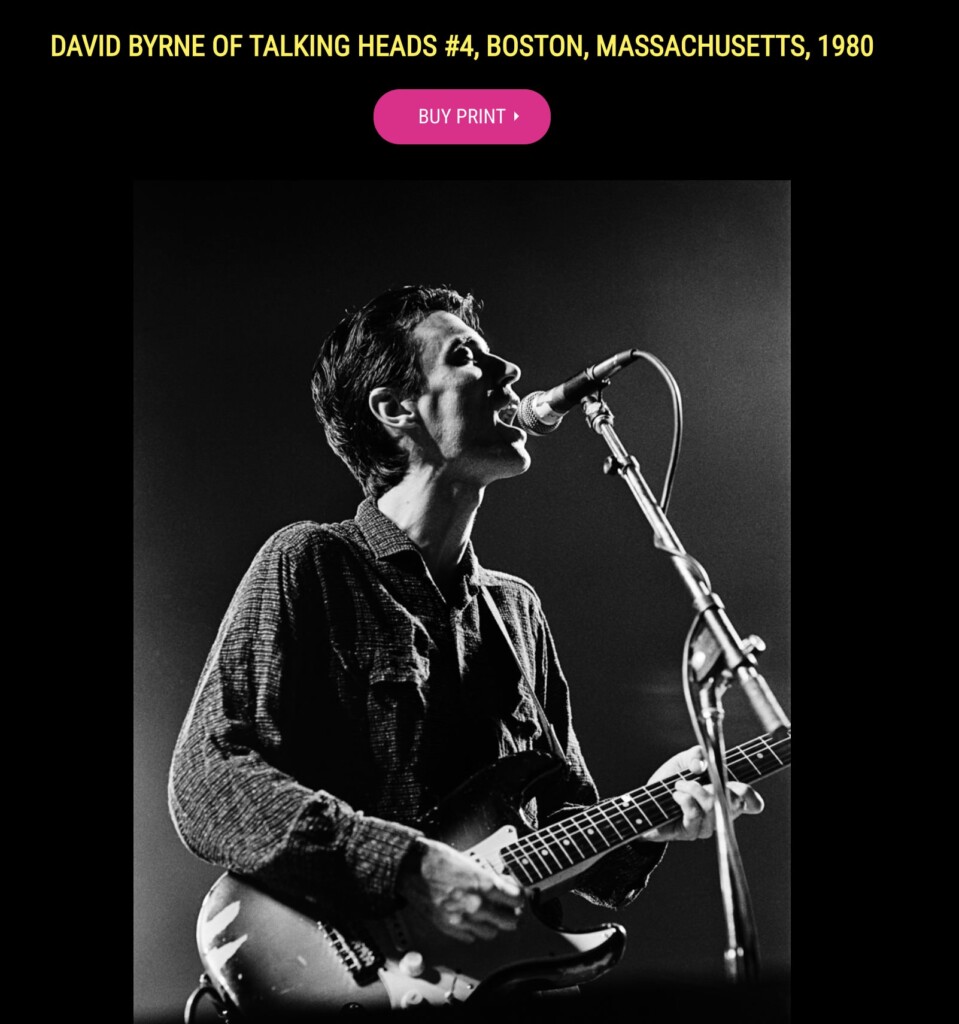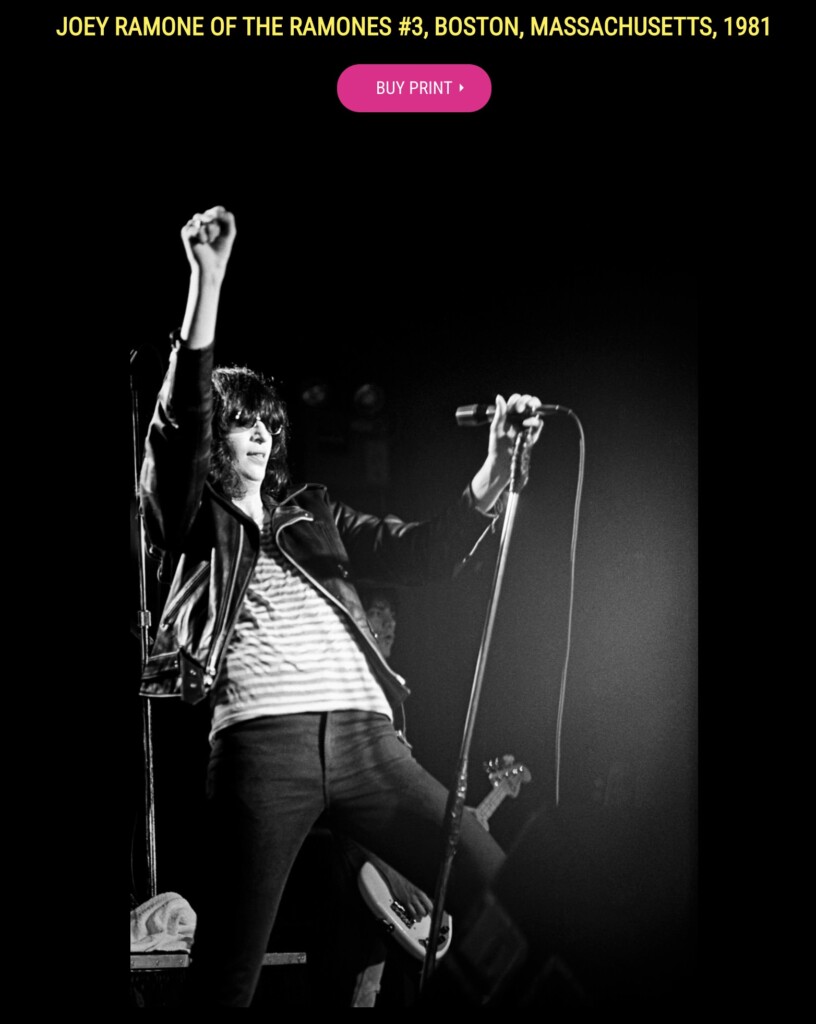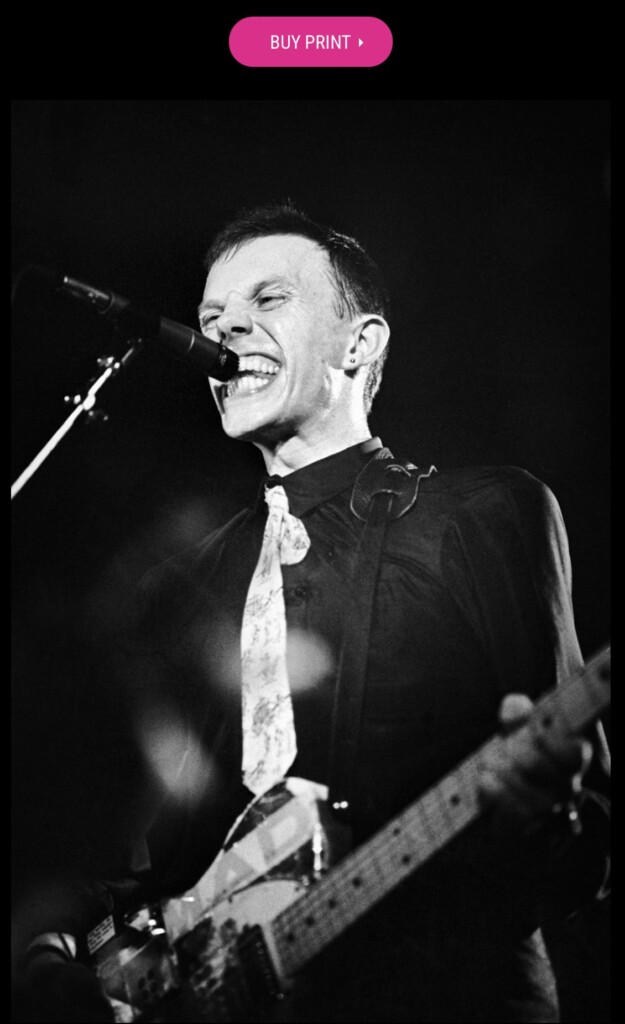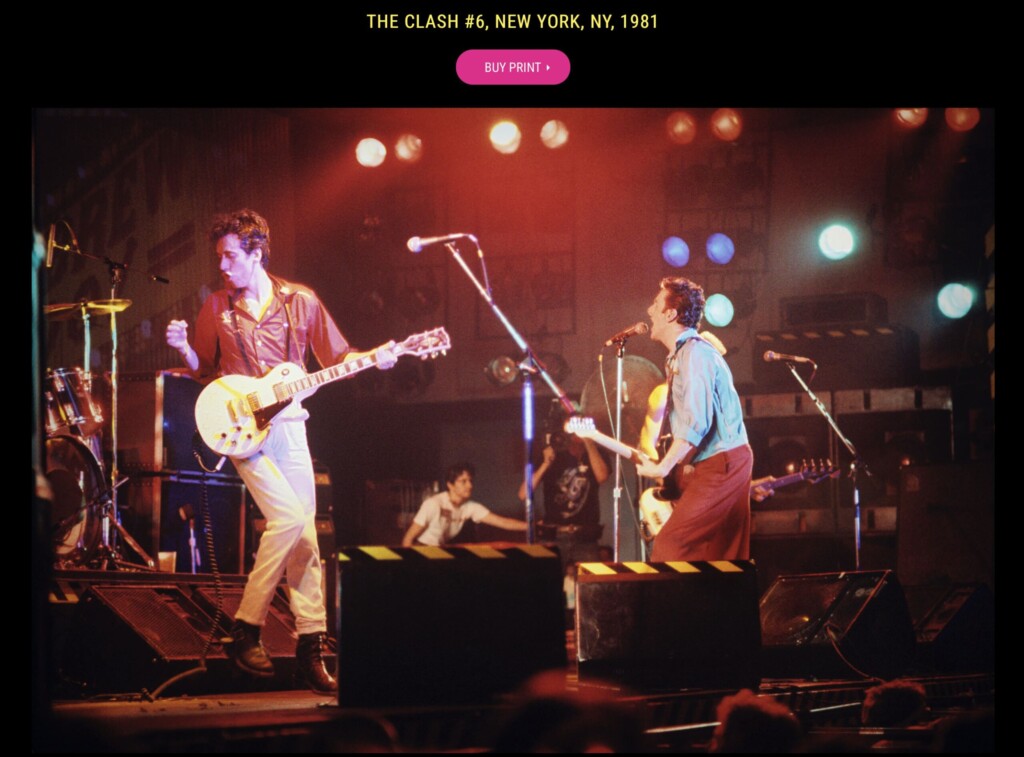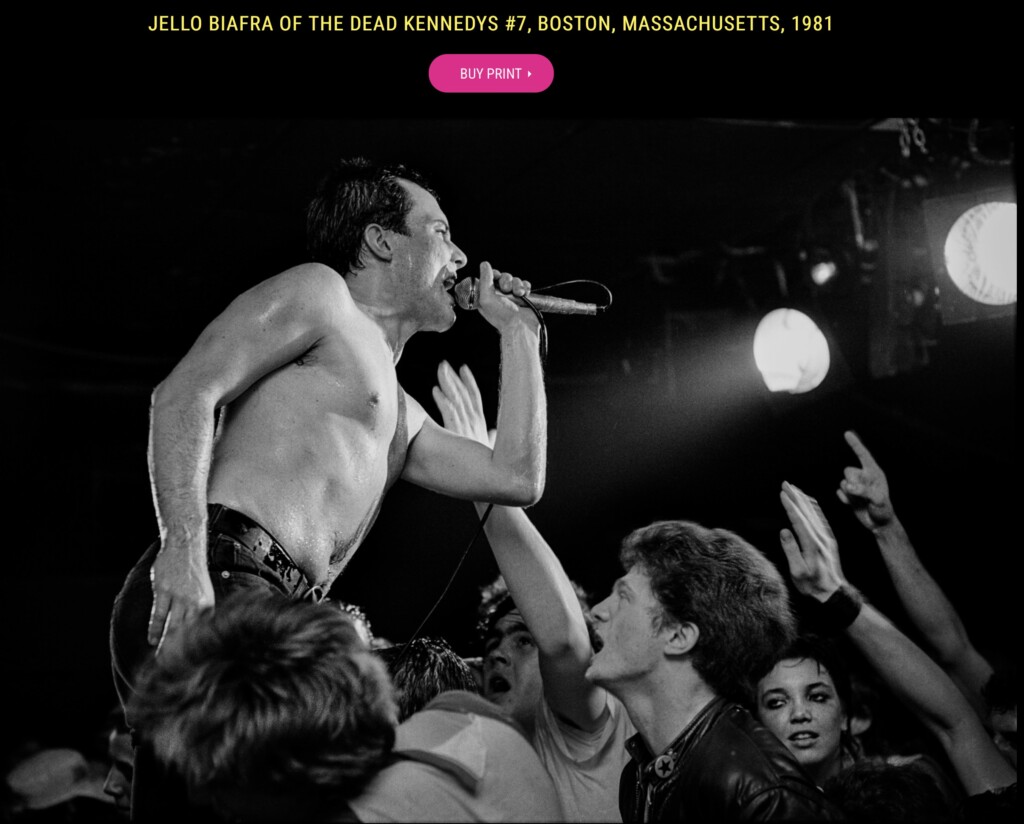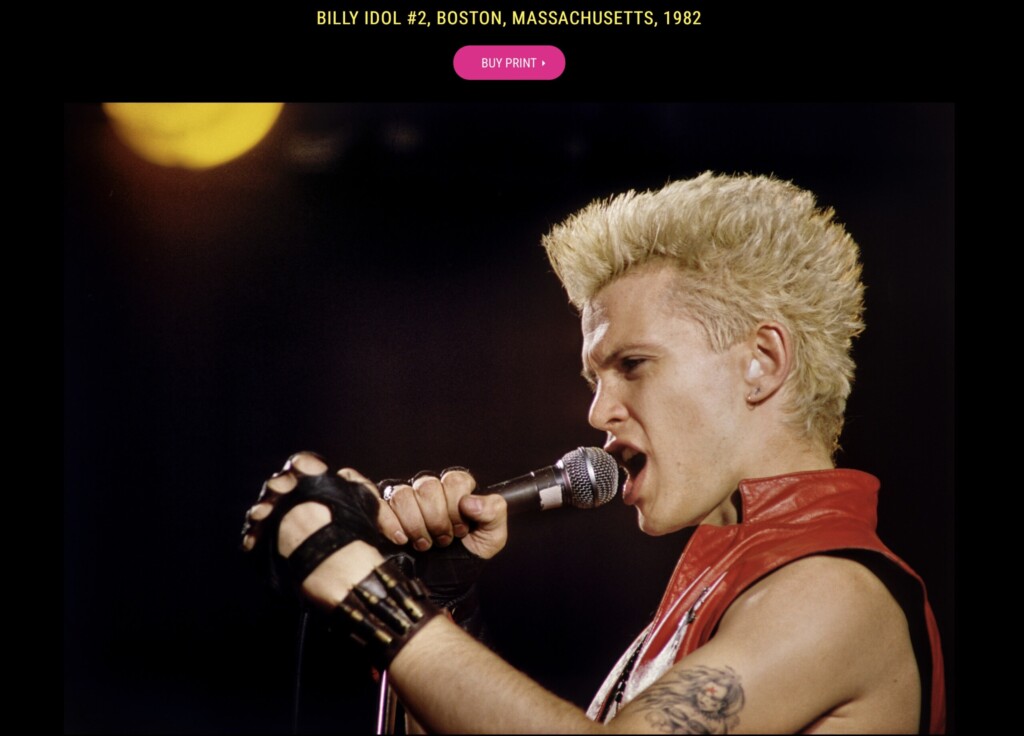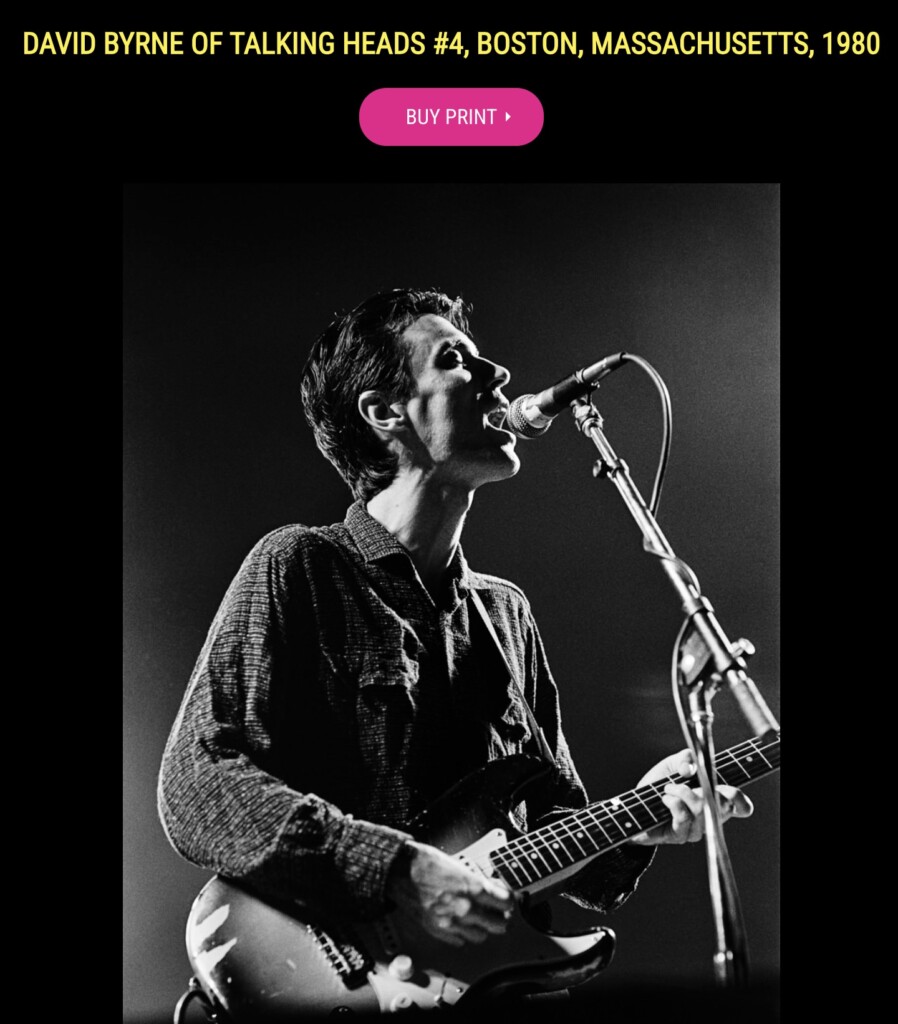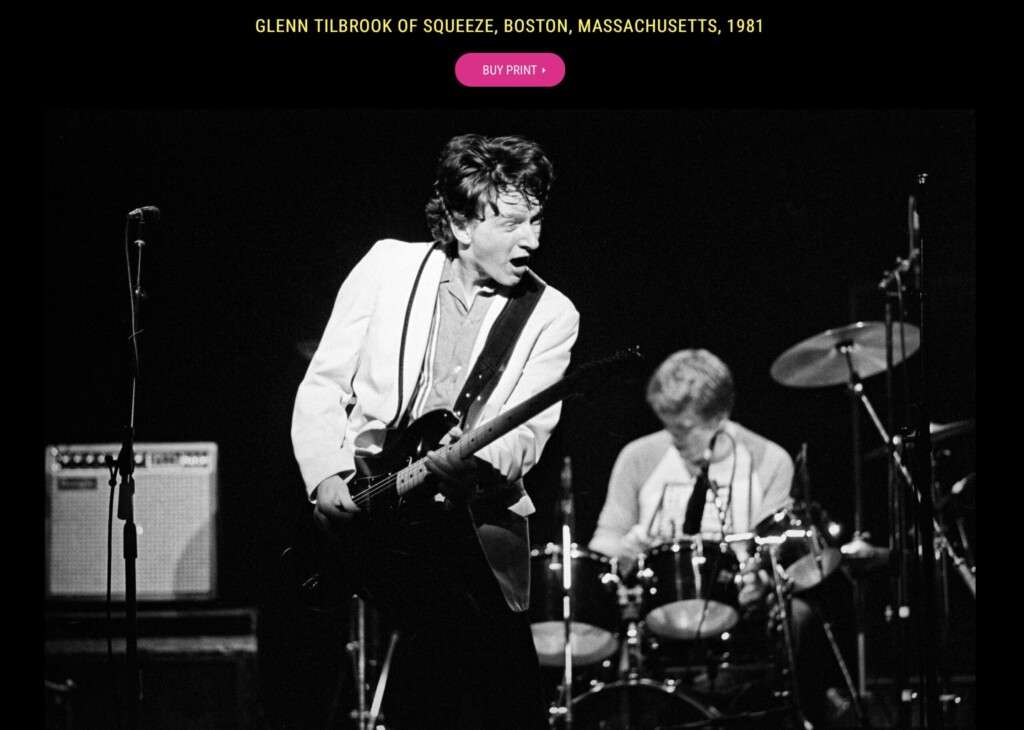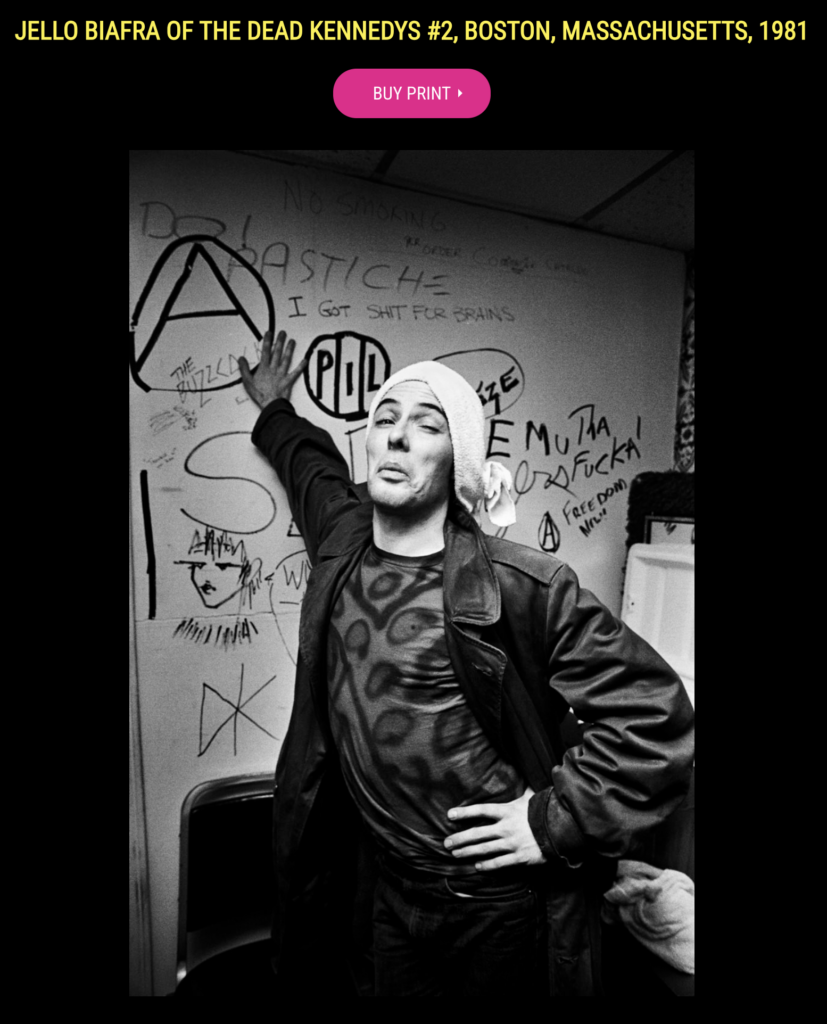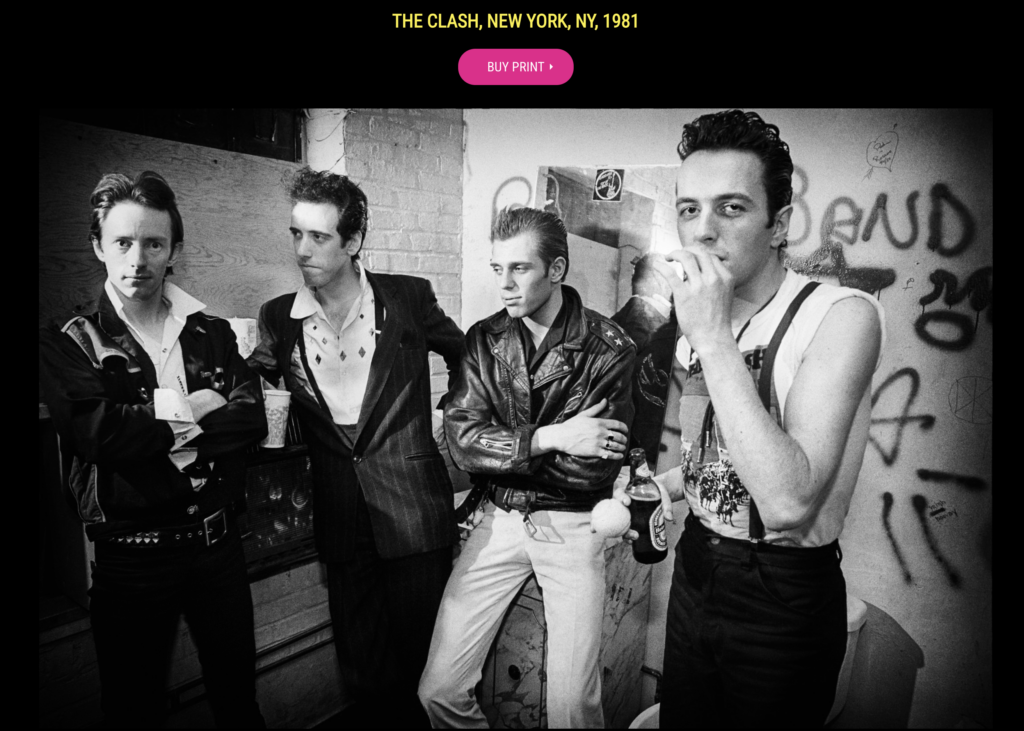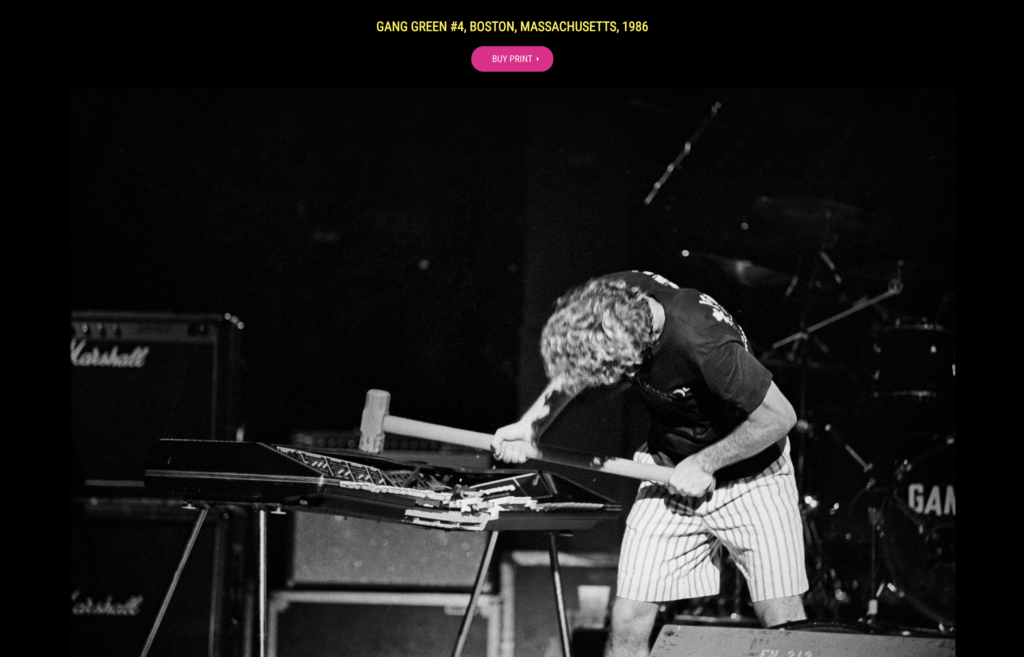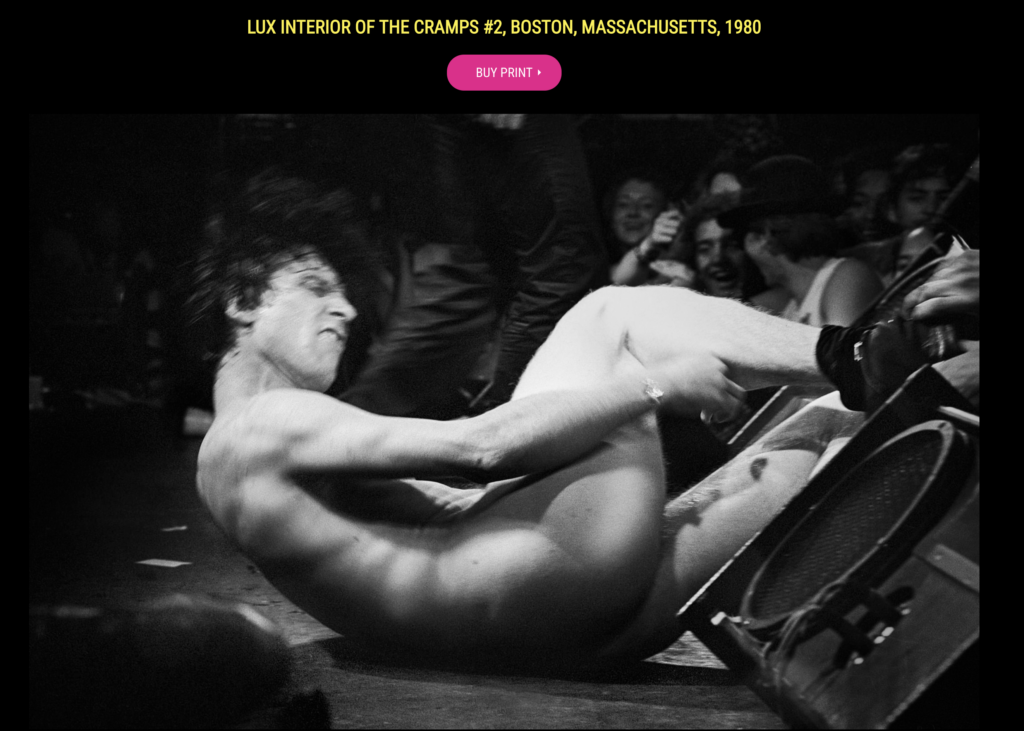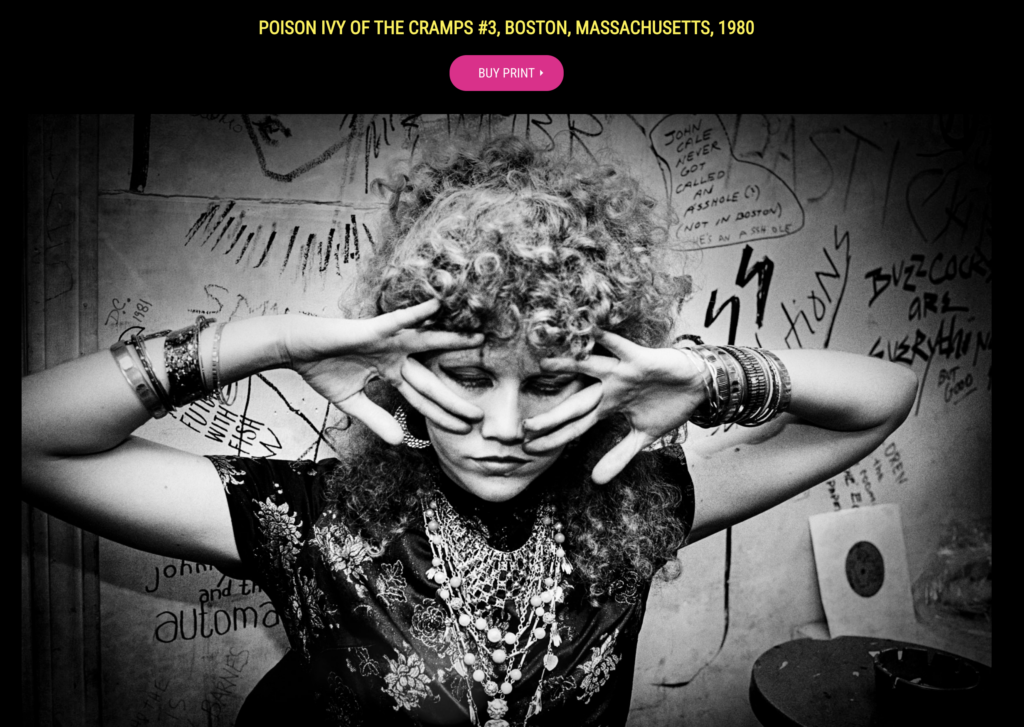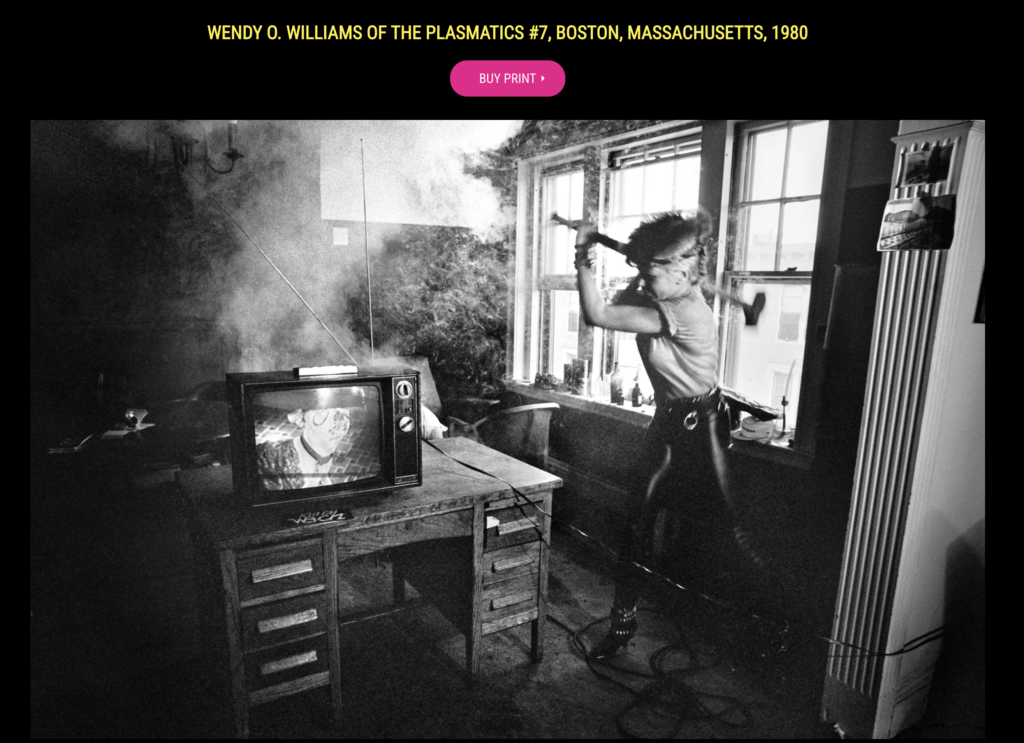Punk Rock’s Influence on Street Art
Punk rock’s influence on street art grew out of the same discontent that fueled the music’s rise— a rejection of the polished, the corporate, and the conformist. As punk challenged the complacency of overproduced arena rock, street art emerged to challenge the blandness of urban sprawl and gentrification. In neighborhoods overlooked or sterilized by development, walls became canvases for rebellion. Graffiti and stencils, much like punk anthems, delivered raw, urgent messages that are unapproved and unapologetically expressive. Both movements shared a DIY ethos that turned public space into protest and creativity into resistance.
Punk rock was a rebellion, expressing frustration with the mainstream through raw, unfiltered creativity. Punk was more than music, it was a lifestyle with a deep ideological connection that embraced DIY ethics. Punk permeated the arts, making its mark outside traditional institutions. From theater to literature, cinema to street performances, Punk rock’s influence on art is undeniable, shaping its aesthetics, message, and cultural significance. Street art influenced by the DIY ethos of Punk became relevant, out front and recognized from the museums where infinity was judged to the homemade craft stores of abandoned urban neighborhoods favored by Punk.
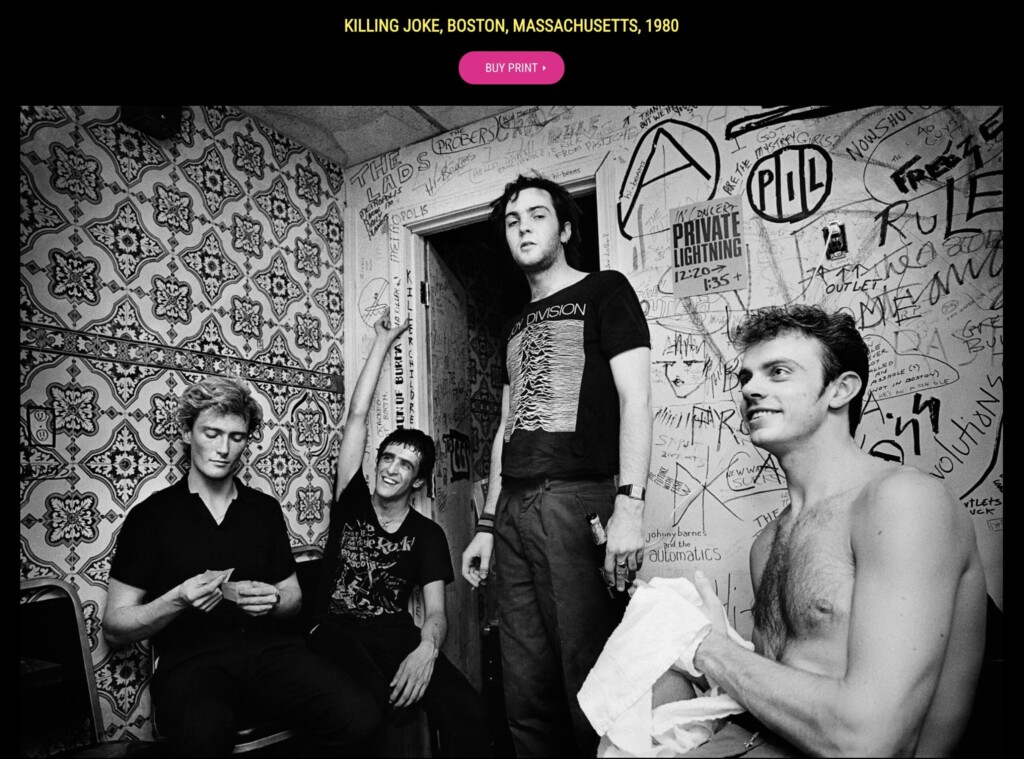
Coloring Outside the Lines
The core of punk rock is defiance. Bands like the Sex Pistols, The Clash, and Black Flag didn’t play music, they challenged political systems, social conformity, and artistic norms. Street art grew alongside and within Punk as a response to urban alienation and political disenfranchisement. It rejected the exclusivity of galleries and museums, bringing art to public spaces where it could confront people directly. Punk rock gave street artists not only a soundtrack but also a model of resistance and independence molded by DIY.
Punk rock was a sound that was visual. It established a gritty, torn-up, cut-and-paste look that would become a blueprint for street art. The Xeroxed zines, hand-scrawled lyrics, and collage-style gig posters created by punk communities influenced artists like Shepard Fairey, Banksy, and FAILE. DIY messy lines, stenciled slogans, and ripped layers were and continue to be central to Punk street art. The ransom-note designs for the Sex Pistols by Jamie Reid, directly inspired the visual messaging strategies seen on city walls.
The Museums of the Streets
Street art was immersive, it was a continuation of the punk commitment to accessibility and subversion. Punk bands played in basements, unused urban spaces, and abandoned clubs. Street artists did the same, bypassing the institutions of gallery shows and gravitating to alleyways, billboards, and sidewalks as canvases. Punk didn’t require formal training or fancy gear, just attitude and intent. Punk street art was and continues to thrive on immediacy and impact, not academic credentials.
Graffiti IS ART
Punk pushed graffiti over the line from disposable to art. Slogans like “No Future” or “Anarchy in the UK” found their way from album sleeves to city walls, shadowing shared anxieties about government control, economic injustice, and cultural homogenization. Street art took the themes of punk lyrics and addressed them in graffiti from the suburbs to the urban jungles of gentrification. The topics were the same: police brutality, and war, street art echoed themes in public spaces, not galleries and museums.
Collaborations between punk musicians and visual artists further blurred the lines between sound and image. Raymond Pettibon, known for his distinctive ink drawings, created artwork for Black Flag and other punk acts before becoming a major figure in the art world. His aggressive, emotionally charged style captured the rawness of punk and set a precedent for street art’s unapologetic voice. Street art continues its punk ethos. Jean-Michel Basquiat, a graffiti artist under the name SAMO, Banksy, and others in political movements continue to access the punk influence.
Punk Rock in Film: How Movies Have Captured the Spirit of Punk
Punk, a rebellious upheaval born from counterculture, is most often recognized through its music—raw, fast, and loud. But its impact stretched far beyond sound. Punk rock in film became one of the most visceral ways to capture the spirit of punk, translating its defiant energy into imagery and story. From gritty documentaries to stylized narratives, movies absorbed punk’s lifestyle and ethos, reflecting its influence not just in soundtracks, but in character, pacing, and visual rebellion. The music of The Ramones, Sex Pistols, Dead Kennedys, and Patti Smith may define the genre, but film helped immortalize its spirit.
Punk on The Big Screen
The DIY spirit of Punk was featured in cinematic ventures such as Jubilee by Derek Jarman, and The Decline of Western Civilization by Penelope Spheeris. Jubilee presents a dystopian vision that highlights and explores the chaos and disillusionment of Punk. It is a film that embodies the disruptive nature of Punk by utilizing a nontraditional storytelling technique. Like Punk turns the usual instruments of rock and blues into a vital new sound, Jubilee turns the tools of cinematography Punk.

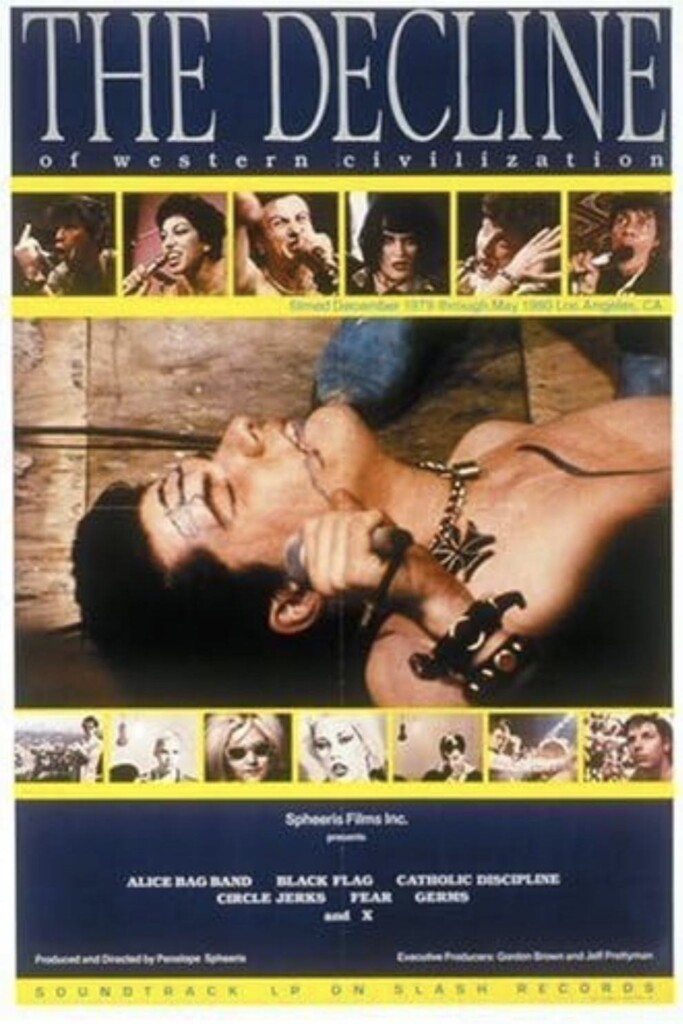
As Punk grew in popularity, so did the press coverage. In cinematography, documentaries tried to present punk with visuals to accentuate the soundtracks. The Decline of Western Civilization by Penelope Spheeris was at the top of the list of Punk documentaries. It provided an unfiltered look at the maturing Los Angeles Punk culture in its formative years. Spheeris knitted together raw performances with uncensored candid interviews to capture the movement in all its authenticity and passion.
Complimented by Thousands of Photos
While Punk cinema was etching its place in the culture, the visuals captured by photographers with early unfettered access continued to document the culture. Michael Grecco documented Punk in a visual narrative of photographs where the music is imagined but clearly heard. Throughout the late 1970s into the 1990s, Grecco immersed himself in the punk scenes of New York and Boston. Growing with Punk, Grecco captured iconic moments of onstage performances and private backstage moments. His work provides a photographic starting point for the leap into cinematic coverage of the Punk culture.
Punk, Post Punk, New Wave: Onstage, Backstage, In Your Face, 1978–1991is a curated collection of the raw intensity of Punk in silent photographs that scream out the musical culture of the era. The Grecco collection showcases intimate portraits and electrifying performances of bands like The Clash, Dead Kennedys, and Talking Heads, capturing the motion and spirit of an era.
Photographs Punked Out into Film
Expanding beyond photography, Grecco ventured into filmmaking with his Punk Art Films series, a part of his traveling multimedia exhibition “Days of Punk.” These films delve into the personal stories and philosophies of punk artists, offering deeper insights into the movement’s ethos. By combining visuals, music, and narratives, Grecco’s films echo the immersive experience that punk cinema strives to deliver. Hatched from some of the earliest personal access to the artists creating the Punk Movement, Grecco speaks from an esteemed position of accepted friend and confidante to the Punk revolution.
Cross-Atlantic Punk: A Comparison of UK vs. US Punk Scenes in the 70s and 80s
Cross-Atlantic Punk was less a movement with a single origin and more a simultaneous eruption of rebellion on both sides of the ocean. The 70s and 80s saw disillusioned youth in both the UK and US crafting distinct punk scenes—raw, urgent responses to the corporatization of music. While the aesthetics and sounds differed, the core was the same: a culture, art, and form of self-expression born from frustration. Comparing the UK vs. US punk scenes during this time reveals how each channeled its own brand of resistance, yet remained united in spirit.
As the counterculture sold out and the hippie movement gentrified into the middle class a DIY spirit and anti-establishment attitude sprang up on both sides of the Atlantic simultaneously. The sound, aesthetics and culture were different because of societal context but they were punk spokes of the same wheel.
US Punk
US punk emerged as an underground rebellion from the manicured suburbs to the decaying abandoned centers of urban blight. In dilapidated clubs too small for corporate rock profitability, bands like the Ramones, Television, Patti Smith, and Dead Boys were carving a raw, stripped-down DIY sound. CBGB’s became the center of attention on a lower eastside that was untouched by gentrification and urban renewal.

Not yet valuable real estate the urban decay of the lower eastside became a mecca of a punk induced bohemian art scene. It was more about individual expression than political statements. In the littered streets ignored by the corporatists a DIY ethos sprung up. The music leaned heavily on garage rock roots, with a focus on speed, simplicity, and personal authenticity. The Ramones, for example, delivered blistering short songs with deadpan humor and teenage angst, not political manifestos.
UK Punk
The UK punk scene exploded in a more confrontational and politically charged way, a reaction to the sinking economic opportunities. The mid-70s in Britain were marked by widespread unemployment, racial tension, and class frustration. Punk became a rallying cry for working-class youth who saw no future in the status quo. Bands like the Sex Pistols and The Clash didn’t just want to sing about it they wanted to burn it down with lyrics that were explicit. Their lyrics attacked the monarchy, the government, and societal norms. US punk was about attitude, UK punk was about revolution.
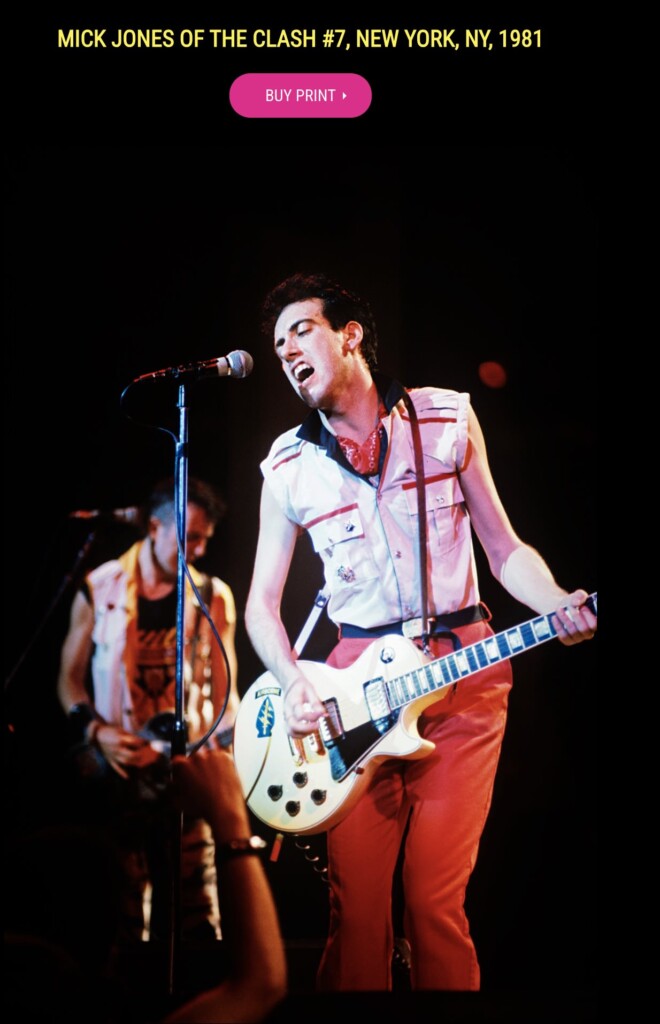
Straddling the Ocean of Punk
The Buzzcocks straddled both worlds. Formed in Manchester, they brought a more melodic, emotional sensibility to UK punk. Their songs about love, alienation, and youth were raw but catchy, helping lay the groundwork for pop-punk and indie rock. While they shared the urgency of their UK contemporaries, their tone was less combative and more introspective, making them accessible to broader audiences on both sides of the Atlantic.
The 1980s saw the split between US and UK Punk widen. Hardcore punk took over in the US influenced by the sound and fury of early UK punk. Black Flag, Minor Threat, and Dead Kennedys turned up the sound of the aggression. It was fast, furious, and fiercely DIY. A community of resistance grew into a subculture focused on personal rebellion rather than broad political critiques.
UK 1980s punk bands morphed into post-punk innovators. New Order, combined the bleak emotional weight of punk with emerging electronic music. Their blend of synth-pop and post-punk aesthetics redefined punk-influenced music. Gang of Four, Siouxsie and the Banshees, and The Fall took a similar turn turning punk energy into moodier, artier, and more experimental sound.
The UK and US punk scenes shared a common heartbeat. The blood of dissatisfaction with the status quo and a desire to build something new from the rubble was its blood. In New York dive bars and on London’s streets, punk on both sides of the Atlantic captured a spirit that lives on today based on the soul of a sound that is raw, honest, and defiantly alive.
The Legacy of Talking Heads in the Art-Punk Movement
In the late 1970s, as punk exploded in New York’s underground scene and echoed across cities from Boston to Berlin, the art-punk movement began to take shape—more cerebral, more experimental. The legacy of Talking Heads within this wave is undeniable. Their fusion of punk’s raw energy with intellectual lyricism, minimalist rhythms, and art school aesthetics helped redefine what punk could be. While others raged against the machine with snarling guitars and speed, Talking Heads carved a new path that blended rebellion with innovation.
They came from the garages of the suburbs, the decaying urban fringes and the abandoned clubs where the rock of revolt once lived. They were dressed in shredded denim, black leather, new wave hairstyles and colors. It was the hatching of a different kind of revolution.
Enter stage left, Talking Heads—an art-school-informed band that would go on to redefine what punk could be. They weren’t born from the scene; they reshaped the scene. Talking Heads fused the urgency of punk with cerebral wit, polyrhythmic grooves, and avant-garde aesthetics. The legacy of Talking Heads, an art punk movement band, still pulses through the bloodline of modern indie, new wave punk and alternative music.
It was formed in 1975 by David Byrne, Tina Weymouth, Chris Frantz, and later Jerry Harrison. Talking Heads emerged from the same New York CBGB scene where The Ramones and Blondie burst forth to put Punk on center stage.
Talking Heads stood apart from every aspect of the punk genre. Talking Heads was complex as opposed to the minimalist presence of other bands. They mixed funk, world music, and conceptual art into a sound that was like a high wire walker on the fringes of punk. The look of Talking Heads was also transformative in punk. Talking Heads were clean-cut, geeky. Talking Heads were art students creating paintings and sculptures in the air by wielding guitars, translating ideas from the gallery into songs of performance.
Their debut album Talking Heads: 77 (1977) laid the groundwork, but it was Fear of Music (1979) and Remain in Light (1980) that truly cemented their status as pioneers. Collaborating with producer Brian Eno, they pushed boundaries—incorporating African rhythms, stream-of-consciousness lyrics, and tape-loop experimentation. Tracks like “Once in a Lifetime” and “Life During Wartime” became anthems to punk, not because of their sonic innovation but for their thematic complexity. They were songs about identity, anxiety, technology, and modern alienation wrapped in infectious grooves.
How Talking Heads Pioneered a Blend of Punk and Art Culture, Influencing Countless Bands
The Talking Heads were essential to the art-punk movement because they refused to be categorized into any punk box. Talking Heads changed the headspace of punk, merging punk’s DIY ethos with art school intellectualism. Their live performances, especially as seen in the groundbreaking concert film Stop Making Sense (1984), were more than shows; they were performance art. David Byrne’s oversized suit, choreographed movements, and minimalist stage design played with perception and persona, making each show a visual musical experience.
The fusion of sound and concept influenced countless bands and artists. Talking Heads blazed the path for the rhythms of Franz Ferdinand, the cerebral cool of LCD Soundsystem, and the genre-defying sprawl of Radiohead. The impact of Talking Heads spilled into visual culture. It paved the way for musicians to think like multimedia artists, blurring the lines between music, film, fashion, and design.
They proved you didn’t have to conform to punk aggression or pop polish to make something new, and lasting. Talking Heads let it be punk to be weird, thoughtful, rhythmic, and smart yet still shake, rattle and roll the soul. Talking Heads still inspires generations of musicians to explore, experiment, and embrace the oddities of identity.
Talking Heads were the cerebral counterpoint to the rage of punk. They were the thinkers, the shapeshifters, the makers of new. Talking Heads is a legacy of not just music but a wide open door of artistic adventure within a space called punk. Talking Heads is a misnomer because they didn’t just talk, they rewired sound and conception.
The Rise of Synth-Punk: From The Human League to Today
The rise of Synth-Punk took the raw, DIY ethos of early punk and fused it with synthesizers, creating a new wave of rebellion. From The Human League to today’s electronic-driven acts, this evolution expanded punk’s sound beyond guitars and drums, proving that defiance could be expressed through distorted synths and mechanical beats just as powerfully as with power chords and primal vocals.
Blossoming into the 1970s dozens of genres of Punk became recognized by the end of the decade. Synth-punk, a genre that fused the aggression of punk with the industrial mechanical precision of electronic music was born as the years turned into the 1980s. Underground synth-punk has maintained a foothold throughout Europe, South America, and the United States. It continues to evolve, grow, and enjoy a resurgence in today’s underground music scene.
Punk Eats Machine
The fast-driving rhythms of early Punk were characterized by scorching guitar shredding with overriding driving drums and resounding bass lines overlayed with primal vocals that made the message loud, theatrical and emphatic. As disco and techno music took hold in the same era, the industrial sound of synthesizers began to surface.
The marriage of the rage against the machine and the sounds of synthetic music was a no-brainer for The Human League. In their earliest incarnation, they were experimenting with combining synthetic music with punk. They laid the groundwork for a genre that would be tagged as synth-punk but moved on to synth-pop in search of the golden ring. The Human League experiment with punk eats machine led them to commercial success as a pop group with their hit, Don’t You Want Me.
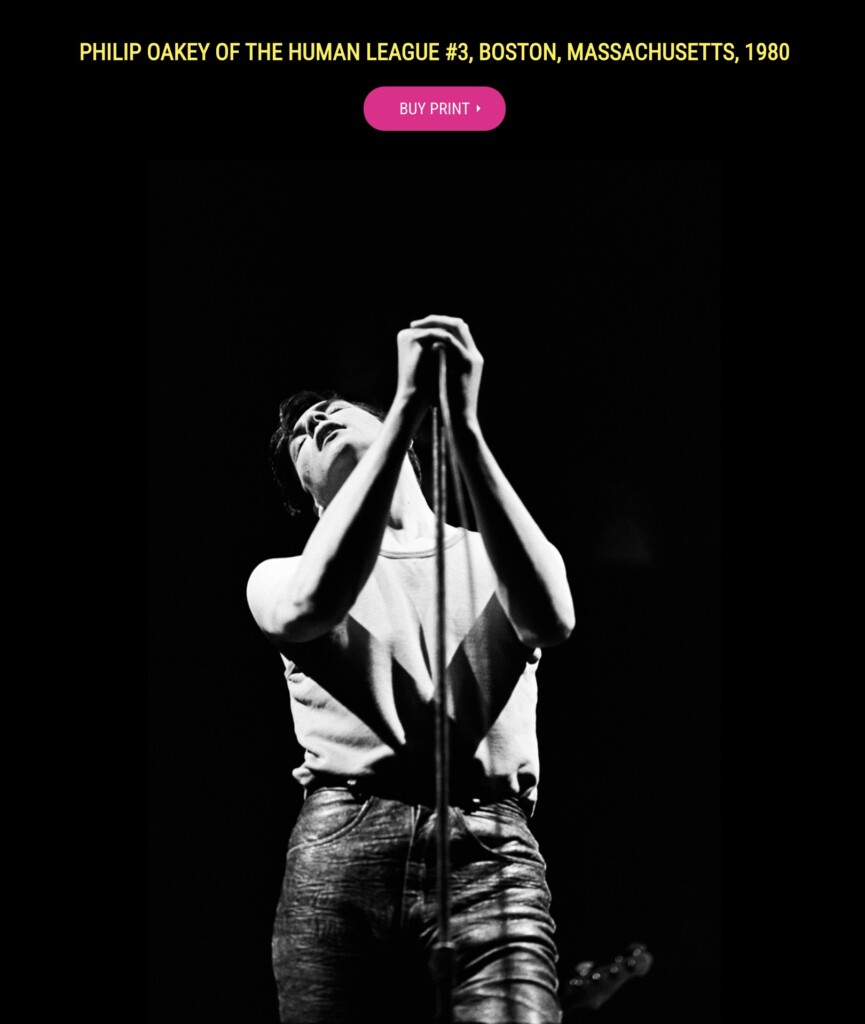
Meanwhile, bands like Suicide and The Screamers saw the borders of punk and machine and pushed the boundaries with a combination of stripped-down punk and synthetic sounds. Led by Alan Vega and Martin Rev, The Screamers combined repetitive drum machines with industrial eerie synthetic sounds overlayed with ominous vocals delivered by Vega. Active in the Los Angeles punk scene of the 70s, The Screamers discarded guitars in favor of the futuristic music of synthesizers to deliver a soundtrack for the dystopia era.
Devo joined the genre with a satirical look at anarchy and its place in the modern world.
“New Wave” was a term that was taking hold to describe bands that music critics couldn’t pigeonhole, so Devo was tagged with the moniker. Devo was a new punk, challenging listeners with antiestablishment lyrics meshed with a robotic sound and energy.
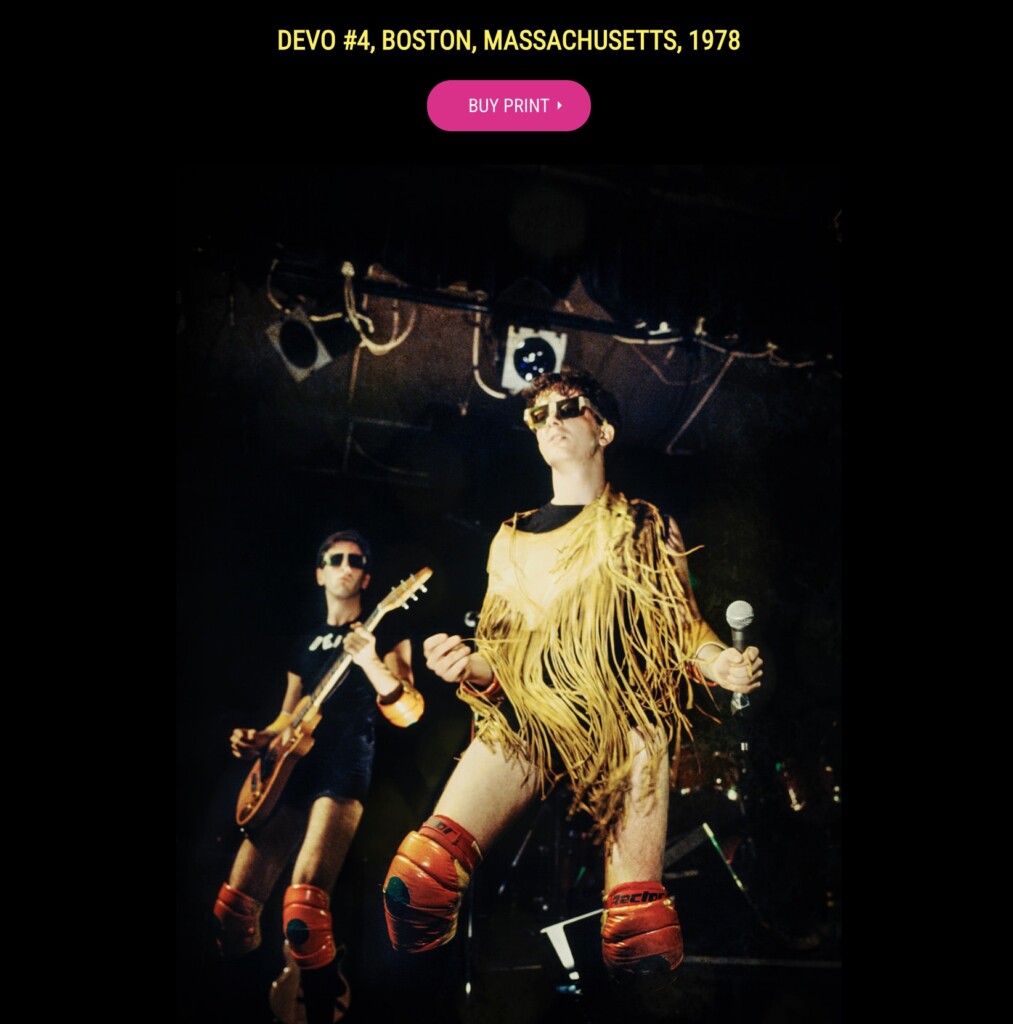
Punk’s Industrial Revolution
Punk underwent an industrial revolution in the 1980s. Bands such as Ministry, Front 242, and Nizer Ebb channeled the aggression of punk and reprocessed it through industrial gear. Cold metallic synthesizers and pounding drum machines were the new sound of Punk. Some bands like Big Black led by Steve Albini maintained the core searing guitars of the Punk revolution combined with the industrial sound to transform punk not into “New Wave,” but synth-punk.
The Revival of Synth-Punk
The Faint, ADULT., and Atari Teenage Riot captivated the punk scene of the 2000s with a confrontational essence of punk blended with electronic beats to create the next evolution of synth-punk. It was a music that was aggressively punk in essence but danceable.
Today the synth-punk movement continues with variations that incorporate techno, noise, and hip-hop into the sound. Scowl, Boy Harsher, and Street Sects have taken the role of synth-punk pioneers once held by The Human League and are leading the reaction against sanitized pop.
The B-52’s Unique Journey Through Music
The B-52’s unique journey through music began in one of the most unexpected places for a punk-adjacent band—Athens, Georgia. Their first gig, a 1977 house party, set the stage for a sound that defied conventions. With Fred Schneider, Kate Pierson, Cindy Wilson, Ricky Wilson, and Keith Strickland at the helm, they crafted an offbeat, high-energy style that stood out in the evolving punk and new wave scenes, proving that musical rebellion could be as playful as it was groundbreaking.
They were hard-core punk at their inception and evolved into their later identity as a pop band during the height of their fame. The B-52’s were born of Punk. Aggressive guitar chords overlayed with a driving beat and nihilistic lyrics that embraced the surreal, and absurd with humor and aesthetic solidified their place as a punk band. Along with the trappings of early punk, driving rhythms, screaming guitars, and an attitude that gave the finger to establishment norms, The B-52’s fused an unusual mix of surfer rock, 60s girl group harmonies, and visions of sci-fi B movies.
One of the things that made The B-52’s sound so unique was their use of unconventional instruments—like a toy piano. That bright, almost childlike tone added a quirky twist to their early tracks, especially in “Dance This Mess Around”. That kind of unexpected experimentation became a signature part of what made The B-52’s so original.
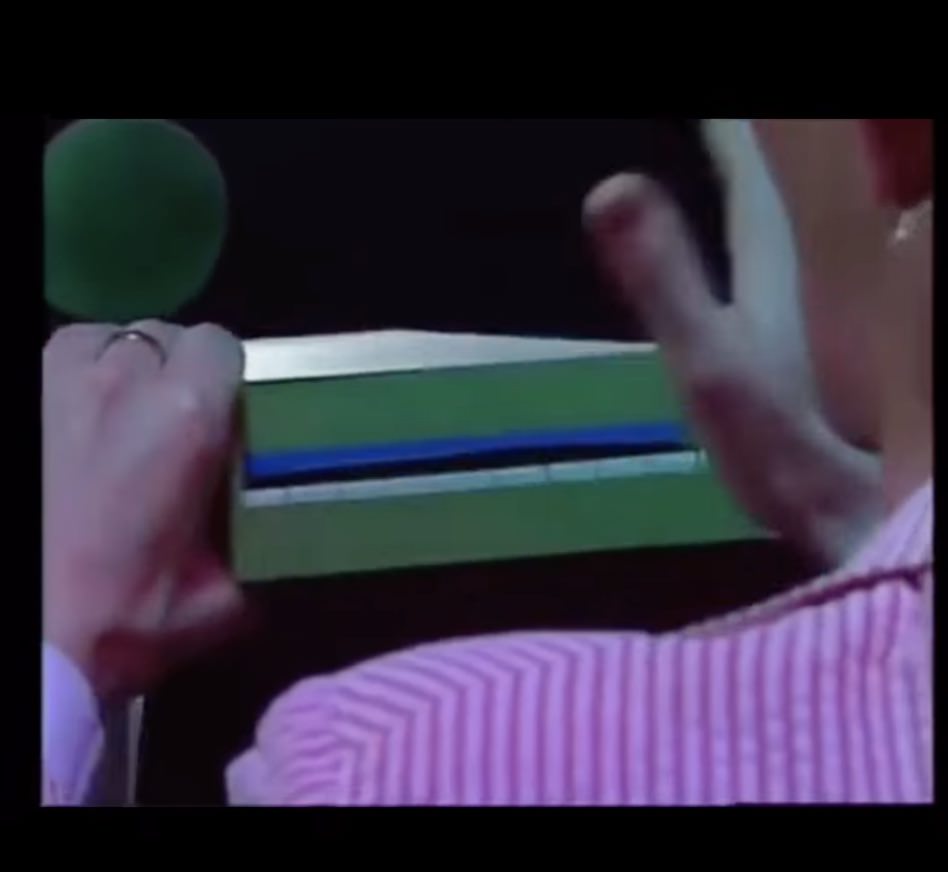
Tracing the B-52’s Transition from Punk Beginnings to Mainstream Success
Their 1979 Album simply titled The B-52’s caught the ear of John Lennon who was on a self-imposed hiatus from music. Upon hearing the driving guitar lines and vocal interplay on songs like Lobster Rock on the first album, Lennon said he was inspired to return to music.
The smashing success of their debut album The B-52’s put them on the radar of the New York punk scene and earned them an avid fan base there. The 1980s saw hard core punk bands in a transitional phase being classified by music rags and critics as “New Wave” for any band that broke the DIY mold of the punk movement and ethos.

Having gained recognition from Lennon, an icon in pop, rock, and mainstream music, The B-52’s were thrust into the shift to “New Wave”. Their sophomore album Wild Planet in 1980 expanded on the sound that made them unique. They continued a playful surreal approach to songwriting and production with tracks Private Idaho and Party Out of Bounds.
Enjoying a crossover of fans from punk, new wave, pop, and mainstream, The B-52’s remained prolific until they were devastated by the loss of guitarist Ricky Wilson from AIDS. Upon their return to the scene with the 1989 release of Cosmic Thing, The B-52’s were fully transitioned into a mainstream pop band. Don Was and Nile Rodgers produced the album, both were entrenched in production styles that garnered radio play. From this professionally produced album, a few singles emerged as hits. Love Shack became the biggest and moved The B-52’s to a household name in music.
Bombing The Classifications
Flying smoothly between classifications from hardcore punk, to pop, to mainstream rock, The B-52’s never lost their charm, appeal or likeability. As they grew across the classifications they blended what they learned into a sound that was uniquely their own. Danceable rhythms, surreal humor, and raw energy evolved along with their growth from Punk beginnings to mainstream success. The B-52’s wound up their long careers with a residency in Las Vegas.
The Evolution of Punk Fashion with Joan Jett and The Runaways
With its pounding beats and defiant lyrics, Punk was a cultural revolution that tore down societal norms. The evolution of punk fashion that emerged from this movement, seen in Joan Jett and The Runaways, embodied the same fearless energy—DIY, unfiltered, and dripping with attitude.
Joan Jett and The Runaways were influential in shaping the sound, look and feel of the music and the performers, and a leading voice of Punk fashion. Jett and The Runaways embraced chopped hair, leather jackets, ripped jeans, goth makeup, and a disheveled look that shouted rebellion. The music of Joan Jett and The Runaways left an indelible mark on rock and punk. They redefined the performance band. Jett and The Runaways put the female rockstar or in this case, punkstar, front and center as musical messengers and fashion icons.
The Runways led by Joan Jett Were The Punk Fashion Runway
At the pinnacle of glam rock, disco, arena rock, and overproduced albums of the mid-1970s, The Runaways brought a defiant aesthetic that was distinctly punk. While mainstream female musicians and singers were corporate Barbie copies playing dress up with extravagant outfits, and stylized hair that represented the corporatization of rock, Joan Jett and The Runaways were streetwise.
The look and feel of The Runaways became an influence for others from New York, Boston, Europe, and South America. Their style became the poster of the Punk look. It was a look that matched the lifestyle of nights that turned into dawn. It was tough; it screamed confidence and a refusal to conform to a society of sameness.
Black leather became the material of punk, but it was individualized by the wearer. It was paired with worn and tattered black or blue jeans and topped with thrift store t-shirts a size too small.
The Runaways used studded accessories to individualize the look. The Punk Culture embraced studs, message buttons, safety-pins, chains and metal decorations that played well against black leather.
Jett Takes Off on The Runway
Joan Jett and The Runaways disbanded but she continued to be a driving fashion influence while fronting The Blackhearts. Jett’s basic outfit on and off stage was skintight leather pants, biker boots, and heavy accessorized outfits. She wore her beliefs on her sleeve with studs, pins, and patches that represented her music, her politics, her art, her aurora, and her inner core.
The Jett fashion look was adopted by bands, fans, and those who lived punk. It was not just the sound of her voice or the driving force of her rhythm that influenced Punk, it was her look that said, “I reject mainstream clothing etiquette.” The punk aesthetic of Jett was a personal statement against the conspicuous consumption of mainstream America.
Jett Fashion Continues to Highlight the DIY of Punk
The look of Jett adapted by the Punk culture was a thrift store fashion. It symbolized the DIY ethos of the early days of Punk when bands recorded and distributed their music without corporate oversight. The Jett fashion look born from recycled thrift store clothing continues the DIY ethos of sustainability.
The Punk look was copied and sold by designers around the world as cutting-edge fashion. The real look that continues today influenced by Jett, The Runaways, The Blackhearts and the core of Punk comes from secondhand thrift stores. It is purposely repurposed fashion as a statement against the decadence of a society of waste.
The Dead Kennedys’ Influence on Political Punk Music
Like the protest faction of the folk music industry, the Dead Kennedys had a huge influence on political punk music and defined political activism for Punk. Coming out of the first wave of Punk music in the late 1970s, the Dead Kennedys used sharp-witted satirical lyrics against aggressive fast music to highlight their political commentary. The Dead Kennedys’ powerful sound pushed a message that challenged political corruption, social inequality, and media manipulation. Unlike other counterparts of the era, the Dead Kennedys left no doubt that they were using the medium of punk to challenge not just the commercialism of the music industry but the politics of corporate control.
The Politics of Experience
In 1978 when arena rock, over-produced albums, and marketing soared in the music industry, the Dead Kennedys were formed in San Francisco. Once the home of the epitome of alternative rock, The Grateful Dead, The Jefferson Airplane, and the San Francisco sound, the city, its music, and its activists were melting into a world of corporatism.
Jello Biafra, the frontperson of the Dead Kennedys, was determined to make music with a powerful message. The Dead Kennedys called out class warfare and imperialism in their driving “Kill the Poor,” a song whose meaning could not be misunderstood. “Holiday in Cambodia” put a spotlight on the dictatorial regime of Pol Pot and the genocide that was happening in the Southeast Asia country in the aftermath of the US withdrawal from Vietnam.
The debut album didn’t hit the streets till 1980. It was an instant classic in the annals of Punk that propelled the Dead Kennedys to legendary status. The title itself was a political commentary on life in the Regan era, Fresh Fruit for Rotting Vegetable.
Each song on Fresh Fruit for Rotting Vegetable comments on societal ills. The songs included, “California Uber Alles” an attack on Governor Jerry Brown and his hippie-fascist vision of America. It was hauntingly the antithesis of California dreaming and the peace and love of San Francisco. It was in-your-face punk to its core, with lyrics taken from the German National Anthem it began with, “Deutschland, Deutschland über alles.” Biafra and co-writer Greenway substituted Deutschland for California to shake up the counterculture being called out by Punk.
Punking Satire
The Dead Kennedys used the revolutionary in-your-face driving rhythms as a weapon of political dissent to inspire a new alternative culture, Punk. The message was clear, think and act to change society.
Biafra, as the lead singer for the Dead Kennedys, had a performance artist persona. He acted out his satirical wit with a theatrical delivery that added satirical humor to disarm critics while delivering an accessible, powerful call to action to the Punk lifestyle.
Political Power Engraved in The Name
The Dead Kennedys paved the road for punk to address not just corporate greed in the record industry but every aspect of politics. Directly attacking the taboo and naming names, the Dead Kennedys opened the door for other bands to walk through with a new meaning for the rebellion of Punk. Anti-Flag, Bad Religion, and Propagandi quickly entered with political power engraved in their name.
The Dead Kennedys created a movement within Punk. They were a blend of theatrics, driving punk energy combined with social commentary using punking satire.
The Dead Kennedys Alternative Tentacles
Beyond their own songs, The Dead Kennedys were keen on creating an outlet for others who were walking the political action course. The earliest days of punk in New York, Boston, L.A., Detroit, Berlin, London, and beyond saw records being pressed and distributed in the DIY Ethos of Punk. It was at its core.
Determined to resurrect the essence of the DIY Punk Ethos, the Dead Kennedys formed a record label free from corporate manipulation. Aptly named Alternative Tentacles, the label embodied the essential punk ethos. A DIY platform that would record and distribute politically charged punk artists hidden beneath the surface who the corporate record companies looked at with disdain.
As an offshoot of the Dead Kennedys political direction, Alternative Tentacles was critical in giving voice to underground punk bands. Recapturing the idea and essence of a community, Alternative Tentacles reignited the punk ethos of DIY. Beyond the immediate access to politically centered punk lyrics, music, bands, and artists, Alternative Tentacles gave inspiration to a new generation of independent labels. The Dead Kennedys as a band embodied more than the music of punk. They marketed rebellion as a form of self-expression and were an influence on political punk as a movement.
Modern Punk: A Look at How New Bands Are Keeping the Spirit Alive
In the early days of rock n’ roll, song refrains shouted out what became mottos. Rock n’ roll will never die, and long live rock are just two of the many slogans that evolved from rock n’ roll, the music of rebellion. Punk rock was more than a genre of rock, it was a mindset, a movement, and a challenge to the status quo of society and rock itself. It has now evolved into Modern Punk, where the new punk bands are keeping the spirit alive.
The DIY ethos of punk stuck its finger up to the corporate raiders who co-opted rock. The original seeds of punk were sown in the early 1970s, but each succeeding band struck their own chords and screamed their own lyrics of rebellion to mold the core into something new. Just as rock n’ roll will never die, punk as music, a lifestyle, a culture, an art form, an interpretation of living itself will never die.
Punk Lives
After six decades the core principle of the original punk scene, the DIY ethos is undergoing a resurgence. The punk identity has never died even when it risked being swallowed by the very corporate raiders that the roots of Punk were challenging.
The 1970s punks cut, printed, and distributed their own albums and gained a following in the scene through self-promotion and performance. Technology has opened new doors for the DIY ethos of Punk today. Bandcamp, YouTube, and social media platforms are essential tools for the self-promotion and distribution of punk music.
The punk culture has gone full circle by co-opting the tools of the corporate raiders and turning them into DIY tech for the masses. The gatekeepers of the music industry are easily bypassed allowing punks to access and grow their audiences organically. On the flip side audiences can bypass the music pushed by record labels and find their own genre.
The Activism Music of Punk
At its peak during the first evolution, Punk quickly splintered into political punk, eccentric punk, artistic punk, party punk, skate punk, urban punk, garage punk, and so many subgenres that have continued to flourish and morph in the 2020s.
IDLES, a UK-based band known for their cathartic performances and raw lyricism, embodies this soul of the ethos of punk activism. Their themes include toxic masculinity, mental health, and political unrest explored with the raw unpolished energy embraced by the soul of punk.
Down under in Australia, Amyl and the Sniffers have amassed a following reminiscent of early punks like The Clash, Sex Pistols and Dead Kennedys. They are channeling the essence of the chaotic energy of early punk with brash, high-energy performances and sharp, satirical, activist lyrics.
The Politics of Experience
Early Ramones were not political per se, but the evolution of punk itself was, is and shall remain a political statement of a culture. Punks today embrace the genres of the past and sharpen others in response to a changing political climate.
Down in Baltimore War on Women, a feminist punk group supercharged the genre to light the fires of topics like gender equality, and reproductive rights. The Punk anthem is alive and well with bands like Anti-Flag blending the driving sounds of traditional punk music with activist message lyrics.
Punk Will Never Die
As a culture, a lifestyle, an art form, a philosophy, a worldview and a music, Punk is alive and well over a half-century after its incarnation. While early bands paved the way for the DIY ethos and then took the record company money and went on orchestrated world tours, the core of Punk survived. The DIY ethos of Punk is a purity of spirit that will continue to flourish even as political and cultural changes happen around it.
The Geography of Punk: How Different Cities Shaped Their Unique Punk Sounds
Punk Rock, which was the seed for what grew to be the social phenomenon of the punk culture was not centralized. Like its DIY roots, Punk was a product of its environment. The essence of the punk revolution was influenced and shaped by each geographic location. London, New York, and Los Angeles all fed the punk revolution, but each with its own flavor and interpretation of the soul of Punk.
Rock, music, and cultural historians pin the timeline of the birth of punk as the early 70s. many who were on scene claim its instigation was earlier. All agree that throughout the 1970s and into the 1980s Punk matured as a music, a movement, and a culture throughout the world. Each location shaped punk with different influences that showed in the unique geographic sound.
Michael Grecco captures the untamed spirit of punk’s golden era in his photographs which he has curated in his books Days of Punk, and Punk, Post Punk and New Wave. Through his historically accurate photographs, he sheds light on how geography played a role in shaping the diversity of punk. He captures the distinctive flavor of the movement and bands that created idiosyncratic local attitudes and a subculture of punk culture.
London Punk, the Center of Anarchy
The 1970s punk scene was a volatile response to a post-war culture where citizens were separated by a rigid class system. The economic upheaval, high unemployment, and a pampered upper crust were a driving force in political volcanoes that erupted in punk music. Prim and proper were not even considered as punk was weaponized against the establishment. The lyrics of anarchy were shock and awe backed by the raw driving, grating music that was the essence of punk.
The London punk scene drivers were the Sex Pistols and The Clash. The culture included its music cathedral, The Roxy. Its dress was from the shelves of Vivienne Westwood’s clothing store SEX.
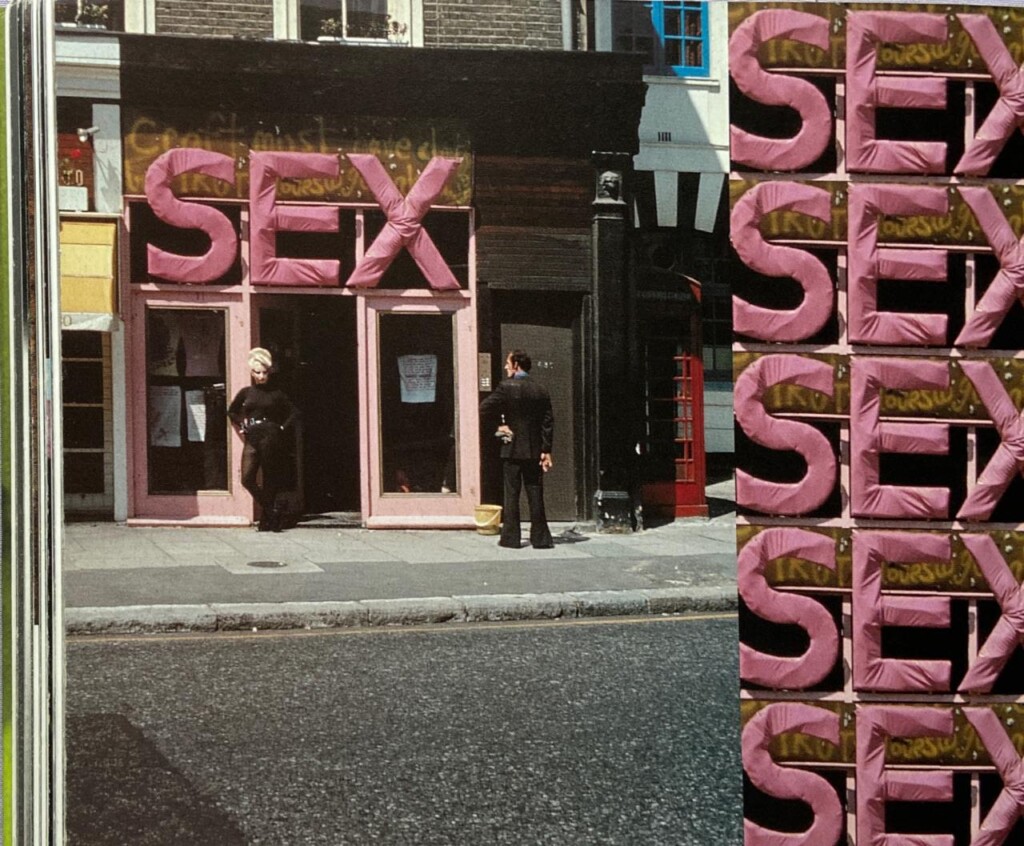
London boutique, SEX, by Vivienne Westwood and Malcolm McLaren (photo credit: Gata Magazine)
Grecco was fortunate to capture The Clash and The Sex Pistols as well as their audiences as they performed and reacted to the politically charged anthems that were London Punk.
The Art of Punk, New York City
Like the city and tri-state area itself, the Punk music and culture that was New York City Punk was a melting pot of music, art, and performance. Its legendary shrine CBGBs hosted a who’s who of those who would become punk royalty. Minimalist, avant-garde, raw, incendiary, and innovative punks like The Ramones, Television, and Patti Smith staked their claim as a subgenre of the movement.
The graffiti, clothing, urban art deco buildings, and the grime and grit of New York City supplied the backgrounds, foregrounds, and additional characters to the Grecco Punk Photographs from the New York City scene. London punk was confrontational in your face while New York Punk was introspective, laid back, and poetic, tainted with the irony of urban realism. The lenses of Micheal Grecco did not discriminate, he captured it all in black and white and living color.
Los Angeles Punk
Sunny California was late to the punk movement, at least publicly. Hidden from view, hardcore punk with faster, heavier, and more aggressive driving music was evolving. Los Angeles Punk was repped by Black Flag, Circle Jerks, and Dead Kennedys.
L.A. punk shows were driven by a frantic violet audience participation. It defied the conformity of suburban society and challenged the police state mentality of a city that was home to the major record labels. Claimed to be the beginnings of the audience pit, it is a form of audience participation that the camera of Grecco captured as a testament to the intensity of Punk, its music culture, and its people.
How The Clash Inspired a New Generation of Punk Bands
How The Clash Inspired a New Generation of Punk Bands
Punk emerged as a reaction to the rock and roll detour from activism to decadence. Among the bands, The Clash, in particular, has inspired a new generation of punk bands. Once the music and fury of revolution, rock was turned into a corporate product. It was a money machine for promoters, agents, and record companies. Like all movements, Punk was born out of change.
Those who felt betrayed by the selling of rock and roll took it back with a DIY ethos. Punk brought the music back to basics and a culture followed. Branded designer jeans that were sold in chain stores and malls that were carbon copies of each other were dissed in favor of local secondhand shops and used clothing stores.
The Clash took the essence of Punk and married it with the activism of the late 60s rock and roll to produce song lyrics that challenged the status quo. The Clash hits like London Calling, Rock the Casbah, and Should I Stay or Should I Go turned the driving essence sound of Punk into a political calling. Change, anarchy, revolt, revolution, and commentary all evolved throughout the Punk movement because of the Influence of The Clash.
Crossing Genres
The Clash were unequivocally Punk. They were also musicians who understood musical movements and styles, The driving chords and impassioned lyrics of The Clash were a melting pot of reggae, ska, dub, rockabilly, blues, jazz, and folk protest music. The Clash took all that preceded them and made it Punk.
The musical experimentation and lyrics that were a call to action or inaction were influencers to their contemporaries and future punk bands. Rancid, who mix punk and ska, and modern acts like The Interrupters are indebted to The Clash’s willingness to embrace genre diversity. The Clash taught later generations that punk wasn’t born to fit a mold, it needed to evolve.
To Live Outside The Music Industry
As a music born from those on the outside Punk is a music of political activism. Every Punk band was in effect a political statement. The Clash took the DIY ethos of Punk, they controlled their own process even after being signed to a big-money record deal. They maintained their conviction that Punk was not a product of the corporate bottom line. It was and will continue to be an art form with a direct message for social change. They took the money but maintained total control of their product and packaging. The Clash insisted on and maintained their creative freedom. They were the Punk model of integrity that proved bands could succeed without compromising their vision. From the 1980s through the new millennium, the Punk ethos exhibited by The Clash remains a guiding influence. Influenced by The Clash, bands like Fugazi understood the power of a DIY record label and operated independently of the corporate conglomerate music industry.
Punk Influencer
In the age of social media, the Influencer became a power that the corporate advertiser couldn’t imagine. The Clash, born in another century, is a lasting influence on the legacy of Punk. Their influence cannot be denied. The Clash combines the DIY essence of Punk with the genre of melting music, political lyrics, and a neighborhood reach that spans the globe.
Their legacy lives on in well-known acts like Green Day along with underground punk scenes throughout the world. The Clash is not just a sound, it is a spirit. The DIY ethos of The Clash encourages pushing boundaries, questioning authority, and creating music that speaks to the heart of the human experience. The Clash didn’t just inspire one generation, they gave punk a blueprint for many generations.
Punk’s Longevity: How Classic Bands Have Adapted to the Modern Music Scene
Talking about punk’s longevity, ever wondered how classic bands have adapted to the modern music scene? Punk was a DIY revolt against the corporatizing consumerism of mainstream rock and roll. Once considered a music of revolt by the 1970s, rock was ingrained in ad campaigns for products from soda to political candidates. It was smoothly transformed by corporate record companies, agents, and advertising professionals into the status quo.
Fueled by the raw energy of a disaffected youth Punk Rock was born. It was driven by the energy of creation. Its sound was real and raw. Punk was the opposite of the overproduction that was holding rock and roll for ransom with big-money record contracts and arena concerts.
Punk rock began to define a new generation. From the tinder of its DIY ethos, stars of the movement were born through word of mouth. Defining the new generation music of punk, The Clash, Sex Pistols, Dead Kennedys, and The Ramones paved the way. Each faced its own battles as they struggled with the trappings of fame and met fates that were dissimilar yet the same.
Name recognition and the power of their music enabled some to transition throughout the decades and maintain their draw. Like all recording artists, seminal punk bands faced new challenges. A shifting culture, technology, and digital streaming changed the way music was broadcast. The core message and energy of Punk proved resilient. Not every Punk Band transitioned from the 1970s and 80s into the new world order of the 2000s but the most powerful survived and thrived in the modern music scene.
The Clash: A Genre of Diversity
Rock the Casbah and London Calling were monster hits for The Clash. They were immediately propelled from the Face of Punk into the Royalty of Rock. The essence of The Clash cannot be defined; they created a genre of diversity while maintaining a foot in the Punk scene. The music of The Clash, like original rock ‘n roll, was a culmination of the rhythms of the soul. The Clash infused reggae, ska, and a primitive beat that incorporated jazz, blues, soul, and gospel as the soundtrack for political messages of equality, peace, and change.
In the early 1980s, at the height of their career before another of the largest hits, Combat Rock was released, and The Clash fell apart. Joe Strummer, the dominant political influencer of the band, rallied the other members to fire the drummer, Topper Headon, because of his heroin addiction.
Despite the breakup, The Clash is still alive and well as a thriving favorite of the current generation. Surviving members, like Mick Jones, continue to honor the legacy of The Clash through documentaries and collaborations, ensuring that the band’s anti-establishment message reaches a modern audience. Jones has also supported charitable and activist causes, tying into The Clash’s legacy of social justice.
Sex Pistols, Dead Kennedys, and The Ramones Punk On
In any monument to Punk from the 1970s to 1980s its Mount Rushmore would have The Clash, Dead Kennedys, The Ramones and Sex Pistols chiseled into the granite of Rock n Roll. Fronted by Johnny Rotten (John Lydon) the Sex Pistols defined the Punk attitude. Lydon continues to do interviews, and appear in documentaries and on reality TV. Despite his bitter falling out with band members and their families, it is his current work that keeps the Sex Pistols center stage with new generations of Punk culture.
The Dead Kennedys fronted by Jello Biafra were the political wing of Punk. Biafra continues to keep the Dead Kennedys relevant to succeeding generations with public appearances, speeches, and a record label. He has embraced the streaming services that this generation favors. His active adaptability ensures that this generation of Punks have access to the messages of the music of Dead Kennedys.
To the uninitiated The Ramones, their look, and sound resonate Punk. All of the original members have died, yet their memories live on. Big box stores, the antithesis of Punk sell Ramones memorabilia as if they were a current band. A new generation of those who relate to the band embrace it all, the look, the music, and the attitude.
“Everybody Has a Story to Tell” Joe Strummer
The Punk story continues. The Classic Punk Bands were adaptable to the new media, technology, and streaming. The message and music of Punk are universal to the human experience, it is a continuing influence of new artists who want to tell their story.
The Punk Rock Renaissance: Why Punk Music Still Matters Today
The music genre known as Punk Rock by those on the outside looking in belittles the fact that it is an evolving cultural revolution. During its birth in the abandoned urban clubs from Boston to New York, it was mislabeled as a music of rebellion and a primal scream against the mundane establishment. It was more than that. It was the Punk Rock Renaissance that made Punk music still matter today.
Punk was not just music, it was a way of existence, a cultural revolution that reinterpreted life for the disillusioned, disaffected, and frustrated individuals. The driving rhythms of disagreement and pounding percussion were accented with primal conflict lead lines and guttural vocals that gave voice to a DIY energy that crossed generational boundaries to challenge the status quo.
The vinyl recordings captured the soundtrack of Punk while photographers like Michael Grecco who earned unfettered access captured the visual narrative of its lifestyle, music, art, philosophy, and culture.
Punk Roots
There is no doubt that Punk Rock led the charge and stuck its middle finger at the music industry that coopted the revolution of the counterculture. The grimy fingers of corporate greed turned the roots music of black blues, ska, gospel, and rock and roll into a stagnant, overproduced, homogenized money machine.
Punk Rock was its antithesis. Punk Rock and the culture it spawned thrived on a DIY ethos with self-produced and distributed records. It quickly attracted those who scoffed at traditional success metrics and produced a new personal and world view.
The new wave music of Punk born in suburban garages and urban clubs was a lightning rod for the birth of Punk Rock bands that became the recognized brand to the masses who clamored to latch on to the new flavor of Punk, its music, fashion, art, philosophy, goals or lack of them and its politics.
The Ramones, The Sex Pistols, and The Clash created a sound that was fast, aggressive, and politically charged. It captured and spat out the anger and disillusionment of a generation who refused to pay homage to meaninglessness. The 1970s into the 1980s was fueled by economic hardships, political instability, and a lust for freedom of expression. It all provided tinder for the soundtrack that created the punk culture. Punk was about rejecting the status quo, a spirit that still resonates today with those who refuse to wear the uniforms of conformity. Punk still matters today because it never went away. To claim there is a Punk Renaissance means that it died and was reborn again and then mysteriously saved.
The Punk Metamorphosis
When Michael Grecco captured the bold, raw, and authentic images of the legends Iggy Pop, The Clash, and The Ramones, and hundreds of others over the decades he was unknowingly documenting a living history that continues its metamorphosis decades later.
Punk matters today not because it is a nostalgic renaissance but because it is in a state of constant transformation. We even hear there will be a Till Tuesday reunion coming soon. Those that were not born when CBGBs and The Rat were the hallowed stages of Punk Music continue to gravitate to its DIY ethos.
The music of Punk is accessible on vinyl and digitally and the images of Michael Grecco have and continue to provide generations with a visual memory of its earlier metamorphosis.
The Changing Faces of Punk: How the Punk Scene Evolved in the ’80s and ’90s
Punk had evolved and changed faces across the years, specifically in the ’80s and ’90s. Punk music in the 1970s was dominated by a club scene that emerged in the marginalized urban neighborhoods of large cities. Bands weren’t necessarily urban by nature or birth, but they found stages and audiences in repurposed bars, clubs, theaters, and retail spaces in the ungentrified urban environment.
London, New York, Boston, and Berlin were stomping grounds for the disaffected who brought a DIY ethos to a new sound. The Music was the soundtrack for a culture. Punk affected lifestyle, fashion, art, politics, personal and societal relationships. Punk changed the way that those who couldn’t make sense of corporate society interacted with each other and the outside world.
The Punk scene was transformative by nature. It did not, would not, and could not conform to a homogenized society reaching for a mythical golden ring at any cost. 1970s Punk music and culture was raw and stripped down, it screamed anti-establishment. The transformation of Punk didn’t happen overnight.
Throughout the 1980s and into the 1990s, Punk was morphing from an umbrella of one into subgenres. Transformations in sound, style, fashion, philosophy, political action, or anarchy pushed the boundaries of Punk into the unknown. Throughout this metamorphosis, photographer Michael Grecco was undergoing an artistic transformation. His fascination with using natural shadows and light combined with framing, focus, and angles positioned him to capture glimpses of the changing faces of punk in black and white.
The 1970s Punk
In the midst of an era of polished production, mass-produced fashion, retail clones, and arena rock, the DIY ethos of Punk was emerging from suburban garages and urban landscapes.
The Sex Pistols in the UK and The Ramones in NYC channeled the anger of a disillusioned youth. They gave sound to those who were rebelling against everything from the music industry to societal norms. Fast, loud, unpolished, gritty, and homemade, Punk rejected bloated rock anthems, album cover fantasies, and mega-dollar productions. The soundtrack of Punk was the total opposite. Its songs were short, sharp, and abrasive.
Into the 1980s
The fundamental DIY ethos and its core of rebellion evolved as Punk gave way to new messages and diverse causes. Harkening back to the earliest garage and abandoned factory bands of its dawn, Punk was changing its face and embracing regional differences, sounds, looks, and reasons for existence.
Punk was being reinterpreted with genres that included hardcore punk in the US, post-punk in the UK, and anarcho-punk in Berlin. Each subgenre was unequivocally punk with a unique prescription of the sonic experimentations that would lead punk into the 1990s and beyond.
The Disaffected Punk Faces
As if mimicking its core value as the music of the disaffected, marginalized, and otherwise pissed-off generation, punk was changing faces. The US saw the rise of bands like Black Flag, Minor Threat, and Dead Kennedy’s take on the regional hardcore face of punk. It was a brand of Punk that fed off the aggression of early punk and amplified it to another level.
Other faces of Punk included the straight-edge punk scene of Washington, D.C. that rejected drugs and alcohol. In California Skate-Punk was taking off, combining punk culture with a lifestyle. In each incarnation of regional punk around the world, the core of punk remains the same.
The Living Faces of Punk
Michael Grecco curated a book of photographs that captures the energy, chaos, and ferocity of the faces of Punk. His book, Punk, Post-Punk, New Wave: Onstage, Backstage, In Your Face, 1978-1991 captures images of the faces of Punk as they morph throughout the subgenres of the culture. The Grecco photos capture sweaty, explosive performances and chaotic crowd scenes. It provides a living visual record of the raw energy of Punk. The visceral connection between musicians and their audiences jumps out of the unfiltered clear crisp photos of Michael Grecco.
Iconic Fashions and Styles from the Birth of Punk
Like previous youth revolutions that embraced a new and different soundtrack, Punk Rock gave birth to a new wave in art, theory, philosophy, fashion, and lifestyle. The raw driving primal sound of the Punk soul born of the disaffected and determined to do it their way in a DIY ethos gave birth to a corresponding new wave of fashion.
Punk as music embraced a stripped-down driving beat with primal lyrics that spit in the eye of the sellout of rock. Punk was and is a response to the elaborate album production and arena rock shows spawned by the corporatization of the financial profits of a counterculture gone mainstream. Hippie fashion that was birthed in the anti-war psychedelic rebellion of the college middle class was mass-produced for sale at every mall and corporate clothing chain around the world.
The Punk Symbolism of Torn and Shredded Fashion
Coincidence, fortuitous, or determinative early punk fashion reflected the ideology of the sound. The torn and shredded fashions of the early punk days mirrored the driving, primal synthesis of remedial rock accented by the sounds of voices rebelling against the status quo. Punk was a rebellion that was determined to tear apart the exploitation of music for corporate profits. Punk as a music, philosophy, art, fashion, and lifestyle were taking dead aim at shredding the homogenization of rock.
Customization was a do-it-yourself fashion statement, ripped, torn, studded, and pinned was the unique look that although similar among the punks was different for each. Torn t-shirts and frayed seams were embraced throughout the punk scenes from Boston to New York, to LA to Detroit, across the Pond to London, and over to Berlin.
Politics and the messages of divergent societal norms became dominant features of the shock of punk. In Europe unlike America, the symbols of the Nazis were at once ultimately offensive and intimately expressive of a society gone awry. Punk fashion embraced the symbols of political slogans no matter how shocking.
Commercialism Hot on The Trail of Punk Fashion
Punk as a clothing style was a statement that screamed out that the standards of consumerism beauty were as meaningless as the overproduced music of the masses. When any movement is discovered beyond the gates of the founder’s garden its essence is tainted. Consumerism was infiltrating the purity of punk from its self-produced records turned mass produced, to its fashion and embrace of revolution.
The hallowed clubs of punk neighborhoods from the Bowery in NYC to Camden in London, the identity of punk was being infiltrated by the corporate structure which it hated so much.
In London, Vivenne Westwood was quick to embrace the new fashion of the new wave of Punk. Along with her partner Malcolm McLaren, they were quick to design a brand for the Sex Pistols. They opened and ran a London boutique, SEX which became a mecca for the London punk fashion scene. Its successful popularity was quick to commercialize the look of punk. The fashion was wildly popular, and some questioned what drew new fans to the fashion fads of punk or punk rock.
Captured in Black and White
Overnight the Sex Pistols, Television, The Clash, Dead Kennedy’s, Talking Heads, Human League, David Bowie, Billy Idol, Joan Jett, and Johnny Rotten were transformed from punk revolutionaries to pioneering fashion statements.
The cameras and lenses of Michael Grecco were a constant from the earliest DIY punk fashions of the Boston to the New York scene. A masterful artist of understanding the interplay of shadows and light reflected in the Days of Punk, through the progression across the globe of Punk, Post Punk, and New Wave, Michael Grecco memorialized the nuances of Punk and the iconic fashions and styles of rebellion.
The Color of Post-Punk
Entering the 1980s with punk, post-punk, and new wave weaving from black and white to eclectic designs and colors, Pam Hogg, a Scottish Designer took the stage. Launching her first collection in 1981 title, Psychedelic Jungle, Ms. Hogg brought eccentric colors, irreverent styles, and materials to break through the black and white of Punk fashion

Pam Hogg at the Pam Hogg show during London Fashion Week SS14
Along with fashion shows that made museum venues, Pam Hogg became a brand as a performer on stage and screen. She befriended and dressed post-punk, new wave artists that included Ian Asbury, and Debbie Harry. An early supporter of The Pogues, Ms. Hogg melded art into art, fashion, music, and performances while touching the careers of Anita Pallenberg, David Soul, and Daryl Hannah.
The daring colors and irreverent treatment of traditional royal cuts of the Punk, Post Punk, and New Wave fashions of Pam Hogg put color film into the Michael Grecco photographic collection.
Punk Rock and Street Art: The Visual Rebellion
Punk is a term applied to a rock, visual, and cultural rebellion of a DIY disaffected generation who scoffed at the status quo of a homogenized culture. Influencing street art, punk rock was the soundtrack that emerged from the void created by music that sold its soul to the corporate machines of the financial centers of the world cities.
Rock’ n Roll was a synthesis of musical styles that progressed from the 1940s. Its roots are the core of Black culture and musical styles blended into a driving sound of revolution, joy, hope, and promise of a people. It fuses African American musical styles such as jazz, rhythm and blues, boogie, blues, gospel, and acapella folk.
The exact time, place, and song of the origins of rock n’ roll are disputable. It cannot be disputed that from the 1940s through the birth of punk, it was the sound of rebellion for the cultural revolution that was changing society inch by inch.
The Sound of the Soul
The moneymakers quickly absorbed the anti-poverty, anti-war, and anti-corporatist rebellions of the counterculture along with the music of rebellion. In the garages of suburbia, and the emptiness of neighborhoods of urban decay the birth of a new wave, new rebellion, and new soundtrack was being created.
Punk rock is often described as a visceral reaction to the meaningless, sell-out corporate music of the counterculture, the extinguishing of the psychedelic awakening of the hippie generation. The disaffected who scoffed at selling out consciousness awakening had a new soundtrack. It was at once discombobulated, driving, rhythmic, remedial, loud, and primal.
Bands like The Clash, the Sex Pistols, The Ramones, Dead Kennedy, The B-52s, Talking Heads, and others created the soundtrack of the soul of a generation determined to tear it down, build it again, and tear it down again. Michael Grecco a renowned photojournalist cracked the code and was fully immersed and accepted into the punk revolution.
Life In Black and White
Punk Rock was the soundtrack, but PUNK was more, oh so much more. The black-and-white reality of shadows and light was adeptly frozen in moments of punk time by the lenses of Michael Grecco. He captured punk as a music, punk as a vision, punk as a culture, punk as an art, and punk as a lifestyle. From iconic album covers featuring the graffitied street art of visual rebellion to the barren metallic art deco embellishments of pre-world-war buildings, the camera of Michael Grecco captured the visual world of punk in living black and white prints.
From the bathrooms of clubs like CBGBs, and The Rat, to the empty lofts in abandoned buildings, punk street art was captured by the cameras of Grecco documented Punk as it happened.
The visual rebellion of punk had no time to wait for art supply stores to open, punk street art was created in the yet-to-be gentrified neighborhoods of mid-century industrial wastelands. The parks, community gazebos, corners, and empty buildings of urban centers abandoned by the hippie culture who sought more middle-class digs were the canvas for punk rock street art.
The Sound and Vision of The Picture
The “snapshot” or still photograph is by its definition meant to be silent. The photographs by Michael Grecco that capture the early morning sun, and the last vestiges of dark during the day-to-day existence of the punk rebellion are not silent. Take but a minute to absorb the action, sound, and vision in the punk photos of Mr. Grecco and the soundtrack comes through loud and clear, the street art speaks, and the punk fashion attitude and rebellion of the soul shines.
Punk Rock Feuds and Friendships: Dynamics Between Bands
Punk Rock Feuds and Friendships: Dynamics Between Bands
Punk rock had an attitude, it was music, art, culture, and revolution, which waved a flag of revolt against everything. The dynamics between bands created punk rock feuds and friendships. It was a rebellion that screamed out of disaffected minds and souls with a desire, need, and want to challenge THE status quo. The colors of the hippie culture, psychedelic rock were transformed into homogenized styles sold at every mall in the world while playing toned-down rock.
Punk wanted to rip it all up and start from nothing. In the garages and basements, a do-it-yourself ethos was born. In the process, bonds among rival bands were formed and broken. They were at once allies who understood and could share the rage against the corporate machine, retail chains, corporate rock, and adversaries in their quest to be THE unique sound, voice, and rage of the new culture, punk.
The relationships between bands can be seen in the photographs of Michael Grecco. He was granted unparalleled access to the growth of punk by the creators while steeped in his own photographic DIY journey and challenging the era of Kodachrome.
Black and White is the Color of Punk
Photographers during the emergence of the punk era were all about “perfecting” the living colors of life. It was sold by every camera manufacturer and filmmaker as the ultimate quest, it was the film of corporate rock. Michael Grecco was exploring the shadows and light of crisp, clean black and white photography that didn’t blur life and put it behind rose-colored imaginations. The early black and white photographs Michael Grecco shot of the emerging punk culture captured the attitude, rawness, and energy and became a favorite of the bands and fans of punk.
In the darkness of the day and the brightness of the night, the black and white photos of Michael Grecco revealed the moments of conflict, the unique comradeship of punk bands, and the culture.
Friendships Born of Competition, Rivalries of Power
Rivalries were inevitable in a culture that began in a DIY ethos with every idea and sound competing with all the others. It was natural that in the beginning, they would help each other produce and sell records, get gigs, and encourage fans to explore other bands. It was also natural that power created rivalries. The lenses of Michael Grecco captured the looks, sneers, smiles, and love-hate relationships firsthand.
The Sex Pistols and The Clash were “headliners” in the movement, each with a distinctive sound and vision. The Clash brought a politically charged diverse sound to the scene. The Sex Pistols epitomized chaotic nihilism. At the top of their game at the same time but playing on different boards, it created an intense rivalry.
Each was captured by the camera of Michael Grecco as they created iconic music in a quest to outdo each other. Photographs by Michael Grecco include the defiance in the eyes of Johnny Rotten as he spits out raw aggression.
Inside Out The Plague of Fame and Internal Conflict
Every Punk band had times of turbulence, The conflicts of The Clash and the Sex Pistols were more publicized because of their meteoric rise and conflict with each other. As different as they were, they were similar in dealing with internal conflict and dealing with it from the inside out.
In The Clash, Joe Strummer, the lead singer was headstrong to focus on political messaging, while Mick Jones, lead guitarist was in his heart and soul a musician who wanted to experiment with morphing musical styles into a new sound worthy of Punk. The DIY ethos was fizzling with fame, managers, production companies, and record label suits. Like the arena rock and disco ballroom sound that punk was challenging, commercialization was burning the band’s out. In The Clash, drummer Topper Headon who created the fundamental sound of The Clash hit, Rock the Casbah drifted away in addiction. Strummer and Jones, whose patience was being tried with each other, fame, management, and touring had little left to help Topper. One, two, three strikes came as quick as the rise to fame, and Headon was not so politely shown the way out. Casting out Topper was the icing on the proverbial cake, The Clash soon disintegrated and took its place as a punk icon that was no more.
The Sex Pistols internal conflicts mirrored that of The Clash, only the names were different. John Lydon aka Johnny Rotten was constantly battling manager Malcolm McLaren, who had a vision focused on the road to commercial success. McLaren sought to feature the persona of anarchy. Johnny Rotten felt exploited like a circus sideshow, not at all what he envisioned as a lead singer, performer, and song writer. The Sex Pistols also had to deal with an unreliable band member whose allegiance to heroin grew with their fame. Sid Vicious, the bassist who wasn’t much of a musician but had the right look, attitude, and persona that the early Sex Pistols were projecting, surrendered to the darkness of addiction.
On their ill-fated 1978 US tour, the internal conflicts came to a head and the Sex Pistols collapsed under the weight of financial problems, addiction, and conflicting directions among band members. In 2024, the Sex Pistol problems continue as John Lydon and the remaining band members battle out song ownership, royalties, and rights in court.
The Black and White Culture
In 1971, in the waning days of the anti-war movement, and the anti-poverty movement as the counterculture was transforming into the corporate culture, Gil Scott Heron released a song titled, The Revolution will Not be Televised. It was a foretelling of what was to come. In the clubs and urban decay Punk was being born, it was not televised on the evening news. It was captured by the realism of Black and White Photography by Michael Grecco. He captured the facial expressions and body language of the bands and their members in living black and white, capturing the friendships, rivalries, and reconciliation of hundreds of musicians and fans creating not just art but life.
The Punk Rock Concert Experience: Capturing the Chaos and Energy
The Punk Rock Concert Experience: Capturing the Chaos and Energy
Capturing the chaos and energy of the punk rock concert experience is not an easy task. Live recordings only captured the music, not the raw energy, chaotic atmosphere, or the relationship between the audience and bands. More than a performance or a reenactment of recorded music, the punk rock concert experience was its own entity. It was a visceral experience, an electrifying whirlwind of unchained melodies, and the chimes of freedom giving life to the universal soul of thousands of floating souls to form one.
Those who experienced the heyday of punk or wish they had or want to experience it can certainly turn on the music. To live it, it must be seen to experience. Michael Grecco was a young photographer finishing his college days in Boston and working as a freelance photographer and news stringer for the Associated Press (AP), a syndicated news service.
Fate causes that for which the soul can only wish. Michael Grecco was studying photography under a professor with expertise in black and white photography during the age of the living color of Kodak. Michael was drawn to the shadows and light that were the essence of black and white film like a moth to a flame. At the same time the news editors were taking notice of his photographs and one editor, then another assigned him to cover the emerging “New Wave of Music” of the New York and Boston underground scene.
Right Place, Right Time, Right Energy
The starkness of black and white film was a perfect match for the emerging new music scene tagged with the moniker “punk.” Michael Grecco, his camera, his love of black and white, and his ability to capture energy in the still of a photograph put Grecco in the right place at the right time.
Michael became a fixture of the Punk scene befriending the regulars at the clubs of the genres in New York and Boston. He was able to capture the energy, the rawness, the revolutionary lifestyle of stage shows, everyday life, and the chaos and charisma of the punk rock concert scene.
Michael Grecco has begun the process of curating his thousands of unrehearsed, original photographs of the chaos and energy of music that revolutionized the revolutionary music of rock ‘n roll. He has gathered a collection of photographs that stand as a testament to the spirit of punk rock in a glossy book, The Days of Punk. The photographs are stark black and white images capturing the chaos, energy, and raw screams of a generation revolting against the status quo of the demons that captured and homogenized rock.
The Raw Energy of Punk In Living Black and White
Punk was spitting in the eye of the corporatization of music that was once labeled the devil’s music, rock’ n roll didn’t die, it sold its soul to Madison Ave, Hollywood Blvd., and Piccadilly Circus. The raw energy of punk living in the reality of black and white screamed a DIY ethos from the souls of the disaffected who created a new culture of creativity.
Michael Grecco was THERE to capture it in living black and white photographs balanced between the world of a shadow kingdom of darkness and light. His artistically framed photos in The Days of Punk collection feature iconic images of punk legends. Page after page feature, The Ramones, The Clash, and Black Flag, among others. Grecco photos do more than capture the faces of these great punk bands, they dive into the punk experience including the heart and soul of live performances and concert experiences.
The Grecco lens captures the sweat, grit, and unfiltered emotions that define a punk show. Whether it’s a close-up of Joey Ramone screaming a song, or a wide shot of a chaotic mosh pit, the living black and white photography of Michael Grecco immortalizes the intensity of frozen iconic moments still emitting the electricity of their time.
Punk Rock’s Global Reach: How the Movement Spread Worldwide
To begin to dissect the question of Punk Rock’s Global Reach- “How the Punk Rock Movement Spread Worldwide,” its origins must be examined. Did Punk Rock spring forth from spontaneous combustion in New York City, Boston, London, Detroit, L.A., Brazil, Tokyo, or Indonesia? No, but it was not a planned explosion, it was an underlying need for a new form of expression.
In a discussion of Punk Rock’s Global reach, the original hatching egg would provide clues to how the movement spread worldwide. Like all movements, that singular hatchling is impossible to identify.
Rock n’ Roll to Shock Rock
The hits of the mid-1950s are sedate compared to the continuing evolution of Rock n’ Roll into psychedelic rock, heavy metal, and shock rock.
Are Ozzie Osborn and Alice Cooper forerunners of Punk? In an evolutionary way, absolutely. The Stooges, Dictators, and MC5 are also significant building blocks of the transformation into the new wave rock that was tagged with the moniker, Punk Rock.
The United Nations of Punk
People, musicians, and artists around the world dressed in black wanted to be sedated and drop out of political and corporate slavery. As if a meeting of the minds was scheduled and a doctrine adopted Punk sprung up across the globe in a United Nations of a new wave.
In the United States punk scenes were as diverse as their birth cities. New York City gave birth to seminal bands like The Ramones, and Television along with a club that was seen as the birthing center of Punk, CBGBs. In Boston, a club nicknamed The Rat is the accepted hatchery of PUNK. It is also where Photographer Michael Grecco began his relationship with Punk which enabled him to capture thousands of raw moments in the global history of punk.
L.A. gave birth to a hardcore aggressive, political anti-establishment punk scene with bands like Flag X and the Dead Kennedys. Minor Threat and Bad Brains surfaced in Washington D.C. in a punk scene that was more direct and straight-edged.
In the United Kingdom PUNK exploded. The Sex Pistols, The Clash, and The Damned flew the banner of punk. The socio-economic downturn of the nation was fertile fodder for the furious music, rebellious attitudes, and message of anarchy in the punk songs of the United Kingdom
Deeper political realities with memories of the destruction of World War II and the dismantling of the Berlin Wall saw the rise of Deutschpunk. It was characterized by politically charged lyrics interwoven with raw unwavering beats reminiscent of the pounding of bombs and the destruction of a nation. Punk quickly grew into a significant counterculture in Berlin and Hamburg. Die Toten Hosen and Slime gained notoriety in Germany.
Other Punk Centers around the World include:
Japan – where unique customs and sounds were fused with Western Influence to create a thriving underground complete with clubs, fashion, art, and a DIY spirit of rebellion against the three-piece suit and pencil dress capitalism of Tokyo. The Blue
- Hearts, The Stalin, and Gauze were three of the hundreds of punk music bands in Japan.
- Brazil– Ratos de Porão and Cólera used Punk to challenge the political evils of the military dictatorship. Punk lyrics were incendiary, and politically charged giving a voice and platform to dissent in a nation in turmoil.
Punk as a music, culture, art, and political dissent knew no borders. It was a DIY movement that could not be contained by corporate rulemakers. Bands like The Clash topped the charts prized by the corporate record companies.
Over the years, punk has transcended borders, forming its own global alliance united by the angst of disaffected people. This spirit of rebellion continues to resonate today, with the punk scene thriving worldwide. Michael Grecco’s “Days of Punk” exhibition brought the movement’s energy all the way to the Centro Cultural de Cascais in Cascais, Portugal. Even for those who weren’t around for punk’s first wave, its energy remains infectious. This video is a chance to experience a slice of that history firsthand.
Punk Album Art: The Stories Behind the Iconic Covers
The stories behind the iconic covers of punk album art begin with the question: what came first, the music or the culture? The punk culture and the music can be identified by its raw energy, defiant clash with society, anarchy as a political philosophy, and an ethos that screamed (literally) DIY.
Seeds of Punk were nurtured in non-descript repurposed forgotten buildings, clubs bars, and retail spaces. Records were recorded, pressed, packaged, and distributed within a Punk culture determined to create a DIY identity.
Graffiti, Photographs, and the Birth of Punk Album Art
City Halls and the powers of society looked at graffiti as an obstacle to gentrification. Punk culture saw it as art that anyone can create, anywhere. The walls of buildings, clubs, café tables, sidewalks, hallways, and stairwells became living canvases. Punk album art erased the boundaries of packaged corporate rock in favor of graffiti and real-life photographs of punk music in action.
Early in the Boston to New York Punk scene photographer Michael Grecco was welcomed into the inner sanctum of Punk. Welcomed into the lofts, and warehouse space turned punk living quarters Michael Grecco captured images in black and white 35 mm film documenting Punk culture, music, people, and art.
Michael Grecco was curating his thousands of photos that captured the essence of the new music, culture, and lifestyle in a book, in galleries and a museum exhibition titled, The Days of Punk.
Grecco photos of the era included Jello Biafra of the Dead Kennedys among backstage graffiti, Lux Interior of The Cramps experiencing the naked existential scream of his primal soul in a live performance, and Lene Lovich walking down the art deco wrought iron framed stairwell from an urban loft. Any of the thousands of intimate photographs from the lens of the Grecco camera could have been Punk Album Art, together they inspired the punk genre of darkness and light.
Iconic Punk Album Art
The 1976 The Ramones debut album cover by Photographer Roberta Bayley is an example of the minimalist reflection of the DIY Punk ethos. The band, all in black leather jackets and tattered jeans stands in front of a haphazardly patched urban brick wall tagged with graffiti.

The Ramones First Album Cover photographed by Roberta Bayley (photo credit: Sire Records/ Roberta Bayley)
London Calling by The Clash released in 1979 captured the raw energy and anti-establishment mores of Punk. Photographer Pennie Smith snapped a black and white photo of The Clash bassist Paul Simonon smashing his Fender Precision Bass on the stage floor. The green and pink typography of Ray Lory was harkening back to the look of Elvis Presley’s debut album. A cultural and psychological dissertation can be written on the elements of this iconic punk album art. Old rock n roll being unseated by the punk revolution, no reverence for worshiped instrument brand, raw emotions, and the existential black and white colors of punk juxtaposed with green, and pink are the statements about punk on the London Calling Album Cover.
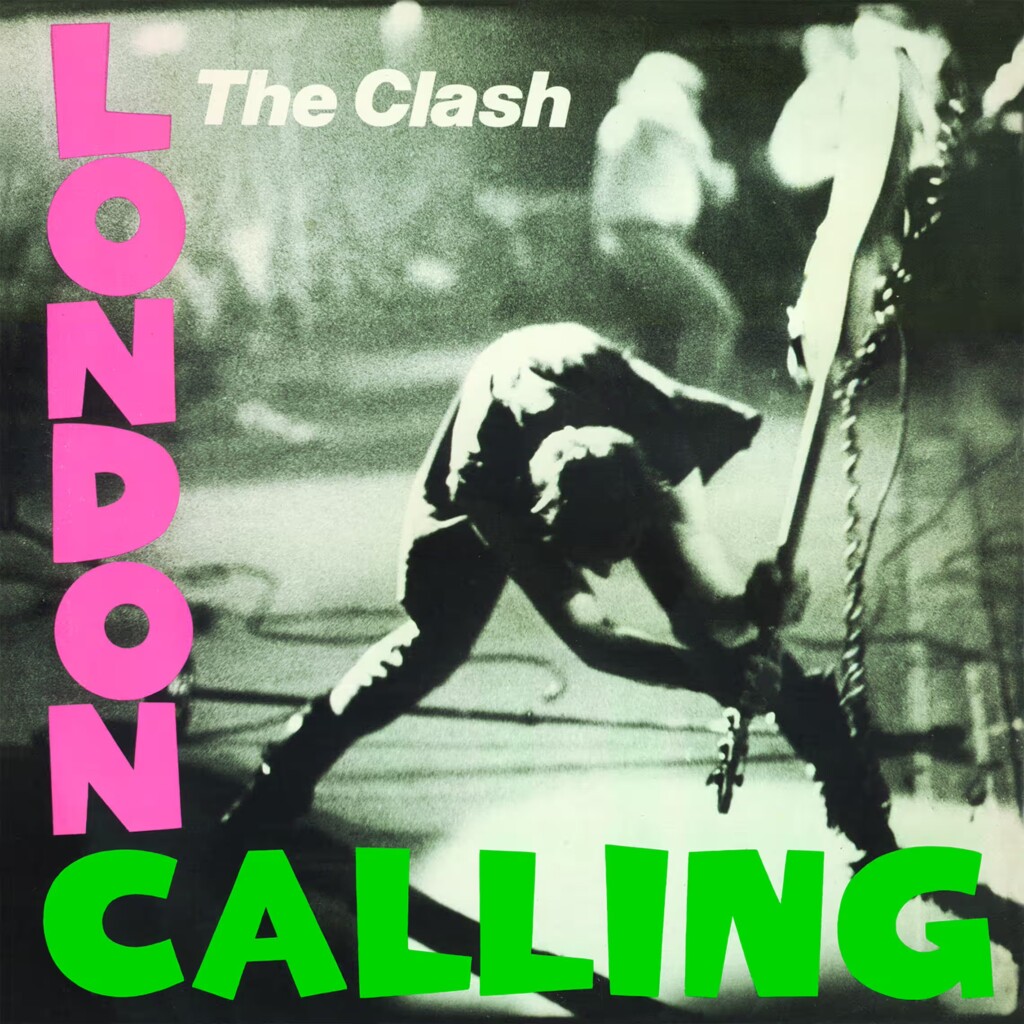
London Calling (1979) photographed by Pennie Smith (photo credit: Sony Music/ Pennie Smith)
Every Picture Tells a Story
Every punk album cover tells a story. Each is a constructive interaction of the music, art, soul, and ethos of a culture that emerged as a counterpoint to corporate and political conformity. The record label behemoths were releasing albums with covers that were extensions of the marketing package.
The 1977 Hotel California Album by The Eagles (a corporate arena rock money machine) featured a picture of an idyllic sunset with palm trees swaying in the breeze and the steeple of an old mission church. In the same year (1977) The Sex Pistols- Never Mind The Bollocks, Here’s the Sex Pistols featured a cover designed by Jamie Reid with a neon pink and yellow background and letters that looked like cut-out ransom note words. The iconic covers of punk album art tell the stories of a culture.
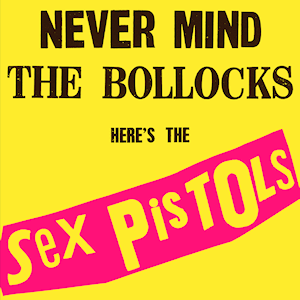
The Sex Pistols- Never Mind The Bollocks, Here’s the Sex Pistols Album (1977) (photo credit: Warner Records/ Jamie Reid)
Punk Festivals: Capturing the Spirit of Rebellion Through the Years
The DIY spirit of Punk Festivals has been a fundamental foundation of punk rebellion through the years. Discussions and arguments over which was the “first” punk song, band, club, and festival continue to be the subject of heated debate.
In 1974, the music rebellion exploded at CBGB OMFUG (an acronym by the owner that meant Country, Blue Grass, Blues, and Other Music For Uplifting Gormandizers) on the Lower Eastside of NYC. Bands featured on the now-hallowed stage space featured The Ramones, New York Dolls, and through the years Patti Smith, Blondie, Television and a who’s who of the punk scene. These performers proudly referred to themselves, their music, and their fans, as PUNK.
Everyday a Punk Festival
In 1976 what was billed as the “First European Punk Rock Festival” was held in France. The Sex Pistols and The Clash were scheduled to play at the festival held in Mont de Marsan but bowed out in a dispute with organizers.
This First European Punk Rock Festival featured Eddie and the Hot Rods, a London Pub band. The Damned were the only recognizable punk band of the original guard to appear, the rest of the “punk” bands were local DIY bands who shunned corporate rock. The festival proved that the spirit of rebellion was alive and growing.
Although the title was technically correct because it was the first punk festival presented in Europe, it was not the first for PUNK. That honor belongs to CBGB which held a month-long festival in the summer of 1975. The CBGB Punk Festival featured 40 DIY bands that represented the rebellious spirit of rock and captured the attention of the Village Voice (The Voice), at that time it was an underground free newspaper, not the corporate behemoth that it became in later years.

CBGB (PHOTO CREDIT: The New York Times)
The CBGB Punk Festival and The Voice article put New York Punk on everyone’s lips. The bands that played at the festival along with regular players in CBGB anointed the punk scene into the realm of serious art.
Punked for a Cause
The rebellious driving chaotic rhythms and existential lyrics of punk music were in direct conflict with the deep pockets of corporate rock promoters and record labels. Punk staked its place in the music festival scene with a series of free festivals called the Deeply Vale Festivals in England, 1976-1979.
Festivals that were free and dedicated to political causes and changing society fit in with the ideology of PUNK. Rock against Racism festivals were held from 1976 -1982, while Rock Against Sexism began in 1978, both are examples of Punk Festivals that capture the spirit of rebellion.
Among the festivals to feature punk or morph into punk-centric showcases is the longest-running festival, Warped Tour. It earned a reputation as the longest-traveling rock festival running from 1995 through 2019 with venues across North America and Australia.
Cheers to Punk
Rebellion Festival, held since 1996 in England, is a testament to the punk rock that emerged from the clubs in Boston, NYC, and London. It is a living epitaph to the punk that Jello Biafra, lead singer of the Dead Kennedys acknowledged when he said, “Punk Rock will never die until something more dangerous replaces it.”
Michael Grecco was an ever-present artistic photographer who documented the growth of punk. He captured the New York to Boston club scene as well as timeless candid portraits of the rebellious spirit of punk. He has curated a special collection of his photographs in the Days of Punk, an essential punk tome. Selected works by Michael Grecco are available as high-quality prints in discerning galleries around the world.
The Symphony in Stillness: Capturing the Sonic Energy of Punk in Photography
The stages of punk emitted adrenaline-fueled turbulence of creative electricity. The sonic energy of punk in photography is captured in the symphony in stillness. Celestial juices crossed with existential surges shaped the grit, sound, lifestyle, look, vocabulary, and edge, along with the heart and soul of the punk movement. Described as anti-establishment by the establishment, punk was not that at all. It was a rebirth of a symphony in motion fueled by music, the lifestyle of a new brand, and emerging culture.
Punk Lives
The sound of punk was raw, It was fast-paced songs that were the soundtrack of a culture. Punk was a new wave of music that spawned a lifestyle. It was spitting in the eye of the glamour and glitz of disco while laughing in the face of the sellout counterculture of corporate arena rock.
Punk music was the embodiment of rage against the status quo. It was the reincarnation of individual expression. Marky Ramone put it this way, “Punk rock is being honest, believing in yourself, and doing what you gotta do. That’s all.”
Punk is a dynamic frantic energized expression of a new world order with the chords and beats of the primal music of mind, body, and soul. It gave voice to the alienated generation who scoffed at the psychedelic utopian illusion of the counterculture and laughed at the disco balls, mirrors, and shameless narcissism of Studio 54 and Faces.
Michael Grecco experimenting with new angles, apertures, lighting, and shadows created photos that captured the energy of punk. Punk lives in the stillness of the 35 mm photos of Michael Grecco. In these snapshots of energy, the blistering guitars, thunderous drums, and primal shouts of those escaping conformity can be heard.
Capturing the Sonic Energy of Punk in Photography
Michael Grecco lived on the Boston to New York Punk music shuttle that produced iconic legends. Fate and professional prowess put Mr. Grecco at the infamous stages of the birth of Punk at CBGBs in New York City, and The Rat in Boston. As a friend, fan, and professional music photographer, Mr. Grecco documented the 35 MM dreams of punk in living black and white and color photographs.
Today he undertakes the monumental task of curating the thousands of images of the unique history of Punk. Captured moments in time from the shutter of Michael Grecco include stage performances of sweat-drenched bodies reaching into the depths of their souls and visions of their minds as they create, perform, and live.
Mr. Grecco had unparalleled access to the mosh pit of the punk revolution. Considered an ally and friend by the punk elite including The Clash, The B52s, The Ramones, Dead Kennedys, Bow Wow Wow, The Motels, New Order, Billy Idol, David Bowie, Adam Ant, Joan Jett, and others, Michael framed and recorded the light and darkness of unique moments in their lives.
Days of Punk
The symphony of stillness that captures the sonic energy of punk in the photography of Michael Grecco is now available in HD prints through selected art galleries. Along with the art gallery quality prints, Michael Grecco has taken a deep dive into his treasure chests of photos that document the essence of music and its culture in the Days of Punk.
Each personally selected photo by Michael Grecco for the Days of Punk captures a symphony of stillness in a time of sonic energy in the world of Punk.
Michael Grecco mastered and continues to study and develop a unique photographic style where light and shadows are pivotal to capturing the essence of the subject. The Days of Punk documents a pivotal time in music and cultural history in stark black-and-white compositions that reflect the sonic energy of punk in solitary symphonies of silence.
Visualizing the Punk Influence on Urban Culture
Punk influence on urban culture is best manifested in the late 1970s. Musicians from the garages of the suburbs to the industrial wasteland of decaying inner cities were questioning society’s rules, authority, and the corporate structure of music. The path to the recording studios and stages was tainted by the capitalists of conformity. Meanwhile, the world was in disarray. It offered an uncertain future even to those who towed the corporate line.
Punk appeared from a new ethos of do-it-yourself, anti-authoritarianism, anti-corporate greed, and anti-consumerism. The blazing energy of quick repetitive full chords supported by remedial beats and impassioned lyrics transcended the melodies of top 40 airplay.
The DIY Punk Photography of Michael Grecco
The Punk movement was the breath of change. Unlike the hippies of rock who became lost in a haze of color, Punk music was simple, forceful, and to the point. It was a handful of power chords, the sound of action. It was as plain as black and white, no innuendo was needed. This was an urban culture responding to the establishment woes of the world, faltering economies, wars, famine, and hopelessness. “I Want to be Sedated” was the anthem written by Joey Ramone, Dee Dee Ramone, and Johnny Ramone for an urban culture that lived in the predawn hours of clubs far from the clutches of corporate rock and disco.

Joey Ramone of The Ramones photographed by Michael Grecco.
Deeply immersed and affected by the DIY ethos and quickly befriended on and offstage by the Punks from Boston to New York, Michael Grecco created a raw visual testament of the Punk influence on urban culture.
The Canvas of Rebirth
Punk DIY with its anti-establishment fervor naturally navigated the urban decay of abandoned buildings. Cast-away buildings without the embellishments of power, money, and real estate law became the headquarters for the urban culture of Punk.
Michael Grecco focused his lenses, adjusted for lighting, angles, and framed photos which was a living testament to visualizing the punk influence on urban culture. Reclaimed industrial spaces became home to Punk creators. Music, graffiti, art, poems, and street theater were a part of the urban culture of punk.
Beyond the stages and underground club scene, punk was transforming abandoned warehouses, and empty retail spaces creating the streets of punk, an urban culture itself. Michael Grecco captured the sweaty bodies of performers on and off stage, he also captured them in their natural habitat.
Graffiti was the art of punk. Derelict buildings were christened as hollow ground by the ever-present graffiti of the anti-establishment urban culture of punk. Michael Grecco was on his own DIY mission to record the canvas of rebirth in the living and working spaces of Punk.
Capturing The Persona of Punk
From the strobe lights of the stages to the reimagined spaces of the inner-city Michael Grecco created an indelible record of the Punk influence on urban culture. The persona of punk embraces a fashion style that rejects glamour. The culture embraced a style that reflected the sound, it was raw and unassuming. Leather jackets, spikes, safety-pinned clothes, and mohawks were hallmarks of the defiance of punk.
The black and white photograph of Michael Grecco was an instant match in the early dark caverns of punk clubs. Michael Grecco also used color film to photograph the evolution of punk fashion. Together the black and white and color photography from the lenses of the Grecco cameras offers viewers a comprehensive interpretation of punk.
Those interested in visualizing the punk influence on urban culture need only explore the Michael Grecco photographs now available in Days of Punk and as art gallery high-quality prints. Each Michael Grecco photograph captures the persona of punk, music, lifestyle, art, graffiti, urban home, and enduring fashion.
Exclusive Interview: A Walk Down Memory Lane with Chris & Tina from Talking Heads
In an intimate interview session, Michael Grecco had the privilege of reconnecting with Chris Frantz and Tina Weymouth, the pulsating hearts behind Talking Heads and Tom Tom Club. This wasn’t just a trip down memory lane; it was a deep dive into the personal and professional worlds of two musicians who vibrated at the heart of the punk to new wave transformation. Michael and the duo reminisced about their shared past, having first crossed paths some 40 years ago in the bustling punk scene, where friendships were forged amid the haze and craze of legendary venues like CBGB.
From Punk to “New Wave”
Chris and Tina shared the intriguing story of how “new wave” was coined—a term engineered by music executive Seymour Stein to circumvent the negative connotations of punk, thus opening the airwaves for bands like Talking Heads. The term, borrowed
from French New Wave cinema, not only helped redefine their music but also perfectly encapsulated their innovative sound, merging punk’s raw intensity with a more eclectic and experimental approach.
Early Days and Musical Evolution
Their journey from the infamous stages of CBGB in New York to clubs like The Rat in Boston was filled with vivid memories. Chris and Tina recounted their early gigs and the evolution of their sound, particularly as Jerry Harrison joined the band, enriching their music and broadening their appeal. They reflected on the vibrant music scenes in Boston and New York, recalling the unique vibe of each city and the profound impact local DJs and venues had on their career.
Beyond the Music
The conversation also touched on their current endeavors, including environmental advocacy and mentoring emerging musicians. Chris and Tina discussed the significant shifts in the music industry and the challenges and opportunities these changes present to artists today.
A Legacy of Authenticity and Innovation
Through Grecco’s lens, we see more than icons; we see the genuine individuals behind the music. His photographs capture Chris and Tina not only as pioneering musicians but also as storytellers and activists, continuously evolving and inspiring. This in-depth interview is a treasure trove of history, personal anecdotes, and the enduring spirit of two of music’s most influential figures. For those who appreciate the raw, authentic roots of punk and new wave, and for anyone interested in the intersection of music and cultural change, this interview is a must-watch.
Catch the full interview on our YouTube channel to explore the rich narratives and vibrant personalities of Chris and Tina, and stay tuned to Days of Punk for more stories, revelations, and intimate portraits of the people who have shaped not just a genre but a way of life.
Punk Icons and Their Untold Stories: The Human Side of Musical Legends
Punk icons and their untold stories, the human side of musical legends is a great title. Who among the writers, interviewers, disc jockeys, photographers, fans, lovers, family, and friends can tell the story about the human side of musical legends? Each can tell a version; nobody can tell the whole story. Stories like essays, articles, interviews and even statistics are inherently biased, only a photograph is worth a thousand words.
Unbiased Essence In Black and White
Can anyone capture the spirit of the energy that fed the unapologetic individualism of the 1970s that was Punk?
Michael Grecco was perfectly positioned to capture the unbiased essence in black and white of the Punk icons and the human side of these musical legends. He was assigned to cover the the New York and Boston punk scene for a music magazine as a photographer. He was of the same age as those who were becoming icons on the punk scene and was welcomed with almost unrestricted access onstage and off stage.
The photographic record of punk created by Michael Grecco delves into the deepest personal narratives of intimate aspects of the off-stage lives of the music legends who were the icons of PUNK. The lenses and film of Michael Grecco captured and became one in the same with punk. He created an untainted intimate perspective beyond the public persons.
He has endeavored to personally curate the thousands of negatives that he shot of punk icons such as The Ramones, The Clash, Adam Ant, Wendy O. Williams, The Sex Pistols, Johhny Rotten, Billy Idol, the Dead Kennedys, The B52s and so many of the pillars of the Punk movement.
Where Everybody Knows Your Name
Because he was of their generation and was consciously pursuing his art of photography, his work became recognized and accepted within the inner circles of the who’s who of Punk. He knew their names, addresses and where he could find them at work and play, and everybody knew his name. His photographs were honest, creative, and most of all appreciated by his subjects.
The Days of Punk presents personally selected photos by the photographer most of which are available as fine art prints in galleries around the world. Mr. Grecco became more than a photographer to those he was covering, he was a comrade in the revolution that would change rock, art, fashion, film, poetry, television and the definition of success, self-worth and life itself.
Photographs are the Sound Salvation
In a YouTube Broadcast posted by Michael Grecco, Days of Punk, he notes in the summary, “Extraordinary and previously unseen images of punk and post-punk’s most iconic artists and bands.”
The Days of Punk large table sized book by Michael Grecco offers an in-depth unbiased look at the human side of the musical legends who were the icons of Punk. Fine art prints of photographs featured in Days of Punk are available at galleries throughout the world.
Soundtracks of Revolution: The Music That Drove The Global Impact of Punk
The global impact of Punk was driven by a sound of raw, unrehearsed intensity, it was a soundtrack of revolution. In the turbulent 1970s headlines were dominated by movements. Gay rights, women’s liberation, civil rights, the end of the utopian vision of the hippies, Roe v Wade, Watergate, the Cold War, the anti-war movement, the death of Elvis Presley and the birth of the Punk movement.
Music was dominated by corporate rock, disco and a handful of entrenched big-name musicians and bands. The hopes, dreams and visions of 60s activists gained corporate sponsors, slick ad campaigns and polished logos. The hippie revolution was being ingested by a middle-class ethos that turned everything into a bottom line of profit and loss.
A Cacophony of Power Chords
A cacophony of power chords pierced the silence of the dystopian 1970s. Emerging from middle-class suburban garages, empty industrial spaces, fringe neighborhoods, and forgotten stages was the sound of a disaffected generation.
A soundtrack of power chords backed by the beats of frenzied drumming and led by snarling; primal screaming vocals became the soundtrack of a revolution. A discombobulated movement was in fact the voice of a new generation. Inevitably Punk, like every revolution, morphed from an underground haven for the youth of angst into a powerful music influencer.
Iconic Anthems
Iconic anthems that encapsulated the punk revolution were shared around the world. The music of Sex Pistols, The Ramones, The Clash, Talking Heads, Adam Ant, Joan Jett, David Bowie, and others were recognized as a soundtrack of Punk. Their fame drove the global impact of music, the revolution, and the lifestyle of Punk.
The abandoned clubs of the 60s, Whiskey a Go-Go in LA, The 100 Club in London, Hangar 110 in Brazil, Le Gibus in Paris and CBGB’s in New York were injected with the blood of Punk. In Boston, it was The Rat, Spit, Channel, and others.
Witness to History
The Ramones cut their teeth in New York at CBGBs, considered the preeminent Punk bar. In rapid fire succession they released six albums between 1976 and 1981. These first six albums featured iconic punk anthems. They included Blitzkrieg Bop, Judy is a Punk, Rockaway Beach, Teenage Lobotomy, and I Wanna be Sedated to name a handful the dozens of songs that captured the essence of Punk as a lifestyle and a movement.
Michael Grecco was immersed in the heartbeat of the soundtrack of Punk. As a photographer for the AP, and a Boston music magazine, he had unprecedented access to performers on and off the stage. Michael Grecco used his camera to capture the music that drove the global impact of punk in photographs.
The Days of Punk, by Michael Grecco, is a testament to the transformative Punk revolution in a beautifully curated collection of vivid, iconic photographs. The personally curated photos in Days of Punk, go beyond the visual. Each Michael Grecco photograph defines the spirit, lifestyle and cataclysmic era that began in non-descript clubs and conquered an unsuspecting world.
Capturing The Music in Photographs
The fury of the Sex Pistols hit Anarchy in the UK; a searing indictment of establishment norms rings clear in the photos of Michael Grecco. London Calling by The Clash became the rallying cry for political awareness and change in the punk movement. The photographs of The Clash by Michael Grecco from this era clearly portray the aggression and urgency of the political turmoil that they were addressing.
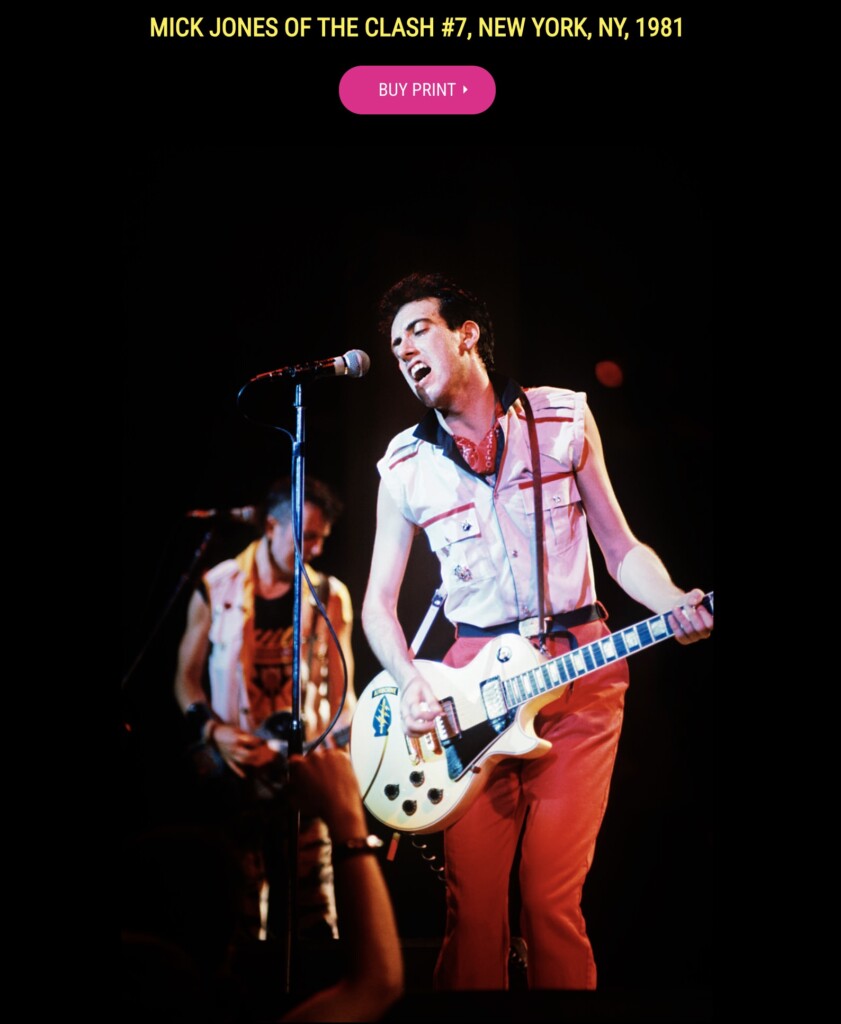
Mick Jones of The Clash photographed by Michael Grecco.
The enduring legacy, the sounds of the music and the societal changes of the era are front and center in the Days of Punk. Few history books capture the sights, sounds and emotions of a time and place like the immortal photographs of Michael Grecco in the Days of Punk.
Echoes of Anarchy: How Message of Punk Resonates in Today’s World
The echoes of anarchy, a core message of punk in all its shades continues to resonate in today’s world. In the 1950s, Rock ‘n Roll morphed out of black blues and fused with pop. It was labeled as the devil’s music and banned in towns and cities throughout the world. This made it more appetizing. It quickly took over the music scene.
Throughout the 1960s Rock ‘n Roll became the popular music of choice. Once considered the music of anarchy that would destroy civilized society, it was tamed, packaged, sanitized, and sold by record companies that soon controlled the stables of artists who produced rock ‘n roll on demand. Each incarnation was quickly packaged and sold. In the mid-1970s, rock was mainstream.
On the Fringe
In the ungentrified industrial fringe neighborhoods of decaying manufacturing lofts, bars, restaurants and empty retail and residential spaces, the next generation was sending a new message of anarchy. Seemingly overnight in ungentrified neighborhoods from the US to the UK the motto became, “DIY, not EMI.”
In music, it meant independent record labels made in basements, garages, and abandoned theaters. It was the music of the streets that became a soundtrack for a lifestyle that stuck its finger up to corporate profits and conformity.
The rusting wrought iron décor of industrial revolution era buildings in forgotten neighborhoods became home to a disaffected generation. They wanted to be sedated to black out the undemanding, phony comfort of “counterculture” money and power that co-opted rock and sterilized it.
In clubs packed to their limits, the anarchy of rock was declared. In the fringe neighborhoods bars past their time were resuscitated with a new wave of rock, the anthems of anarchy. Blitzkrieg Bop by Ther Ramones, Anarchy in the U.K. by Johnny Rotten and the Sex Pistols were resonating on the fringes and with those who were forgotten and wanted to be forgotten by a society of sameness.
Echoes Captured in a Viewfinder
The revolution was not televised, but it was captured in the viewfinder of Michael Grecco’s 35 mm camera. Assigned to cover the new wave music at the clubs of Boston, Michael Grecco discovered a new culture, the birth of Punk.
DIY music was being created on the fringes of the disco era. It was far from the profits of corporate rock, and not at all polished and packaged. Michael Grecco and his viewfinder became a fixture during the birth of punk.
Joe Strummer, co-founder of The Clash said, “Punk rock isn’t something you grow out of Punk rock is an attitude, and the essence of that attitude is ‘give us some truth’. Michael Grecco grew into Punk rock and navigated and recorded its birth and life from the brightness of the day to the darkness of the night in spontaneous black and white and color film.
The Circle Game
Jello Biafra, lead singer of the Dead Kennedy’s knew then, “Punk Rock will never die”. The circle continues as society finds itself in another time when punk’s message resonates again in today’s world. The echoes of anarchy captured by the camera of Michael Grecco can now be heard loud and clear in exquisite fine art prints.
Look into the eyes, step on to the stage and feel the excitement and energy of a time when the anarchy of freedom echoed. Subjects of Michael Grecco fine art prints include, The Clash, Dead Kennedy’s, the B-52’s, The Fabulous Billygoons, Billy Idol and dozens of the voices of punk whose echoes can be heard today.
From Stages to Galleries: How Punk Rock Photography Transcends Time
From stages to galleries, the punk rock photography of Michael Grecco transcends time. Through the eye of a 35 mm camera imprinted on black and white film and on rare occasions color Michael Grecco memorialized a historic cultural revolution.
Billy Idol said, “I don’t think punk ever really dies, because punk rock attitude can never die. If your world doesn’t allow you to dream, move to one where you can.” Michael Grecco lived this punk creed and explored the darkness and light of black and white photography in capturing the spirit, emotions, thoughts, sounds and explosions of the grit and grime of the days of punk.
On and Off the Stages of Punk
The right place at the right time describes the relationship between punk and Michael Grecco. Working as a freelancer selling news photos to the Associated Press, his style and youthful
exuberance caught the eyes of editors looking to cover the latest rock scene. Opportunity called on the young photographer who was anxious to embrace and experiment with black and white film beyond the stoic news photo. Punk was an excellent subject on and off the stage.
It was called new wave, it was called hard rock, and even called metal gone astray, it was not just a new incarnation of rock, it was a lifestyle. It was framed in the abandoned industrial urban neighborhoods. It was lived by a generation diving into the existentialism of self-exploration. To all involved, it was insulting to call it anything but PUNK.
An Attitude Transformed to a Lifestyle
David Byrne of the Talking Heads put it this way,” Punk was defined by an attitude rather than a musical style”. By this definition, it is easy to see how so many nuances of punk developed so
rapidly. From the UK to Michigan punk was exploding in all forms of art, Michael Grecco latched on to front row standing room only and captured punk on and off the stage.
The freedom that punk espoused was exactly what Michael Grecco was exploring at the time with his photography. While guitars were being smashed on stage and organs sledgehammered, morals challenged and society dusted off, Michael Grecco was breaking the bounds of traditional photography.
He felt the freedom of the punk subjects breaking the accepted protocols of framing a photo. He challenged the concept of focus, using backgrounds and foregrounds interchangeably and equally to challenge the purity of light and dark. Michael Grecco broke the chains of documentary photography with black and white 35 mm film. He framed his photos with the hallowed haunts of where punk lived, off stage, and center stage.
Time After Time
Over time Michael Grecco narrated an explosive time in art. His photos brought punk to life in the newspapers and rock magazines of the day during the 1970s and 1980s during the birth of Punk. Every photo tells the stark black and white gritty, no-holds-bar story of punk.
The iconic photography of Michael Grecco that captured the explosive light of the early days of Punk are now available in fine art prints at galleries around the world. Michael Grecco continues to curate, catalog and offer fine art prints to the generations that have and continue to embrace punk as a music, fashion, art or lifestyle. Those that sat in the hallowed bars of punk’s beginnings can experience the feeling again through of the Days of Punk Collection by Michael Grecco.
The Visual Rhythm of Rebellion: Decoding the Iconography in Punk Photography
Punk was a cultural revolution that was reflected beyond the stage, music, and lyrics. It was a movement of rebellion that was visual and captivating in Punk Photography. By the mid-1970s Rock and Roll, once the voice of rebellious youth, was quickly becoming an antiseptic corporate product to boost earnings for shareholders.
While disco, arena rock, and packaged music was making a home in the centers of commerce in New York, LA, the UK and cities around the world, Punk was carving out its anti-establishment niche in the ungentrified neighborhoods that were home to the new wave artists and musicians.
Punk embraced the raw, gritty, industrial neighborhoods that were undiscovered by corporate rock and real estate gentrification. In Boston it centered around clubs like the Underground in the Allston neighborhood, in New York, CBGBs in the East Village, in London it was the Camden neighborhood.
Although separated by thousands of miles the neighborhoods reflected the iconography of Punk. Art deco buildings in disrepair, empty lofts, industrial and discarded retail spaces, small bars with and without performance spaces were the settings for the growth of punk.
Capturing the Music Through Photographs of the Iconography of Punk
The photography of Michael Grecco was crucial in capturing the iconography of punk. Punk music can be played on a turntable, Spotify, or hundreds of other techno platforms today, it is only the photographs of the era with all the glory of its iconography that can invoke the feelings beyond the recordings.
Through the lens of his 35mm camera, the Grecco photographs captured the raw, unrepentant, grit of Punk beyond the music. The buildings, club interiors ridden with graffiti, industrial spaces turned into living places, decorative wrought iron from another time and place all lend their presence to the iconography of punk captured in the photography of Michael Grecco.
Far from the glitz of uptown funk, disco and the psychedelic light shows of corporate arena rock, PUNK was being created in the no uncertain realm of Black and White. Micheal Grecco was at the right time in place in his photographic art to capture the Punk Scene in its intimacy in vivid black and white photographs.
Punk in Black and White
Only a 35mm camera in the hands of a practiced photographer can capture the impromptu moments on the stages of clubs where punk was born.
Today Michael Grecco is curating his massive photographic collection of the Days of Punk to offer high quality prints of the punk era that he witnessed through the lens of his camera. For those who wax nostalgic about a time and place in their youth, or others who have discovered this magical time in rock, prints by Michael Grecco are living monuments to the iconography of punk.
Capturing Punk’s Defining Moments: The Artistic Legacy of Photography
Southern Michigan, New York City, Boston, LA, and London, all contributed to the birth of punk and punk’s defining moments. In the beginning, it was MC5, Iggy and the Stooges, the Ramones, Patti Smith, Flyboys, Runaways, and dozens of others who reinvented the grit, grind, and rawness of a sound and culture called punk.
Punk was the antithesis and rejection of what was happening. Disco, arena rock and pop were sterilized, punk spit in the eye of conformity with a sound that created a culture. Punk set out to destroy the normalcy that the counterculture had become, the colors of the hippies were painted black.
Throughout history, change is often documented after the fact. Few recognize the importance of the times of their lives and fail to create in the moment records. The age of Punk was not one of those times. The lifeblood, soul and raw creativity of the period transcended to every conceivable art form. Paintings, performance art, poetry, literature, theater, film, graffiti, street performances, photography and lifestyles all embraced punk as it was happening.
Michael Grecco a Black and White Punk Photographer
Michael Grecco was a freelance photographer breaking the barriers of photojournalism for Boston Newspapers and music magazines. It was perfect timing. As he was perfecting his art of black and white photography, Michael Grecco was at a time and place where he was able to capture Punk’s defining moments through the lens of his 35MM camera.
Just as Punk was a transformation from the psychedelic colors of the sixties to the stark black and white of the new punk revolution, the pioneers of photography were exploring the same. Photography as an art was taking a step back from the “living” color of the Kodak age to the depths and richness of the shadows and light of black and white photos.
Black and White photography was the medium that made Punk shine. Michael Grecco was perfectly positioned as a photojournalist who shot black and white for newspapers, an artist exploring the power of shadow and light, and a witness to a music scene that was exploding.
Patti Smith who now wears the moniker, the Godmother of Punk is still writing and performing, the Ramones released a retrospect album and today young fans play The Clash. Old school converse and black tight jeans, as well as black leather and vinyl clothing are still prized by more than one generation. There is no doubt that Punk is alive and well.
Michael Grecco has undertaken the task of curating years of punk photography. As a witness to Punk’s defining moments: Michael Grecco has produced an artistic legacy that captures the essence of the punk era. These rare Punk Fine Art Prints by Michael Grecco can now be purchased online as well in galleries throughout the world.
Punk Rock’s Influence on Modern Fashion: A Visual Journey with Michael Grecco
In the intertwined world of music and modern fashion, few genres have left an indelible mark quite like punk rock. Its influence stretches far beyond the sound, seeping into the very fabric of modern fashion. To truly appreciate this cultural synthesis, one must explore the visual chronicles of the era, particularly through Michael Grecco’s “Days of Punk” collection, which captures the essence of punk’s fashion revolution.
The punk movement, born in the gritty underground clubs of the 1970s, was not just a musical rebellion but also a sartorial one. It represented a radical departure from the norms, an outright defiance against the established fashion trends of the time. The punk aesthetic, characterized by ripped jeans, leather jackets, band tees, and an array of DIY embellishments, was more than a style; it was a statement.
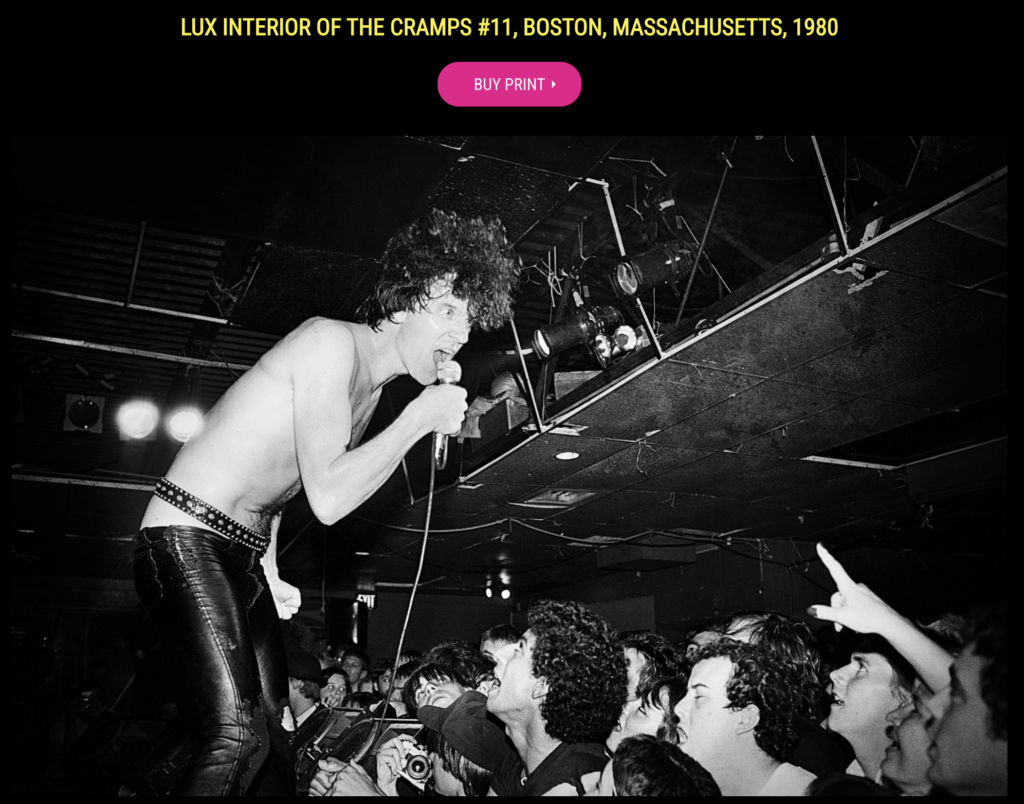
Lux Interior of The Cramps photographed by Michael Grecco
Michael Grecco’s collection takes us on a journey through this rebellious era, showcasing the eclectic and bold fashion choices that defined punk. Each photograph in his collection is a testament to the fearless self-expression that punk championed. From the spikey hair and studded leather jackets to the anarchic slogans emblazoned on t-shirts, Grecco’s lens captures the essence of punk fashion in its rawest form.
One of the most striking elements of punk fashion is its DIY ethos. This was not fashion born out of luxury brands or high-end designers; it was a grassroots movement, a form of personal expression. Grecco’s photographs highlight this aspect beautifully, showing how punk enthusiasts used fashion as a canvas for their creativity and individuality.
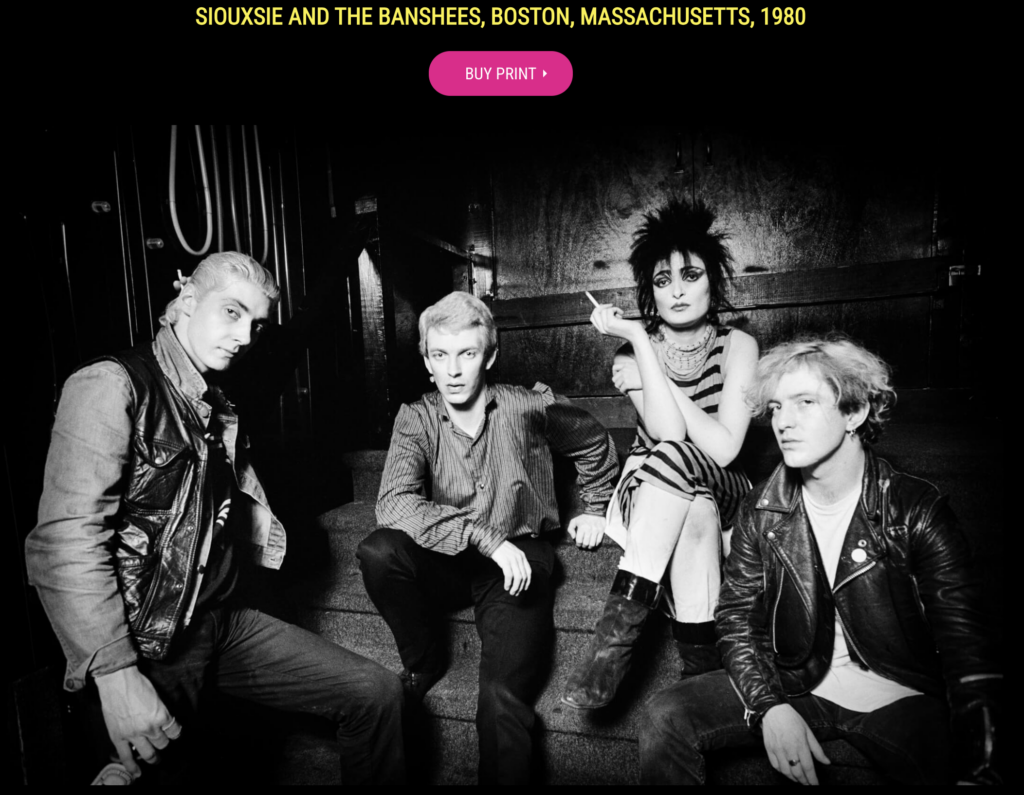
Siouxsie and the Banshees photographed by Michael Grecco
Fast forward to today, and the legacy of punk fashion is ubiquitous. The punk aesthetic has been embraced and reinterpreted by mainstream fashion, influencing designers and trends across the globe. However, the spirit of punk – its rebelliousness, its nonconformity – still resonates. It serves as a reminder that fashion is not just about what you wear; it’s about what you stand for.
Grecco’s “Days of Punk” collection is not just a visual feast for punk enthusiasts and fashionistas; it’s an inspiration. It encourages us to embrace our unique style, to be bold in our fashion choices, and to remember the cultural roots of the trends we see today.
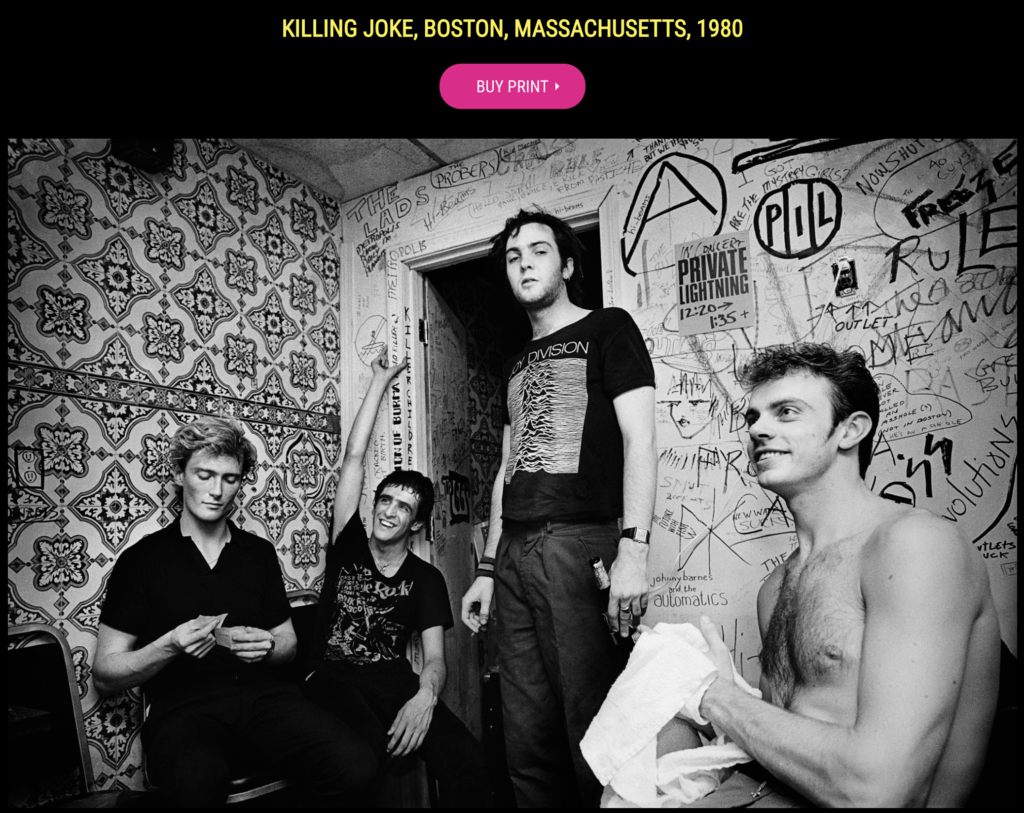
Killing Joke shot by Michael Grecco.
As we continue to explore the intersection of punk and fashion, the journey is not complete without a visit to the online gallery of Michael Grecco’s Days of Punk prints. Here, you can immerse yourself in the authentic punk era, a time when fashion was a form of rebellion. Each print in the collection offers a glimpse into the past, a piece of history that inspired what many wear today. We invite you to explore this incredible collection at Michael Grecco’s Days of Punk and perhaps find a piece that resonates with your own personal style and story. Shop now here and own a part of the punk legacy that continues to shape the world of fashion.
The Visual Story of Punk: Unpacking Michael Grecco’s Iconic Days of Punk Collection
In the lexicon of music history, punk rock stands as a defiant symbol of rebellion, an artistic upheaval against the status quo. But to truly grasp the essence of this groundbreaking era, one must journey beyond the music, into the visual heartbeat of the movement. This is precisely where Michael Grecco’s “Days of Punk” collection takes us – into the pulsating core of punk’s visual narrative.
Grecco’s collection is more than a mere assemblage of photographs; it is a vibrant chronicle of punk’s heyday. Each print in the collection is a frozen moment, capturing the raw energy and unfiltered spirit of an era that reshaped the musical landscape. These images are gateways, transporting viewers back to the gritty clubs and vibrant streets where punk culture thrived.
Kid Congo Power Of The Cramps photographed by Michael Grecco.
One of the most striking aspects of Grecco’s work is his ability to capture the authenticity of punk. His lens zeroes in on the untamed expressions of punk artists, the electrified crowds, and the candid, off-stage moments that defined the era. These are not staged representations; they are real, visceral snapshots of a movement in motion. From the sneer of a vocalist to the sweat-drenched excitement of a crowd, each image encapsulates the unapologetic truth of punk.
But Grecco’s collection does more than just document. It tells stories. Each print is a narrative piece, inviting viewers to delve into the history and ethos of punk. They speak of rebellion, of a relentless pursuit of freedom and individuality. They talk about the challenges faced by artists who dared to deviate from the mainstream, who used their music and appearance as forms of protest and self-expression.
Billy Idol photographed by Michael Grecco.
Moreover, these photographs are a testament to the enduring influence of punk. They showcase the style, the attitude, and the defiance that continue to inspire artists and musicians today. Punk was never just a phase or a trend; it was, and remains, a crucial part of our cultural fabric. And this is what makes Grecco’s collection an invaluable treasure.
For fans of the genre, collectors of music memorabilia, or anyone fascinated by the rich tapestry of musical history, owning a print from the Days of Punk collection is a unique opportunity. It’s a chance to own a piece of history, to have a tangible connection to the days when music was a riotous act of defiance.
Each photograph in the collection is more than just a visual experience; it’s an emotional journey. It’s about feeling the energy, understanding the rebellion, and appreciating the raw beauty of a bygone era. Whether displayed in a living room, a music studio, or an art gallery, these prints are conversation starters, pieces that don’t just adorn a wall but enliven it with stories and spirits.
Dee Dee Ramone of The Ramones photographed by Michael Grecco.
In conclusion, Michael Grecco’s Days of Punk collection is an immersive dive into the heart of the punk movement. It’s a celebration of the genre’s indomitable spirit and a vivid reminder of the power of visual storytelling. As you explore this remarkable collection, prepare to be transported, to feel the energy, and to live the rebellion that punk so passionately embodies.

